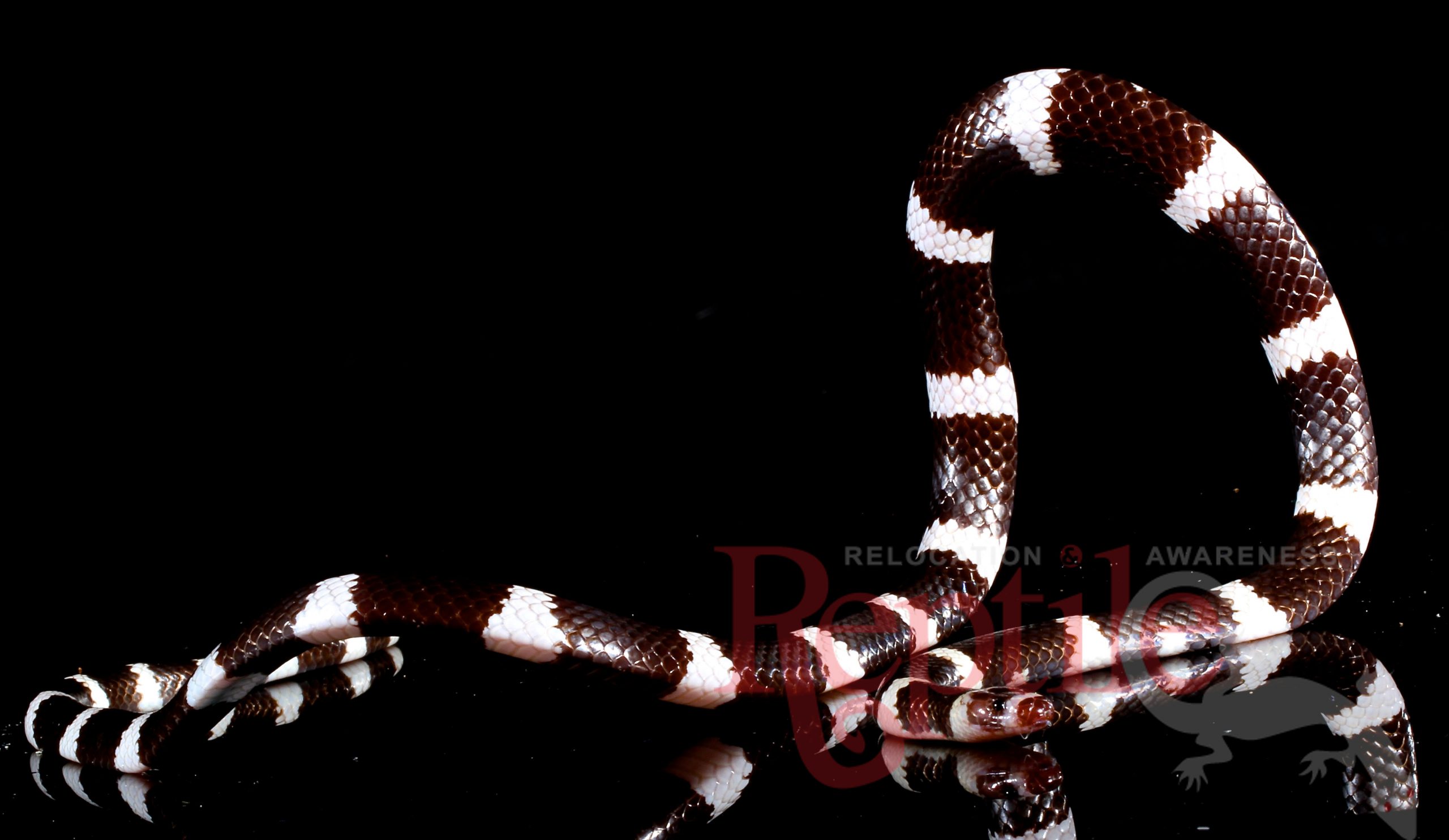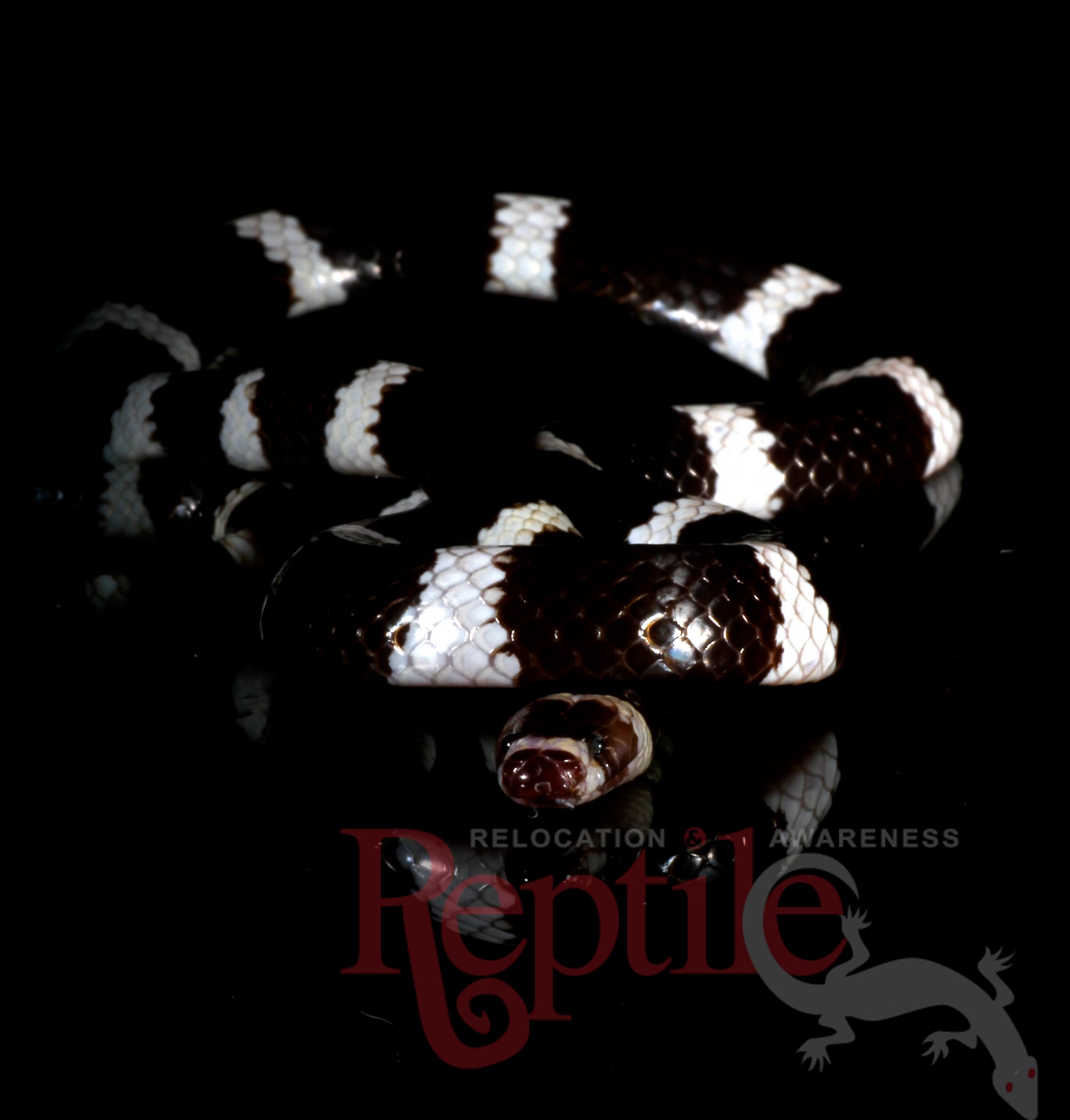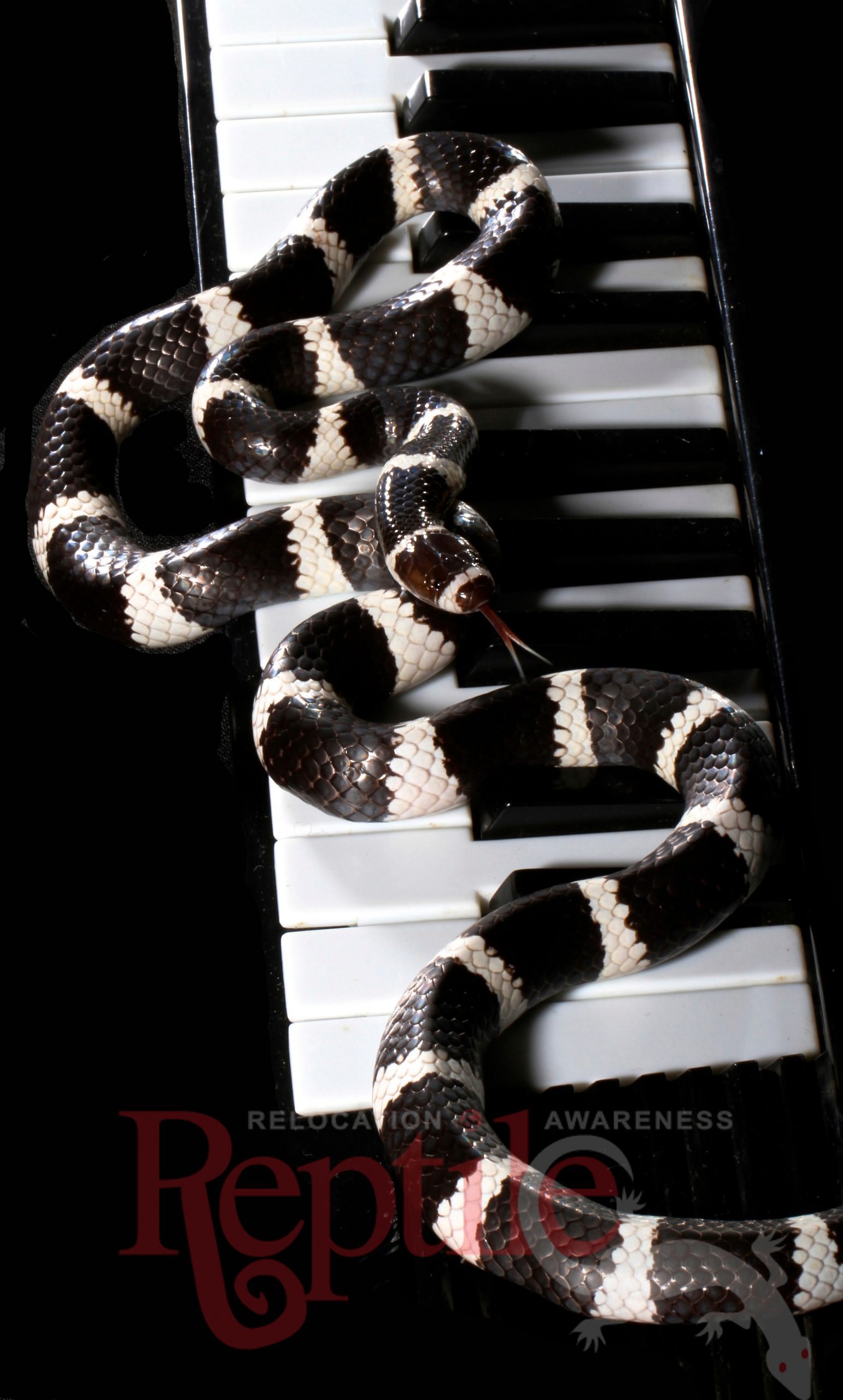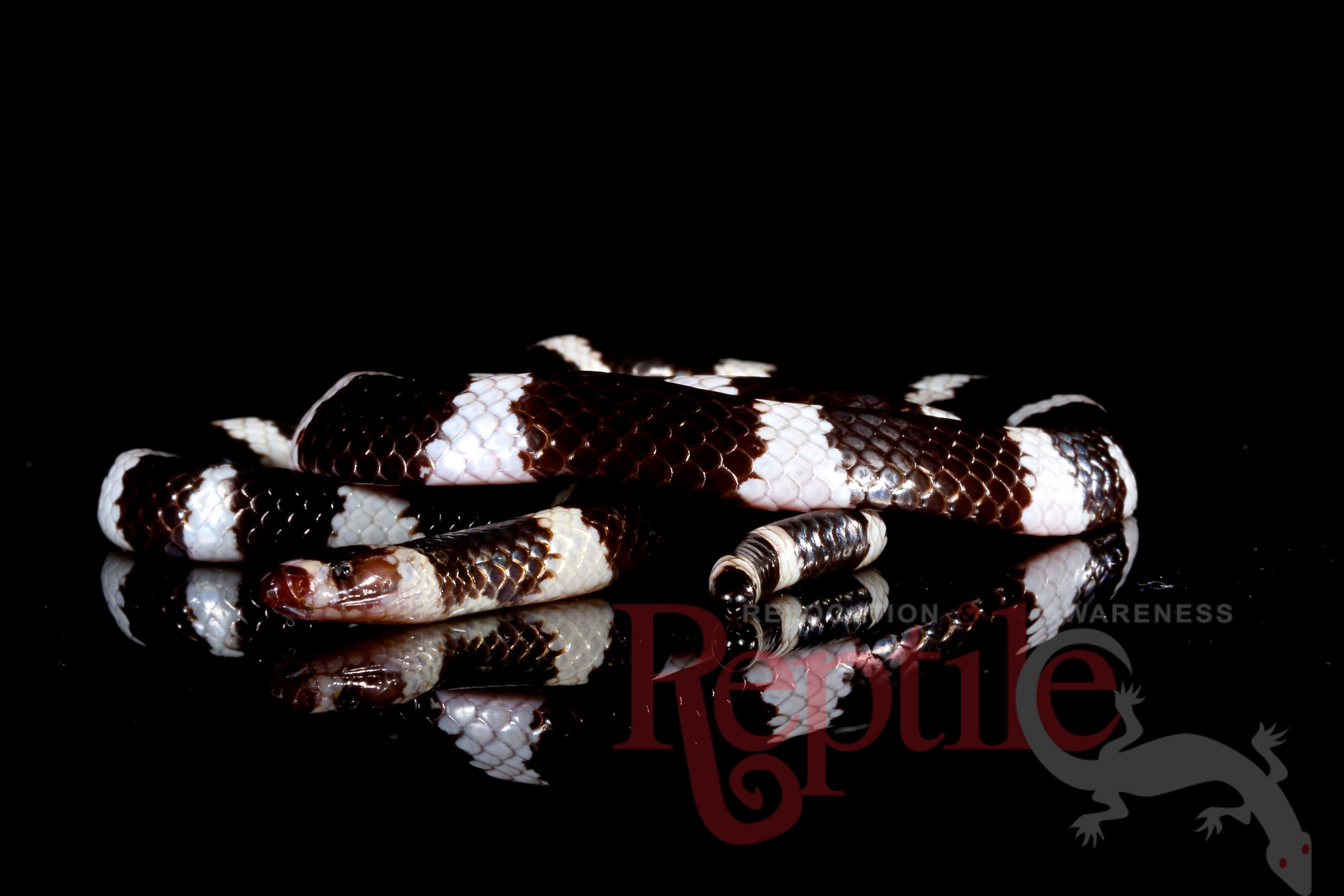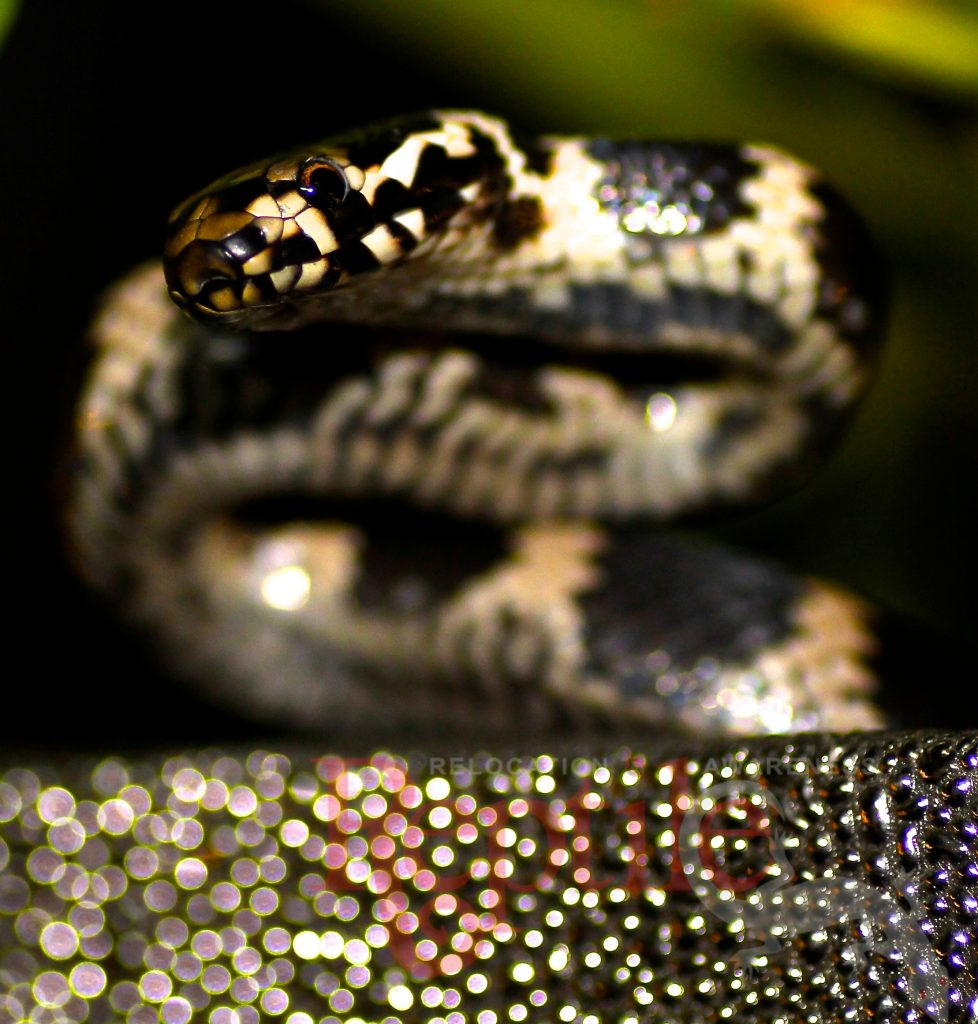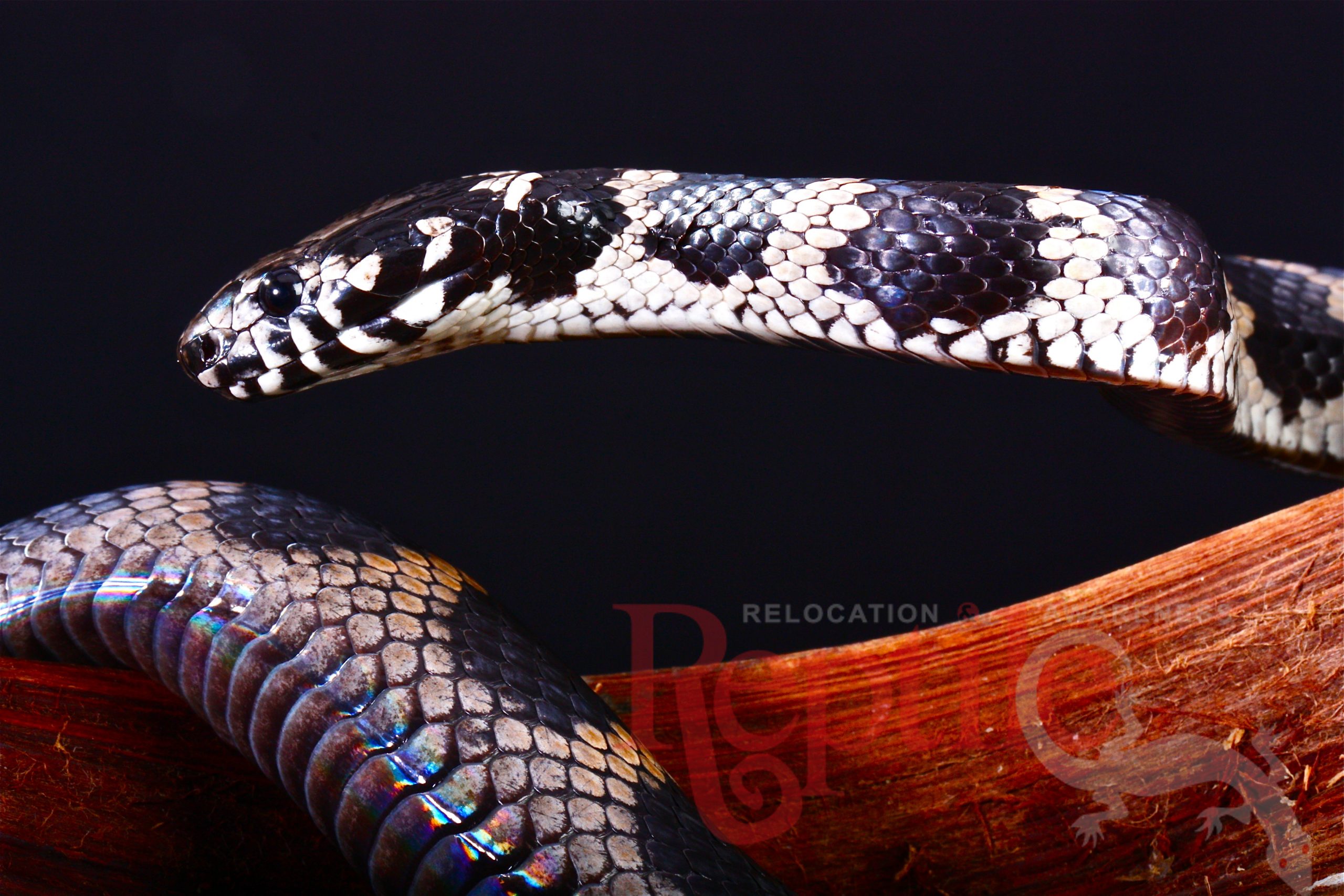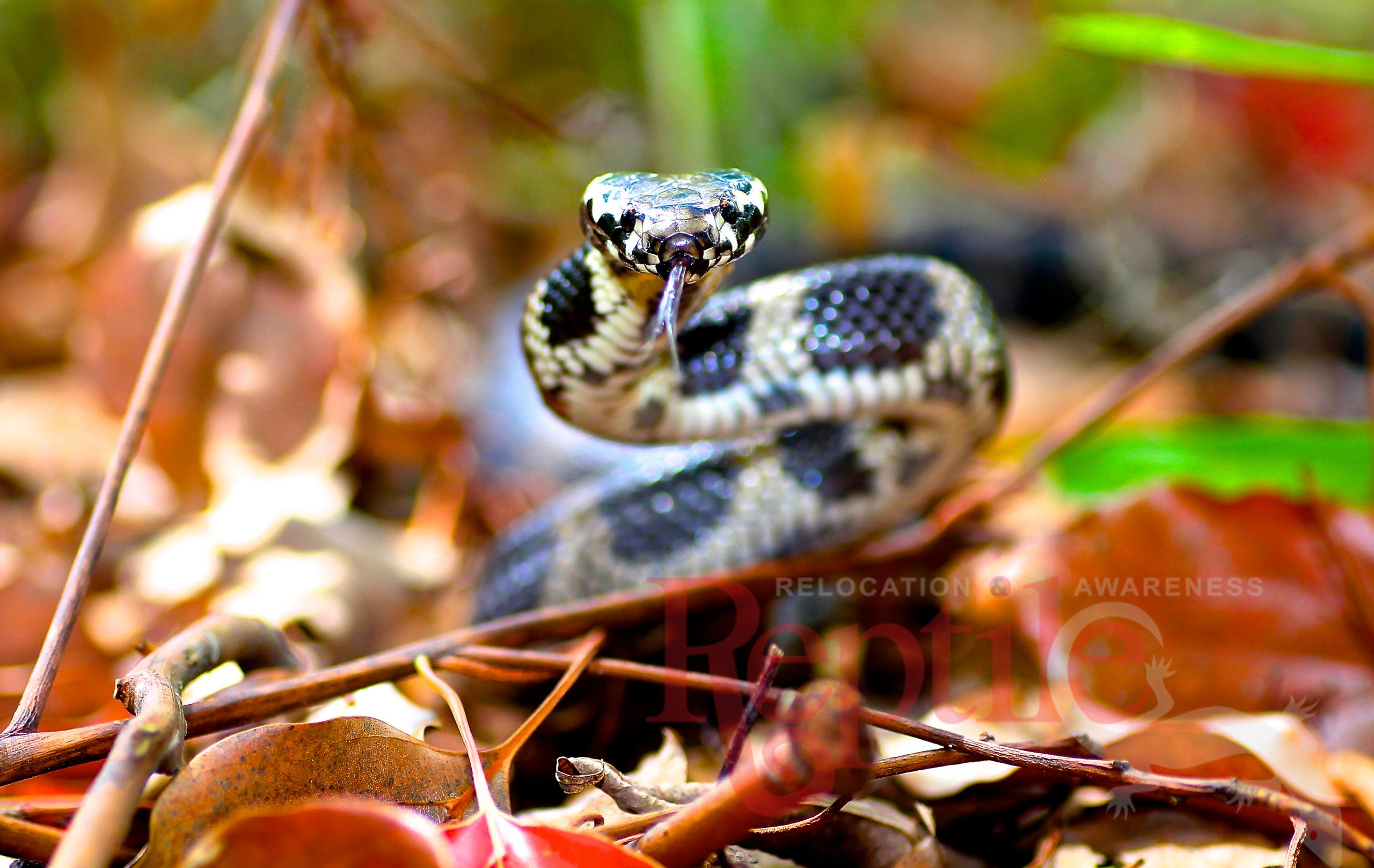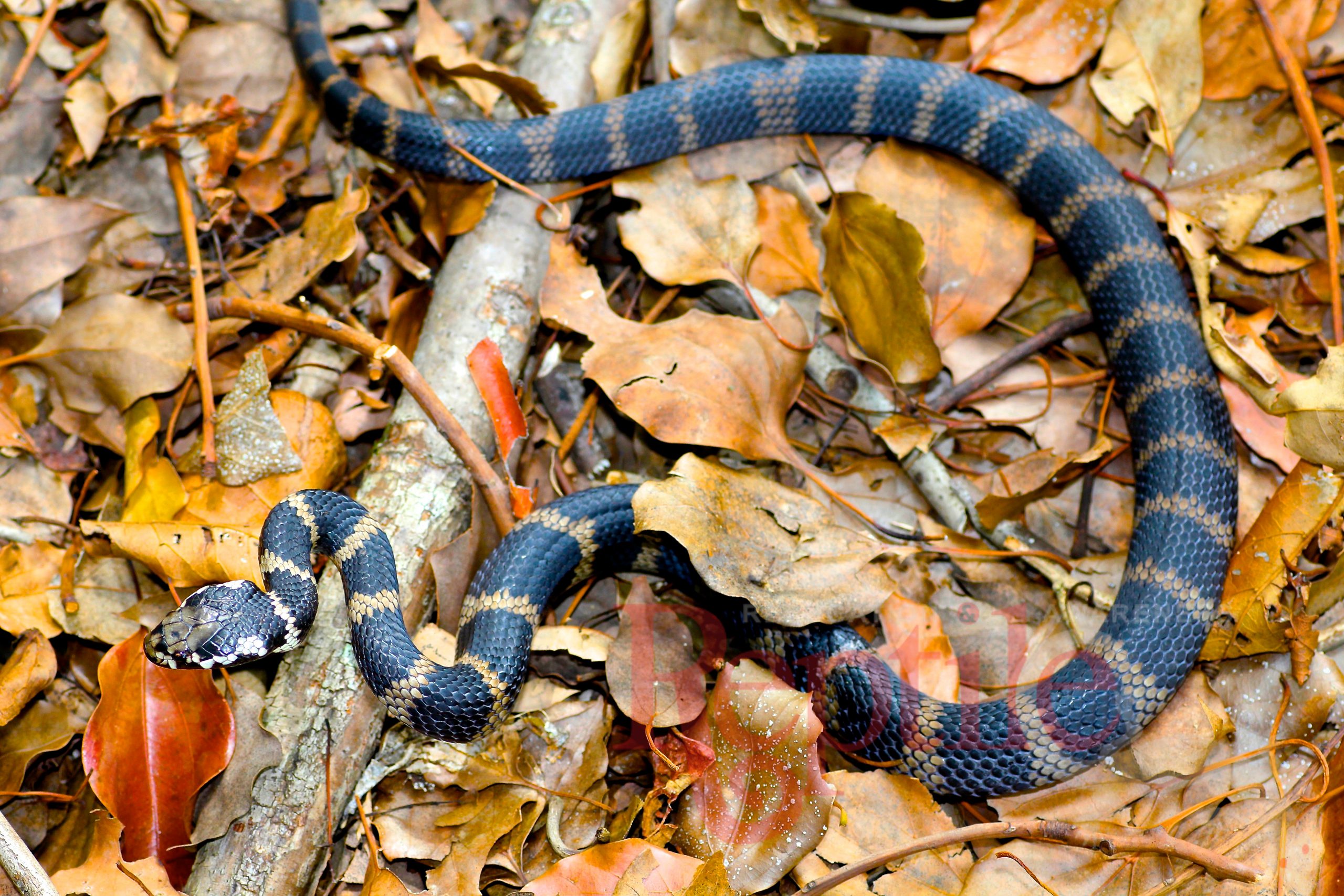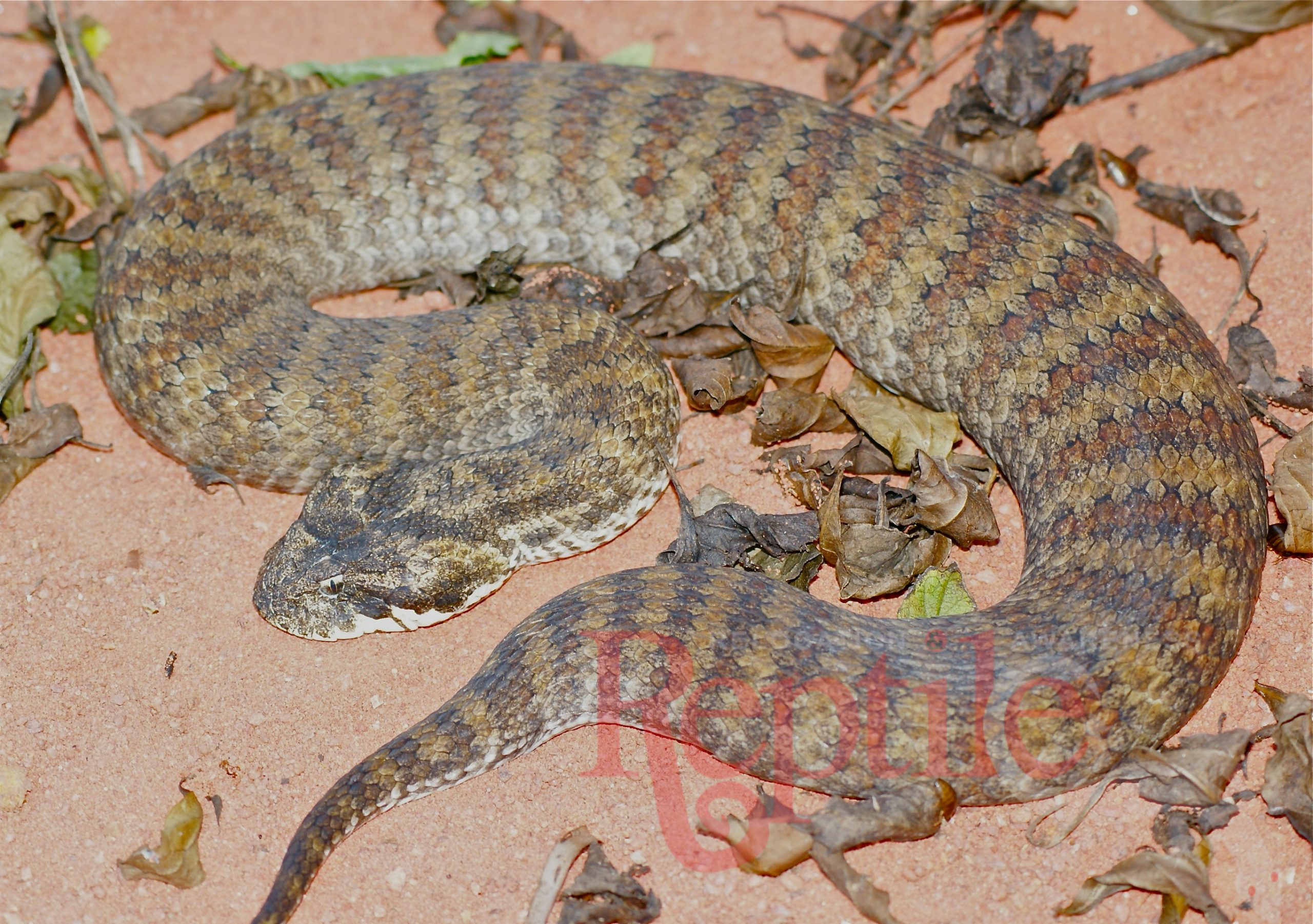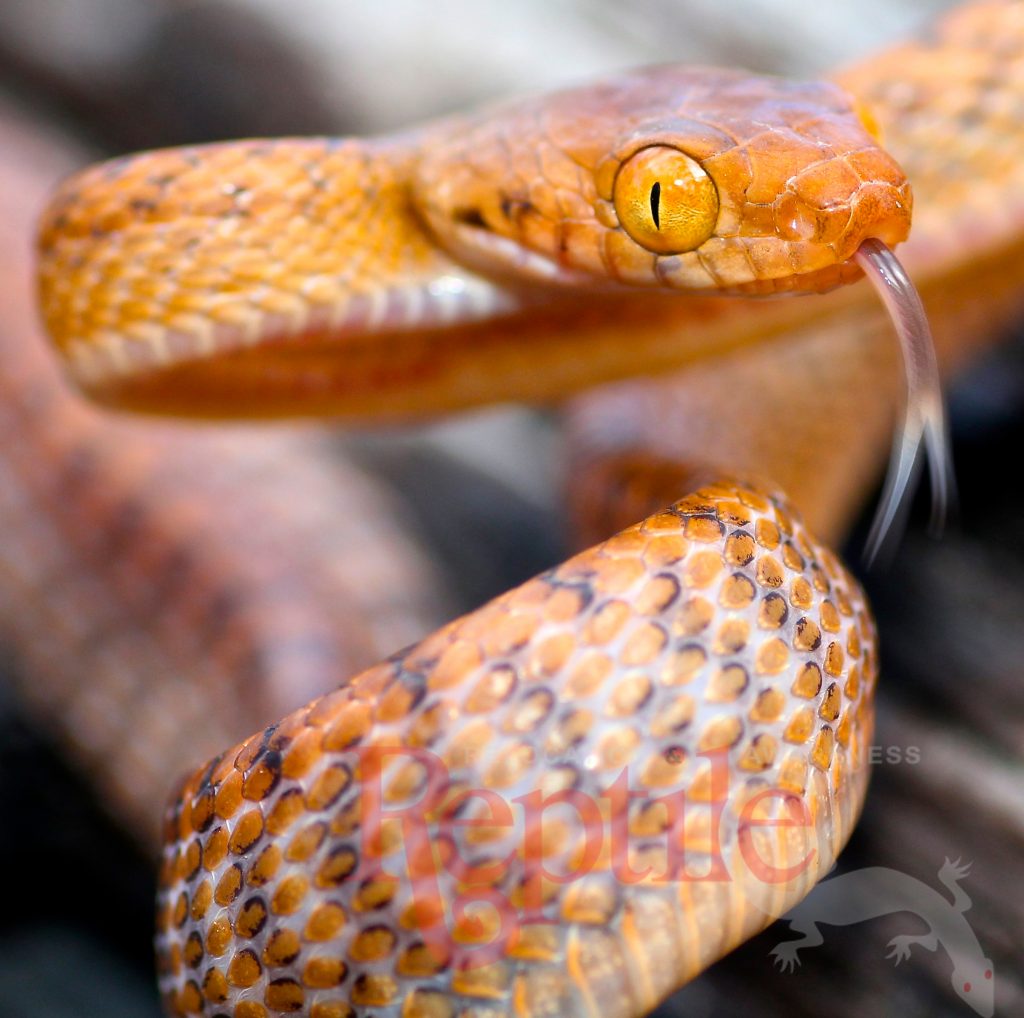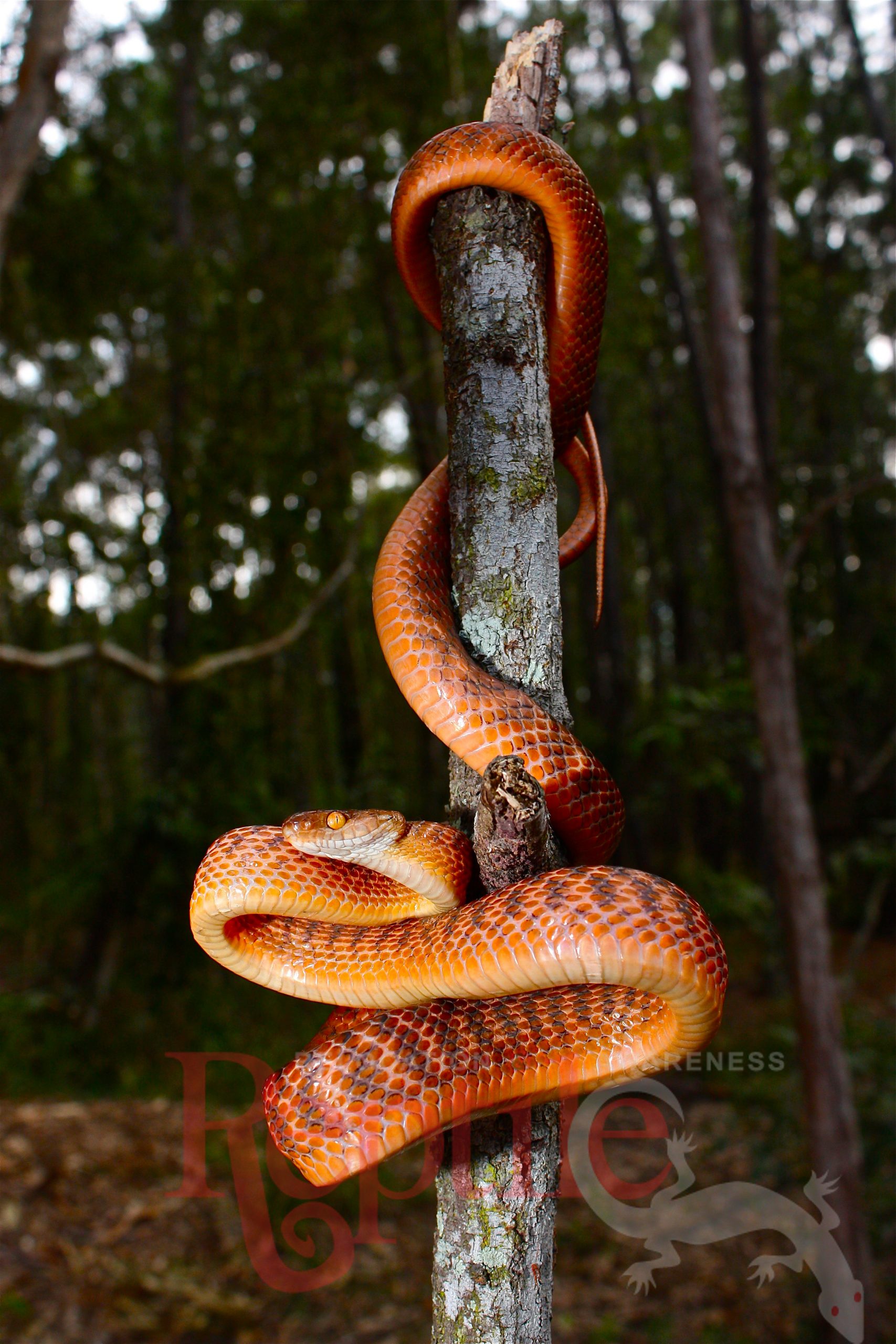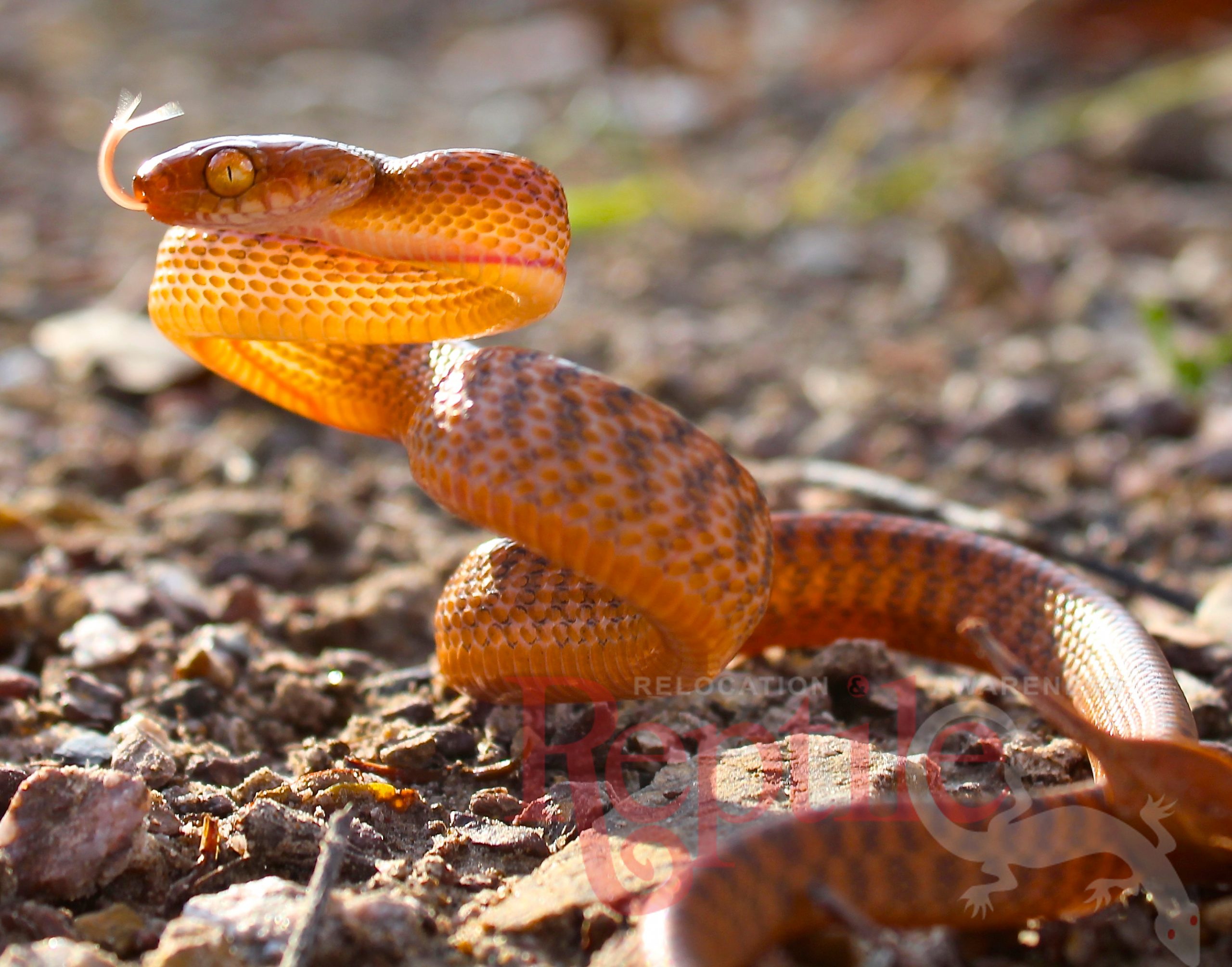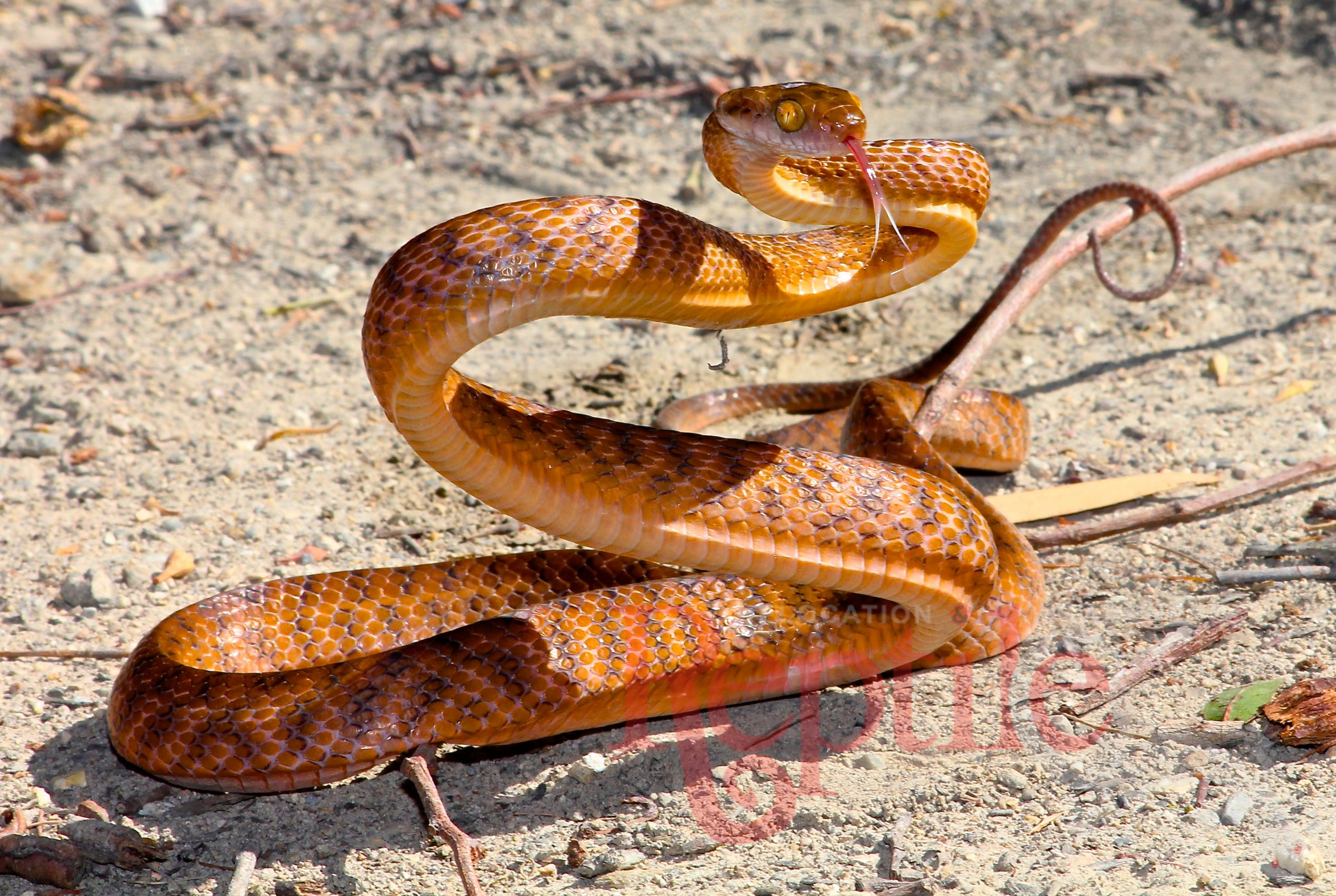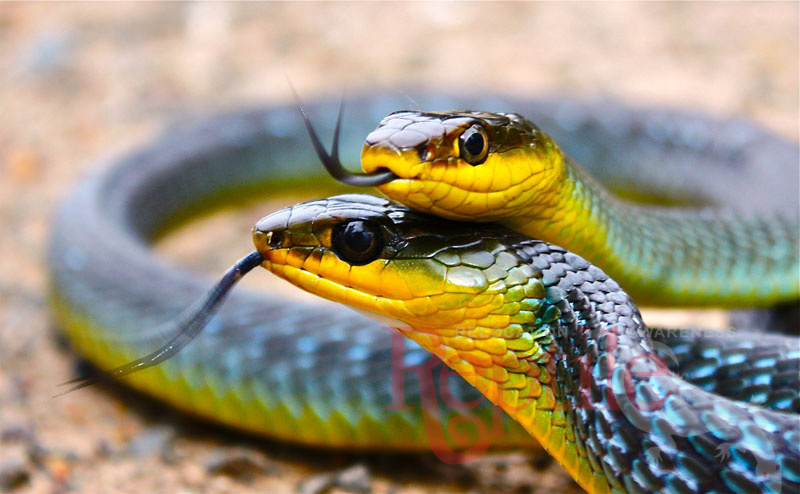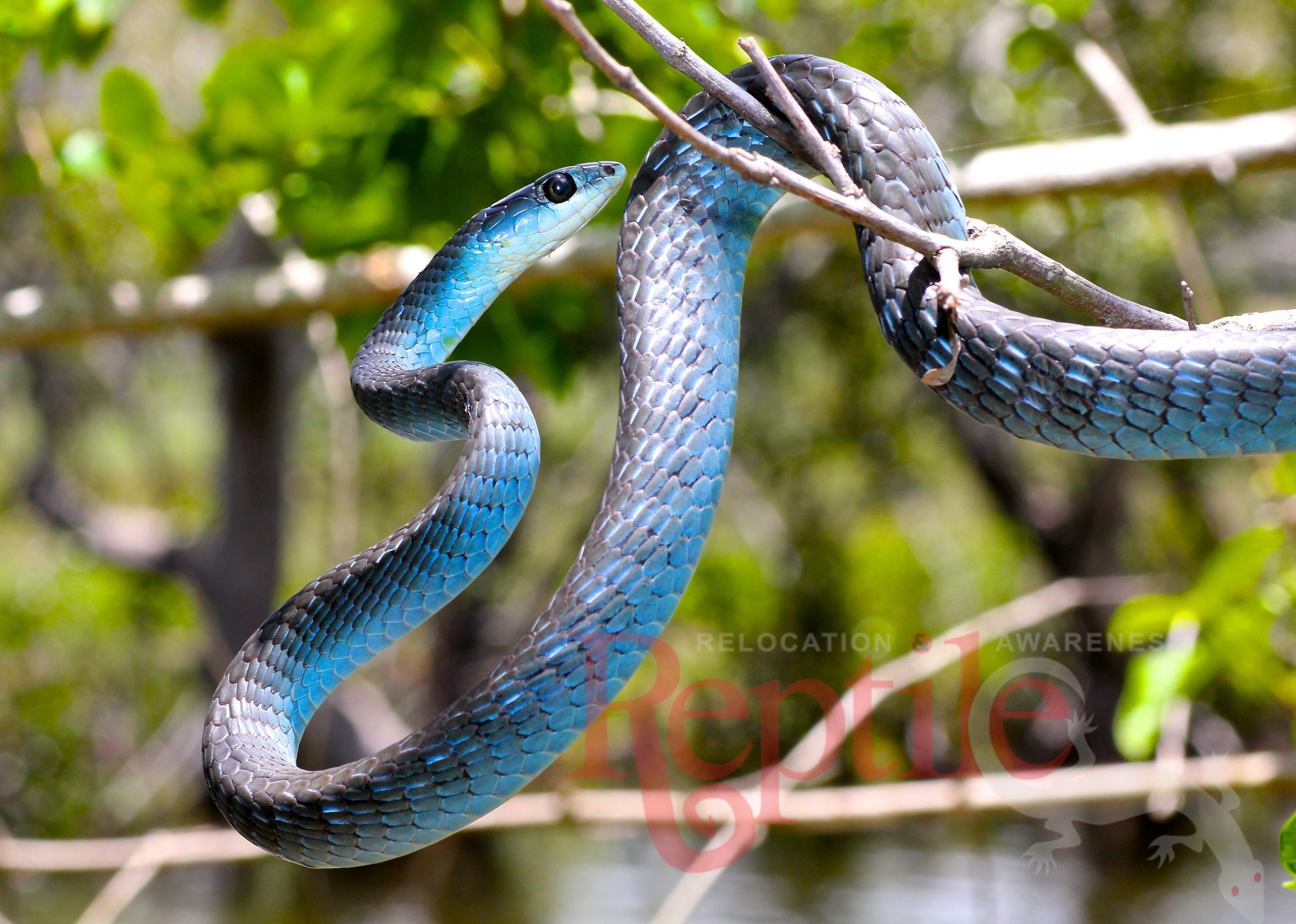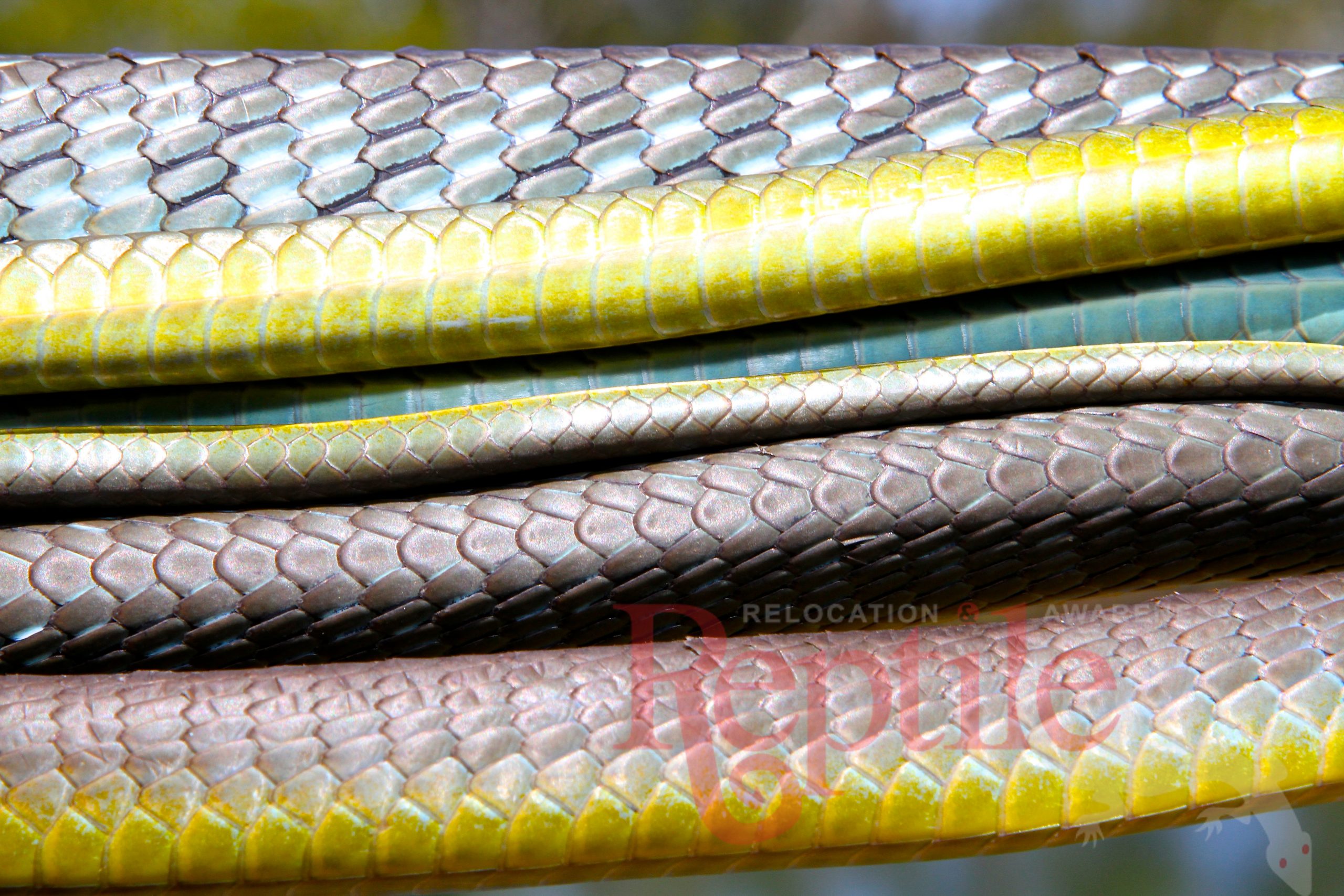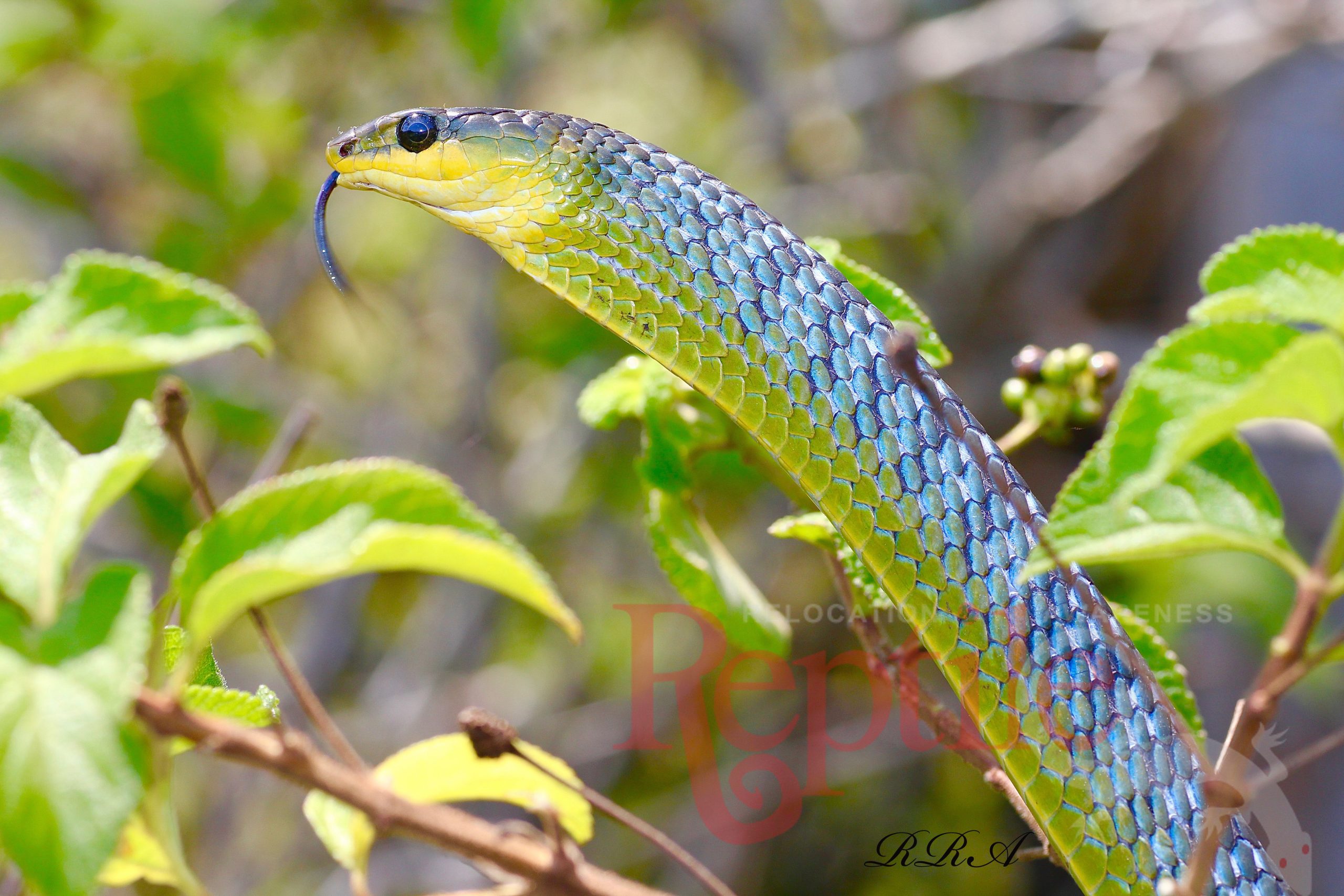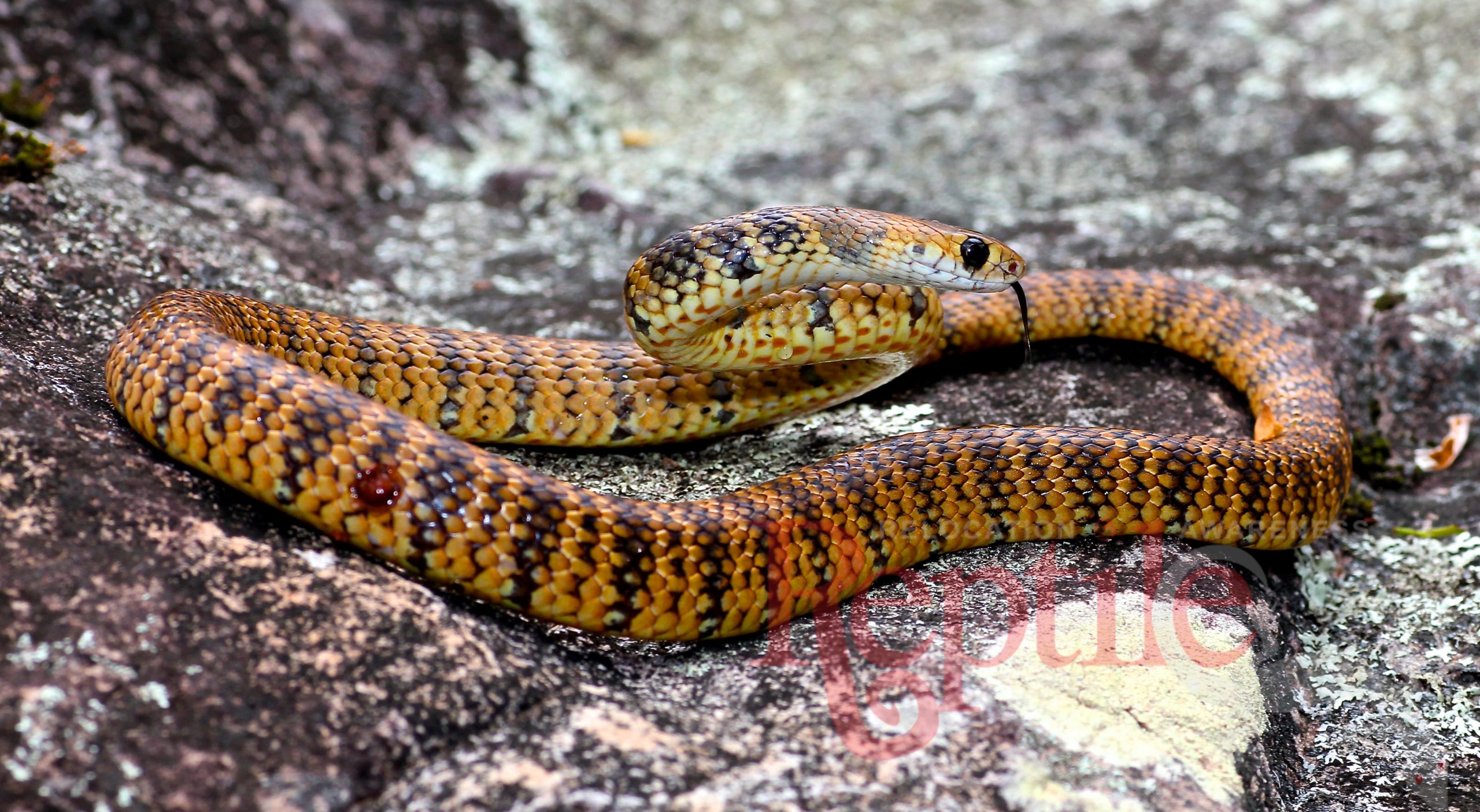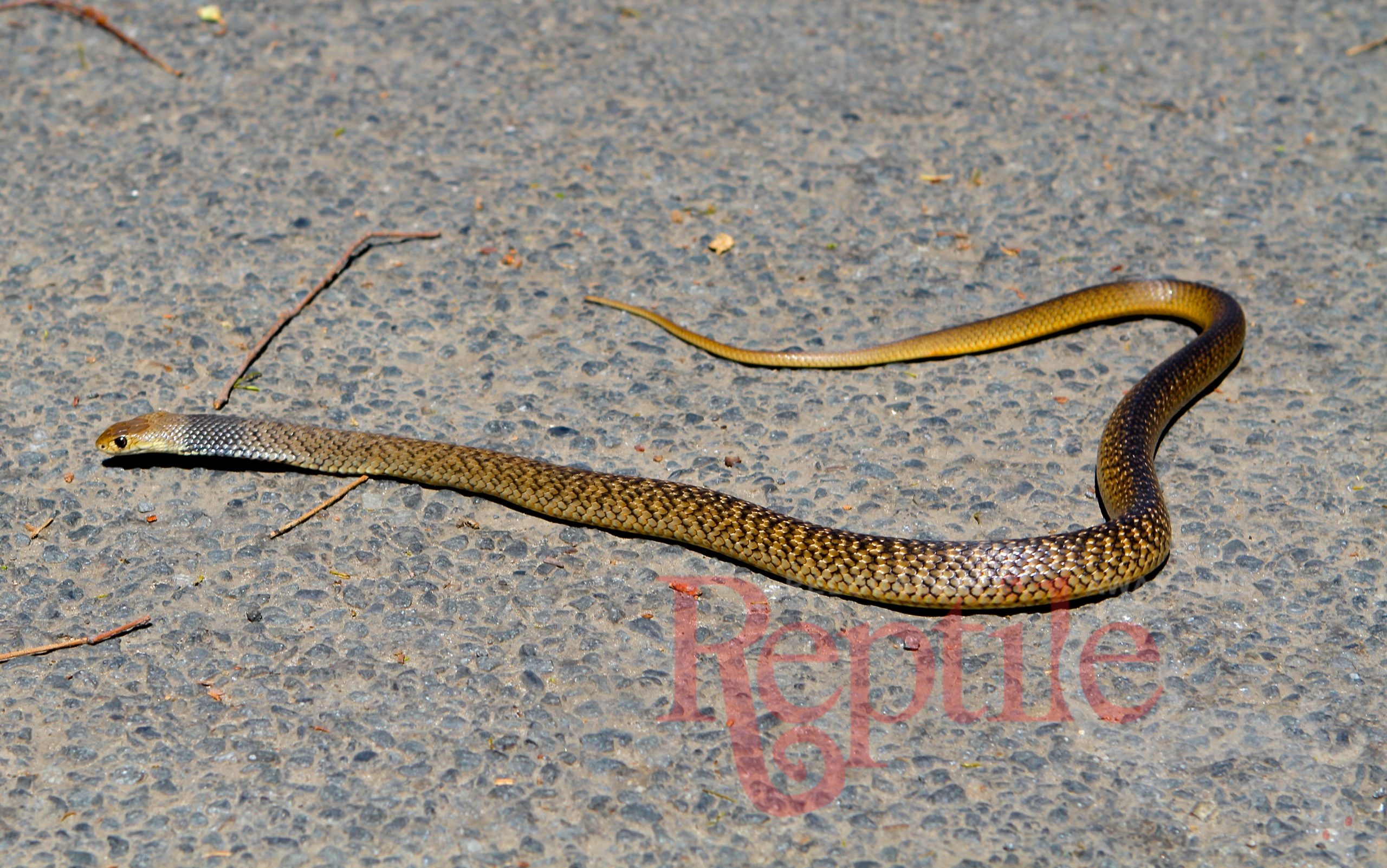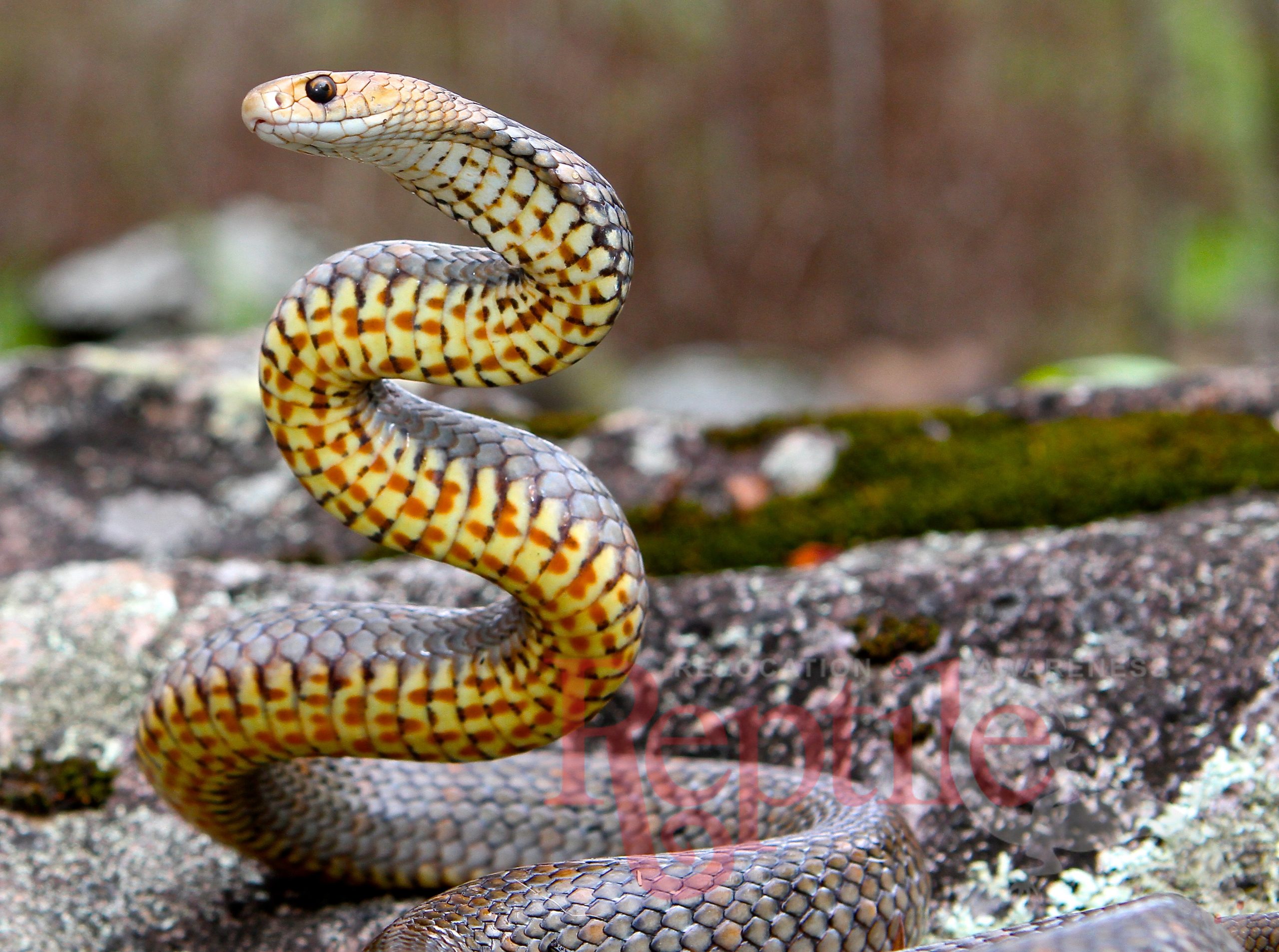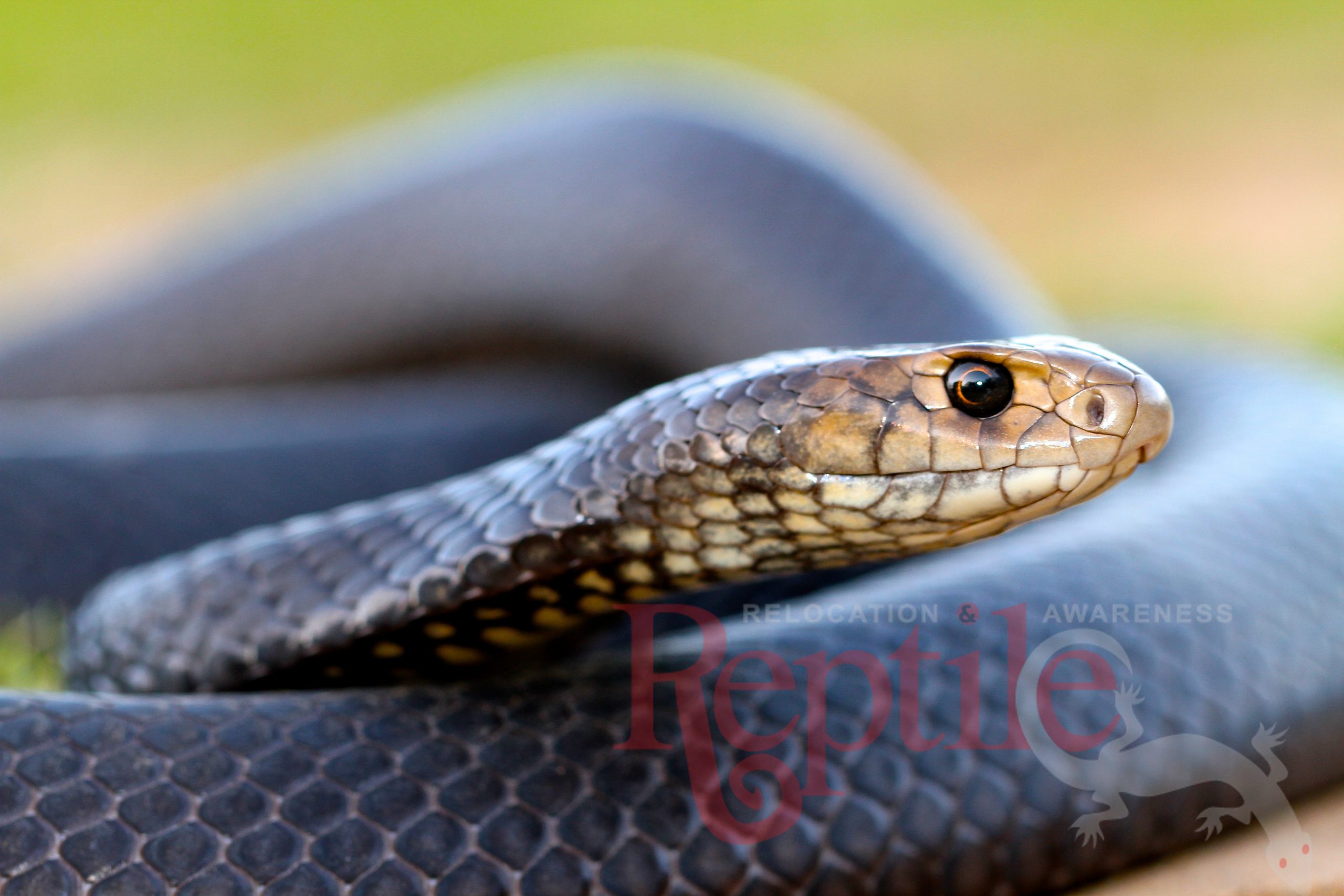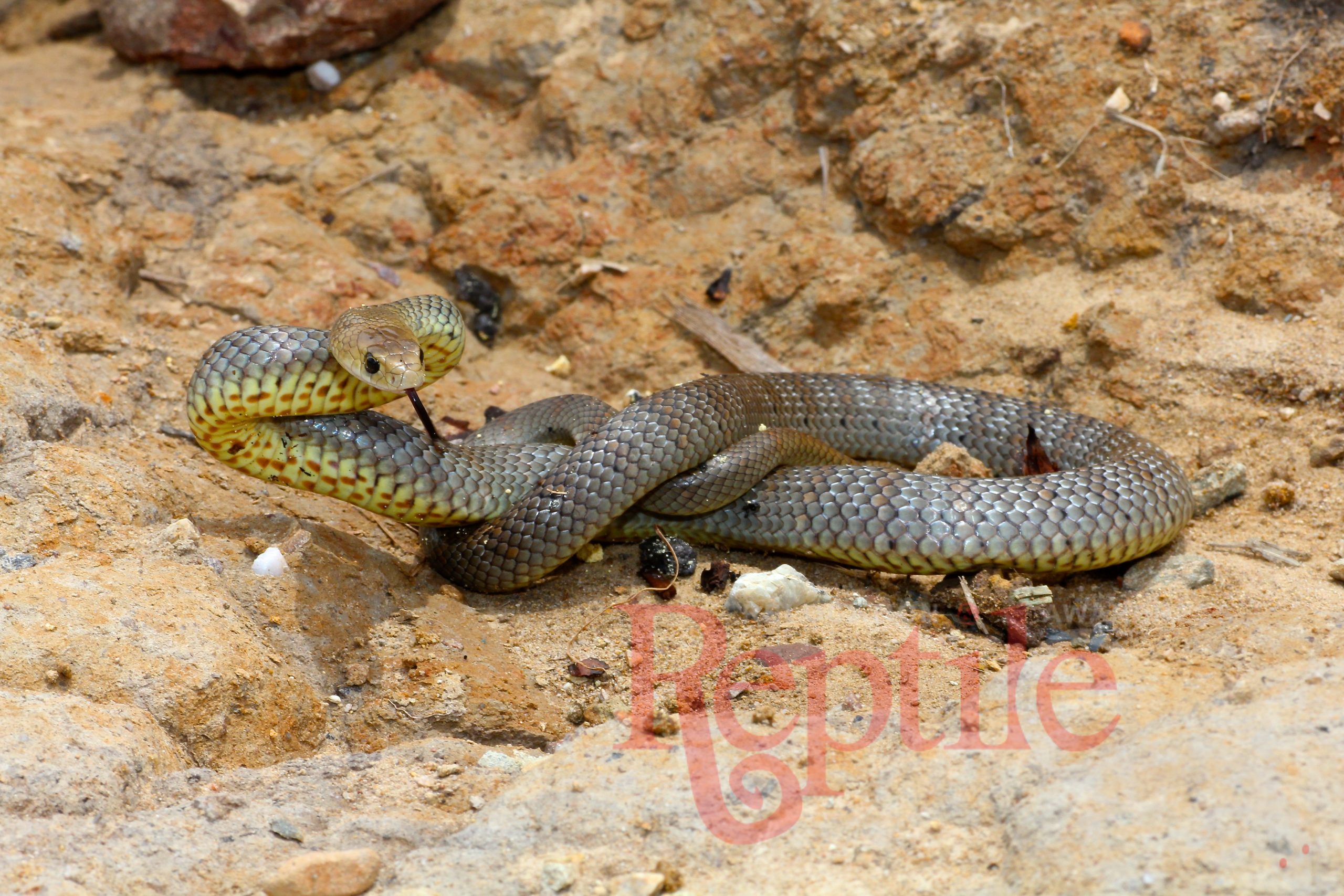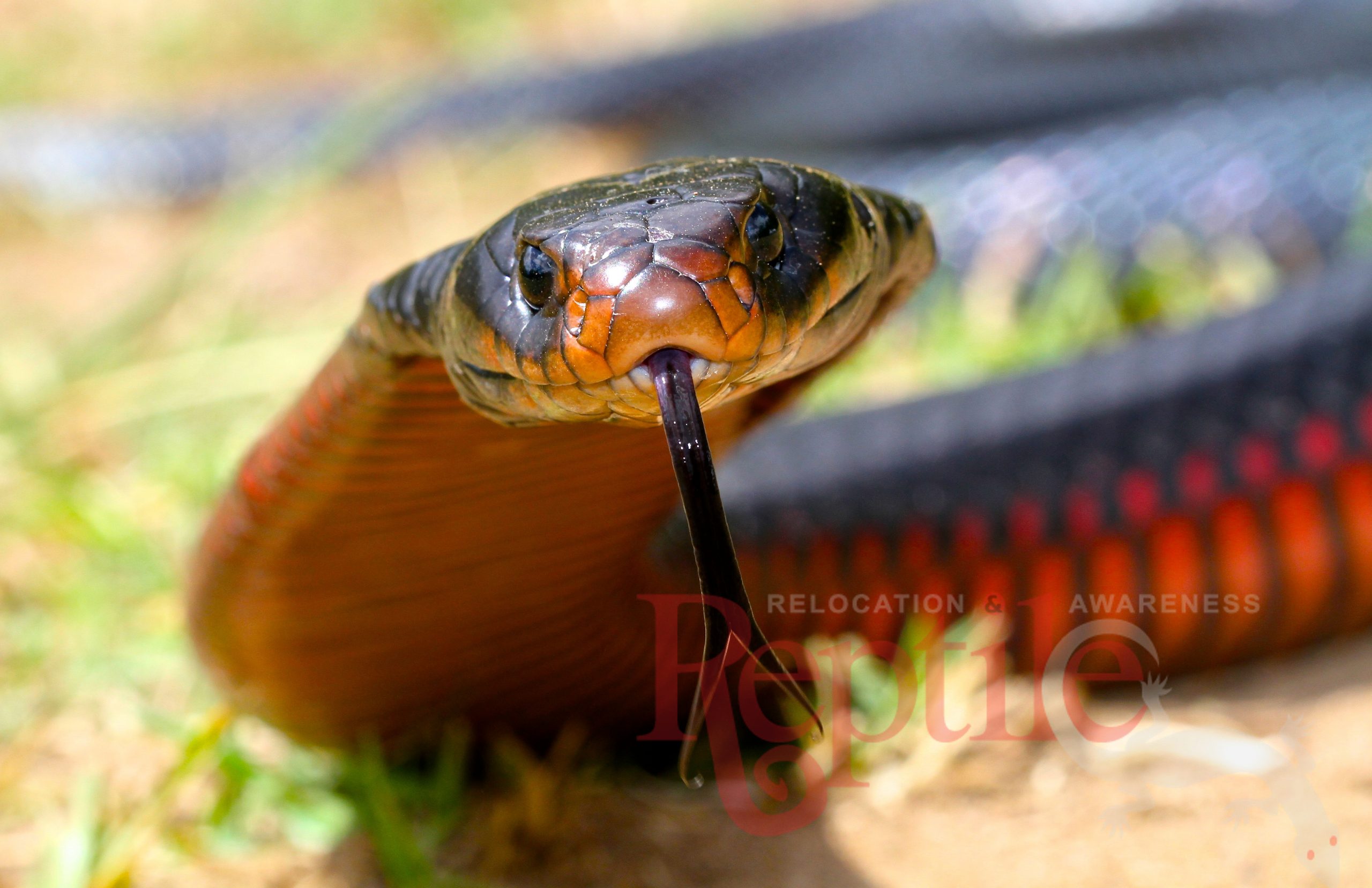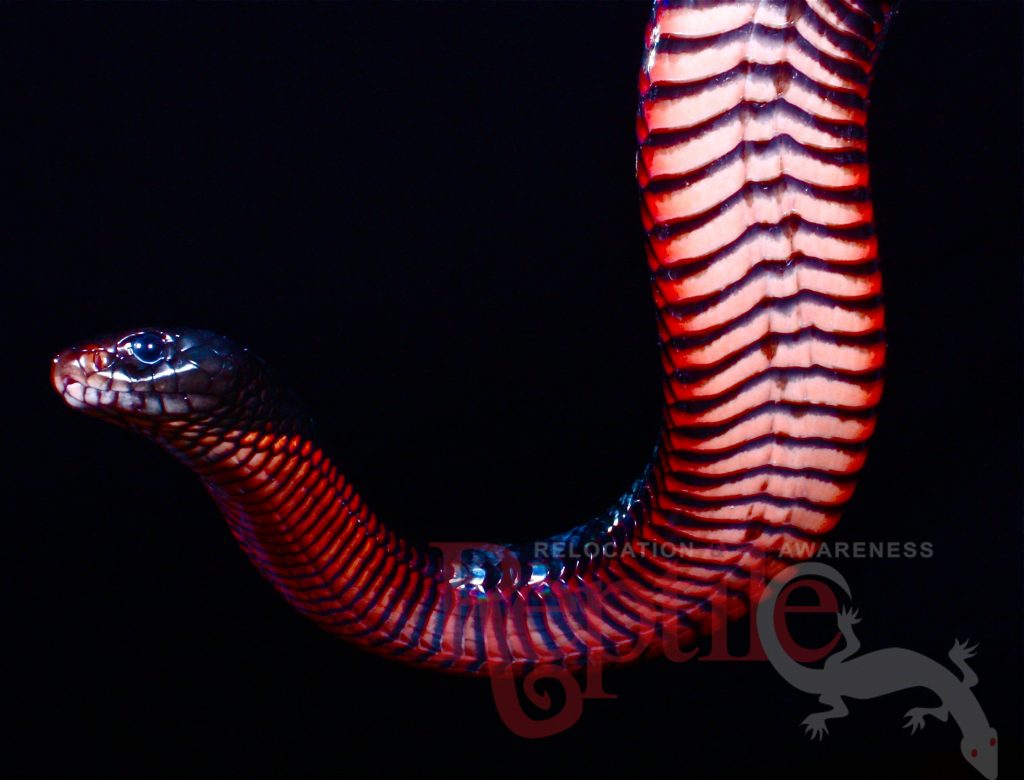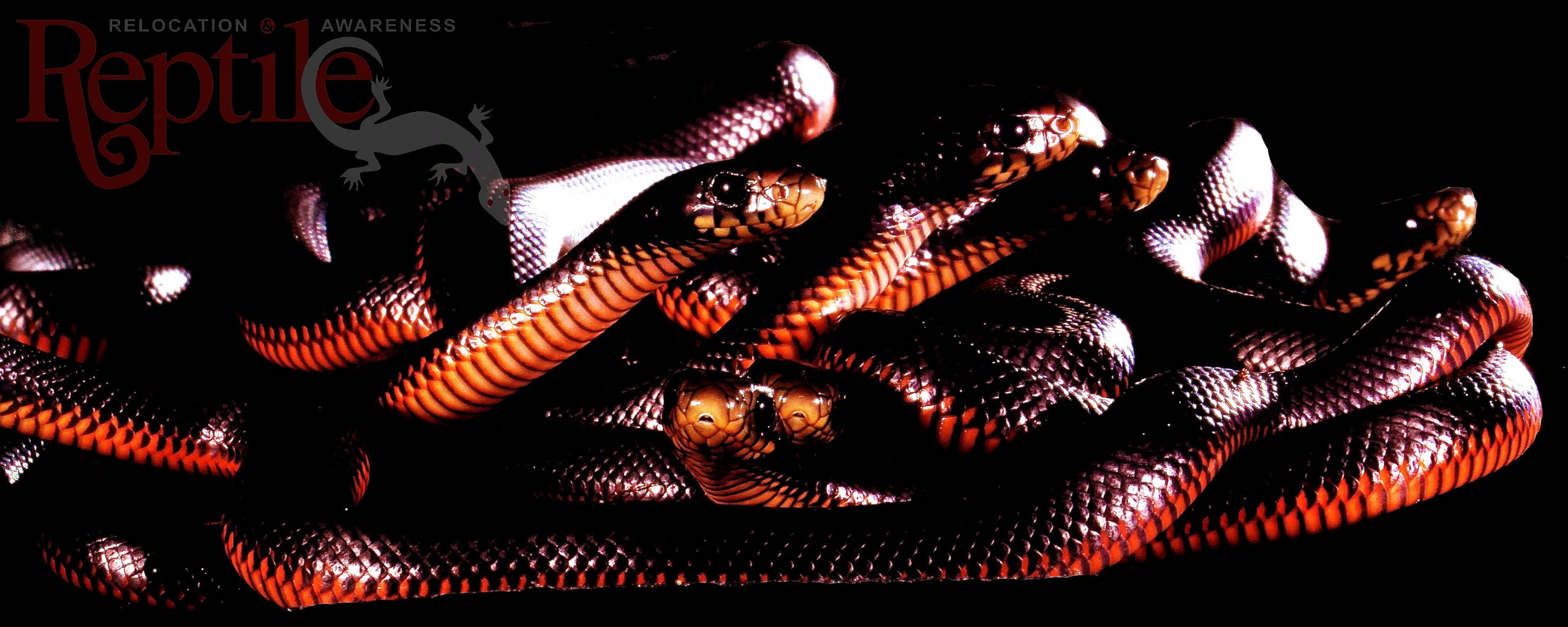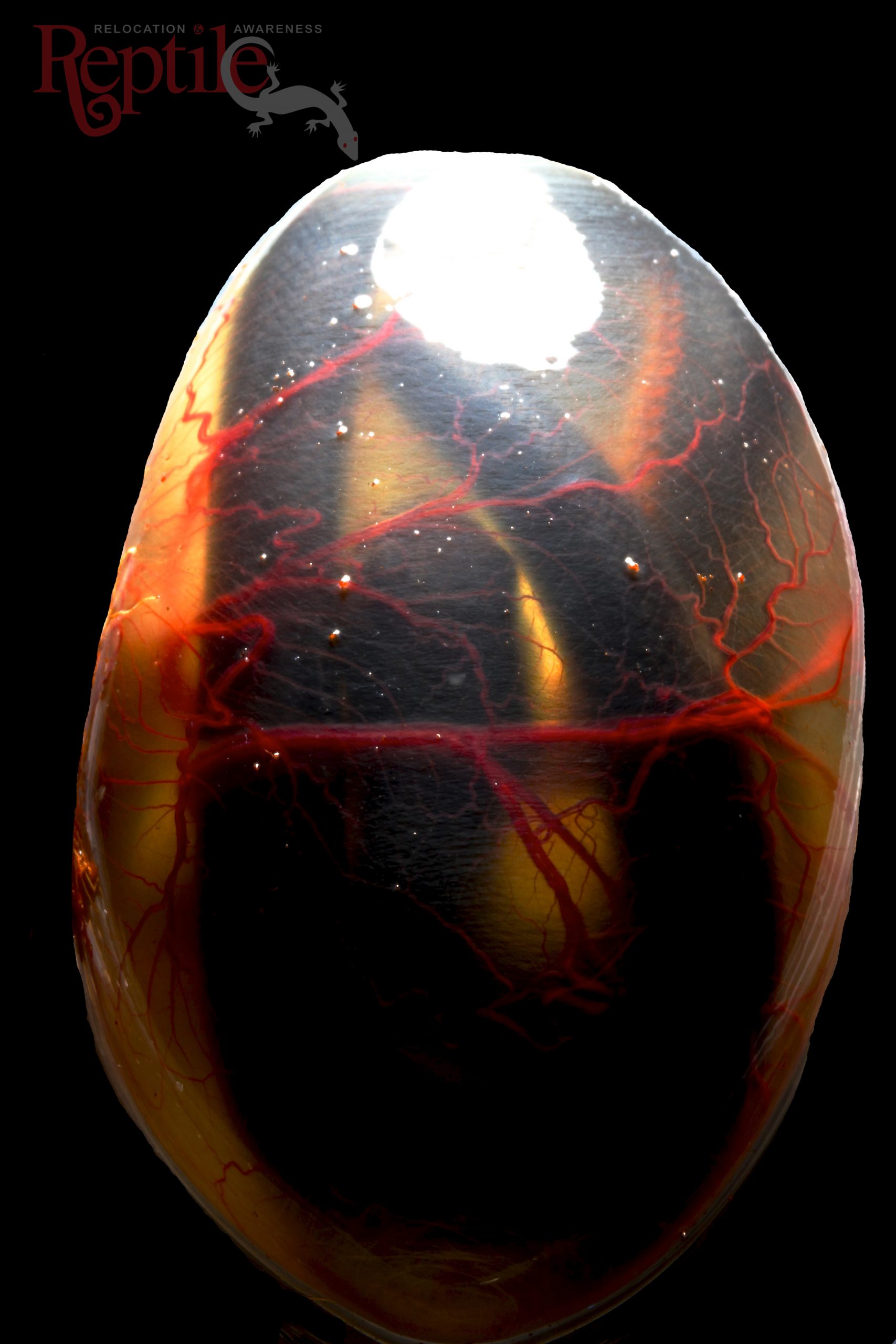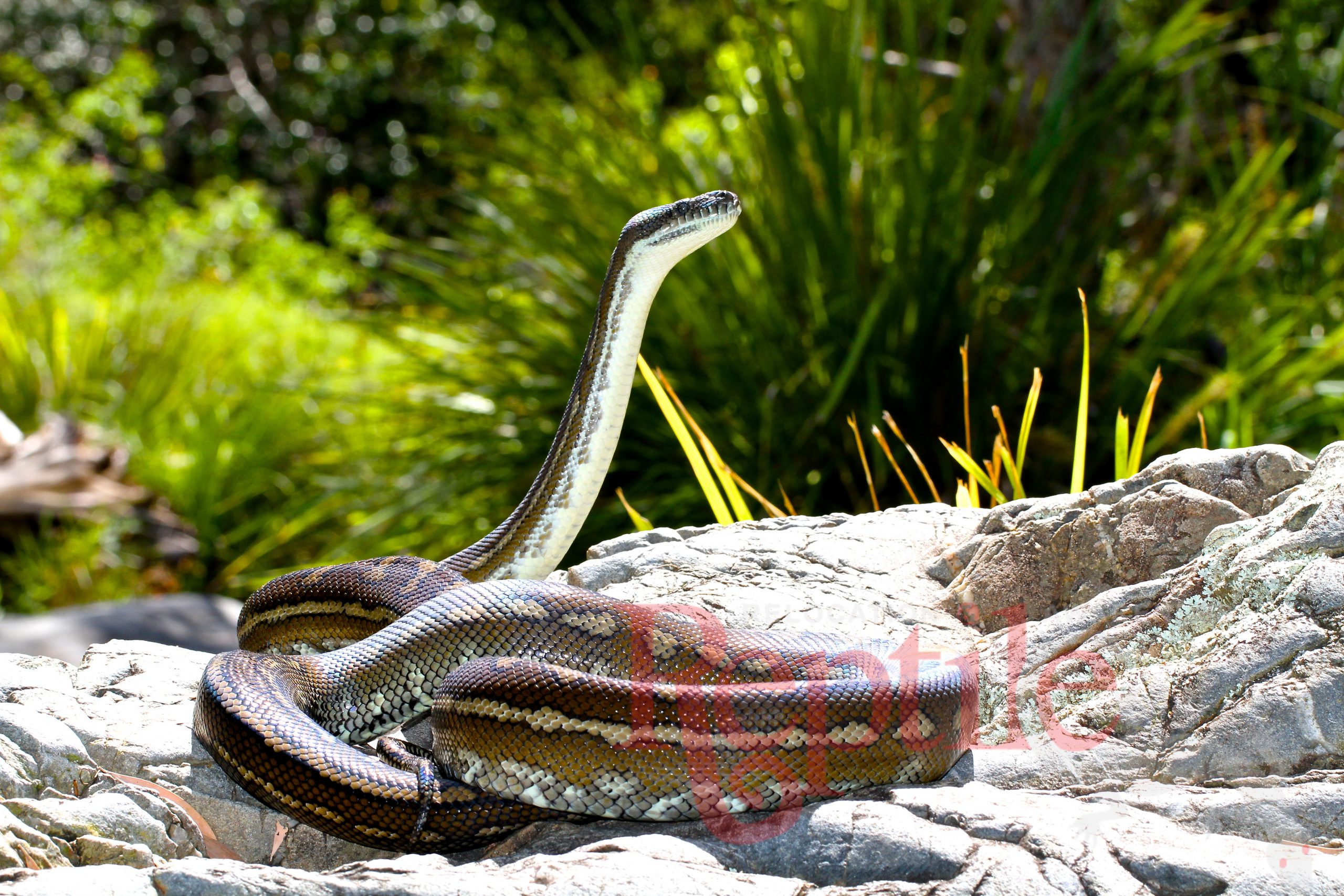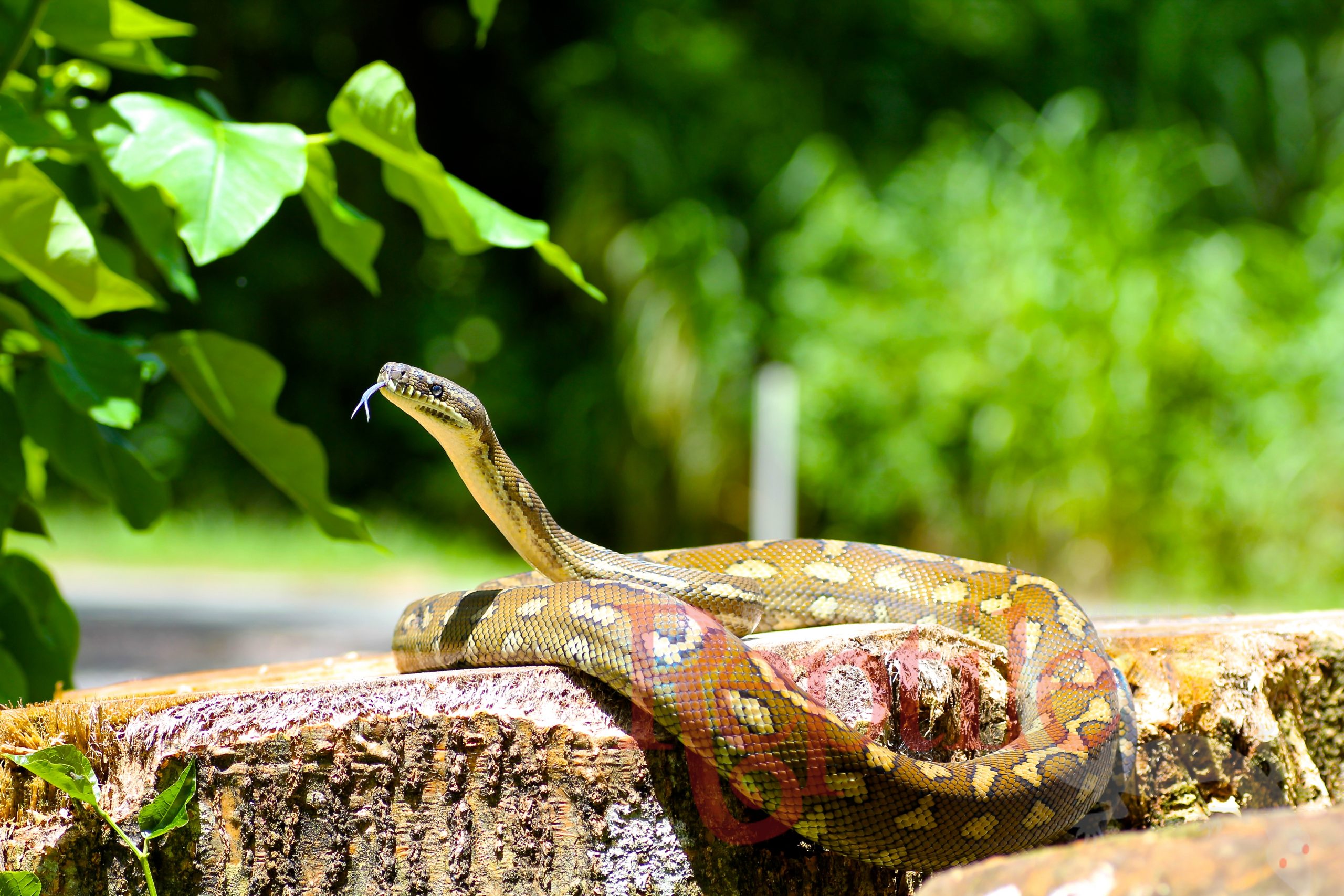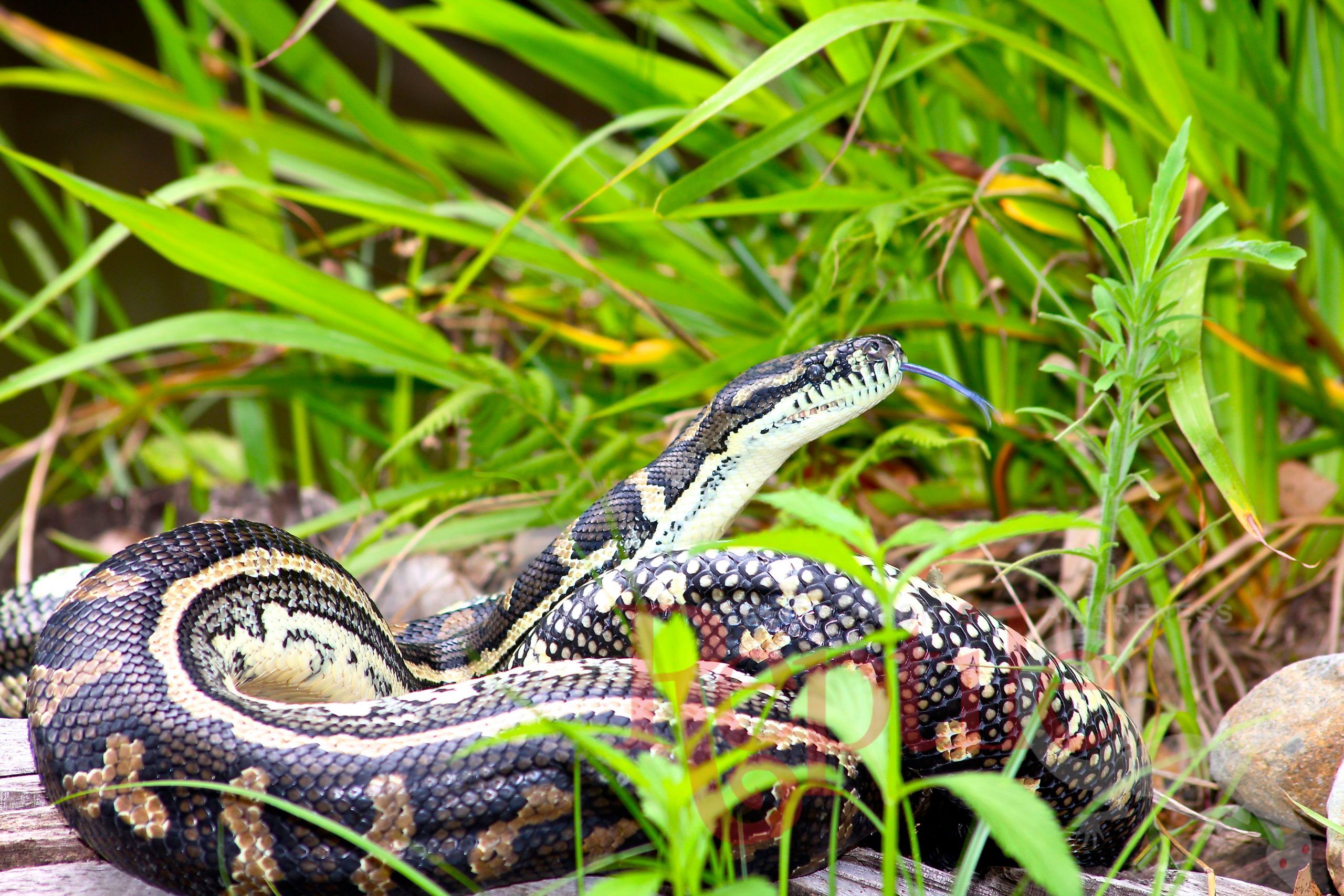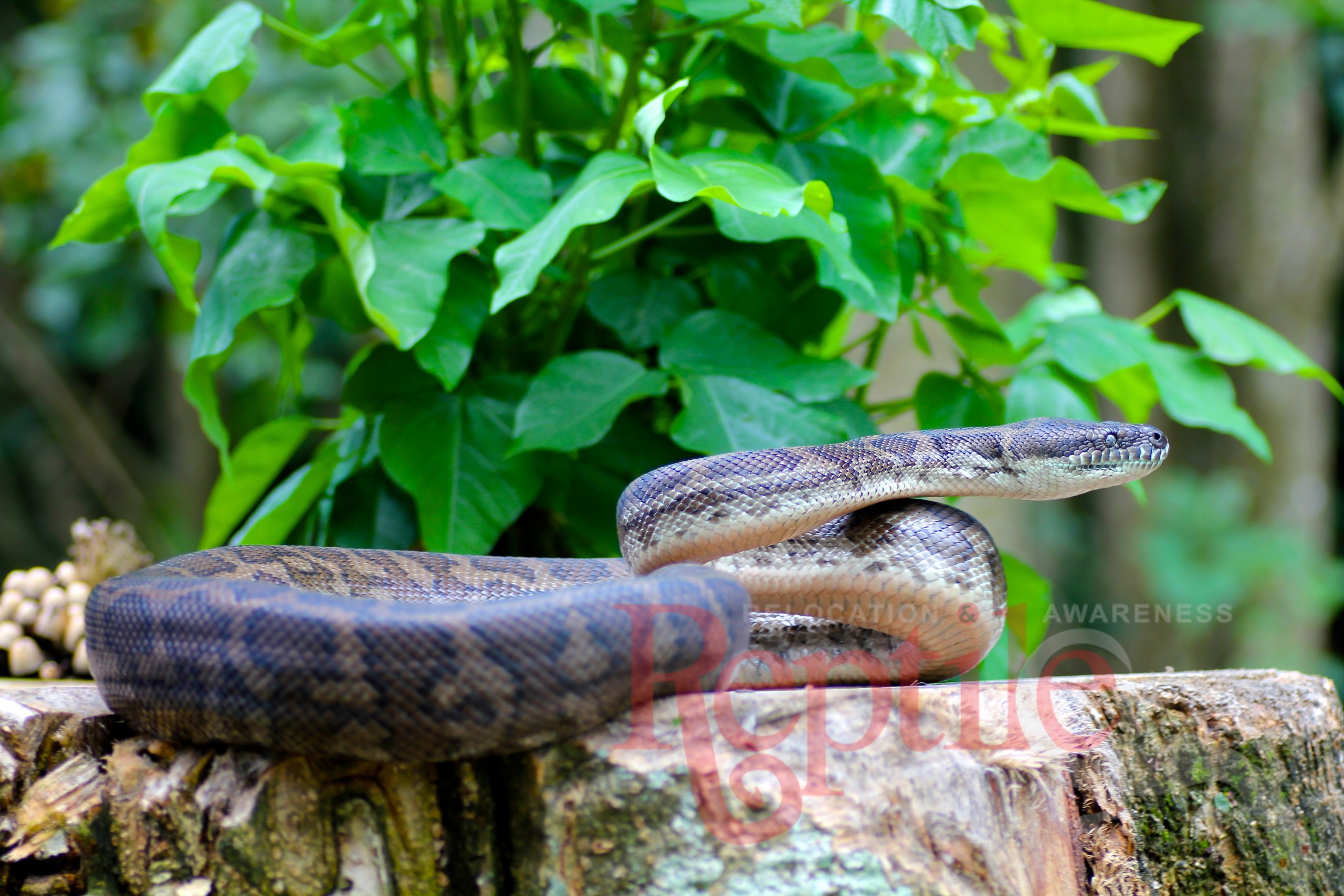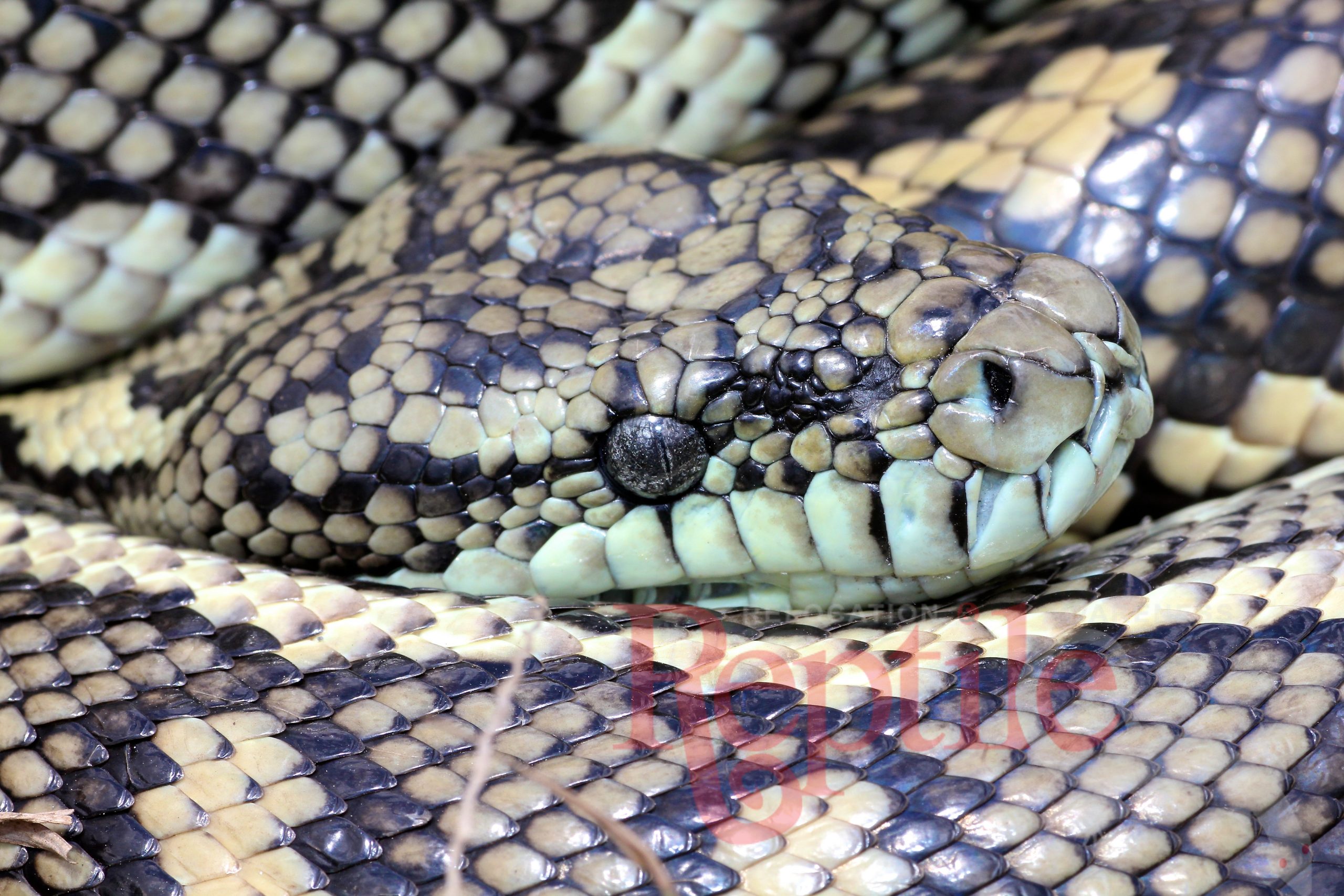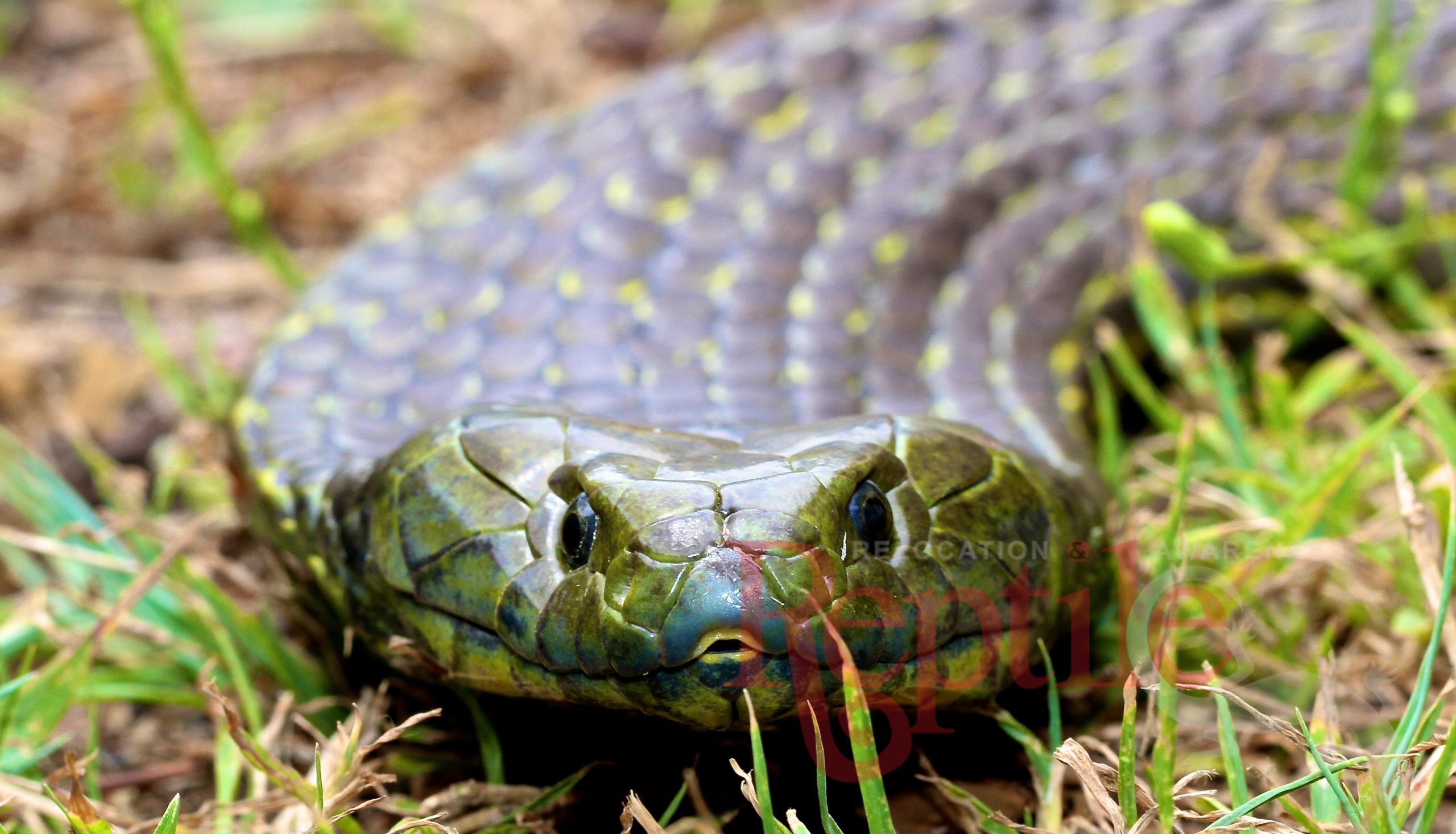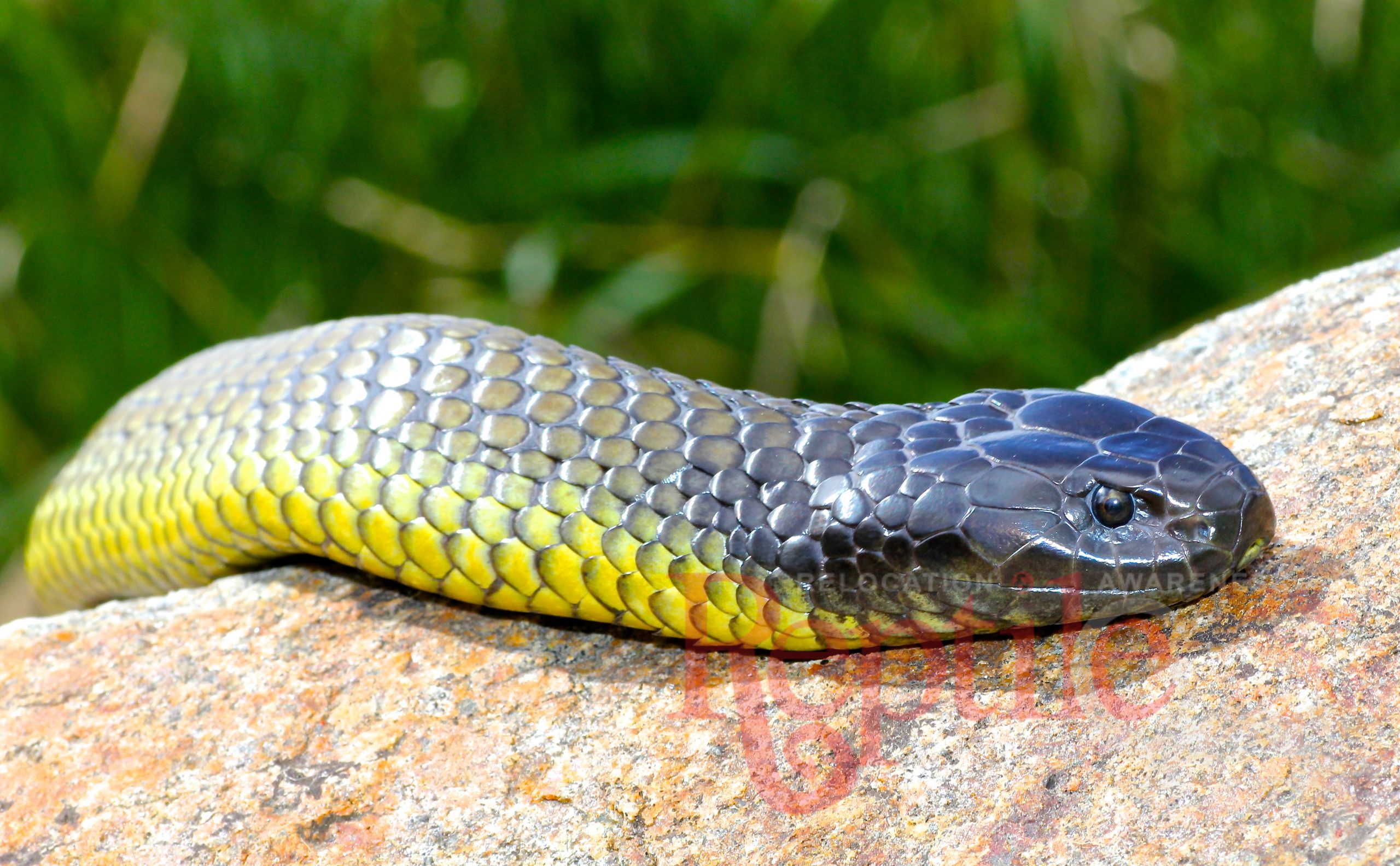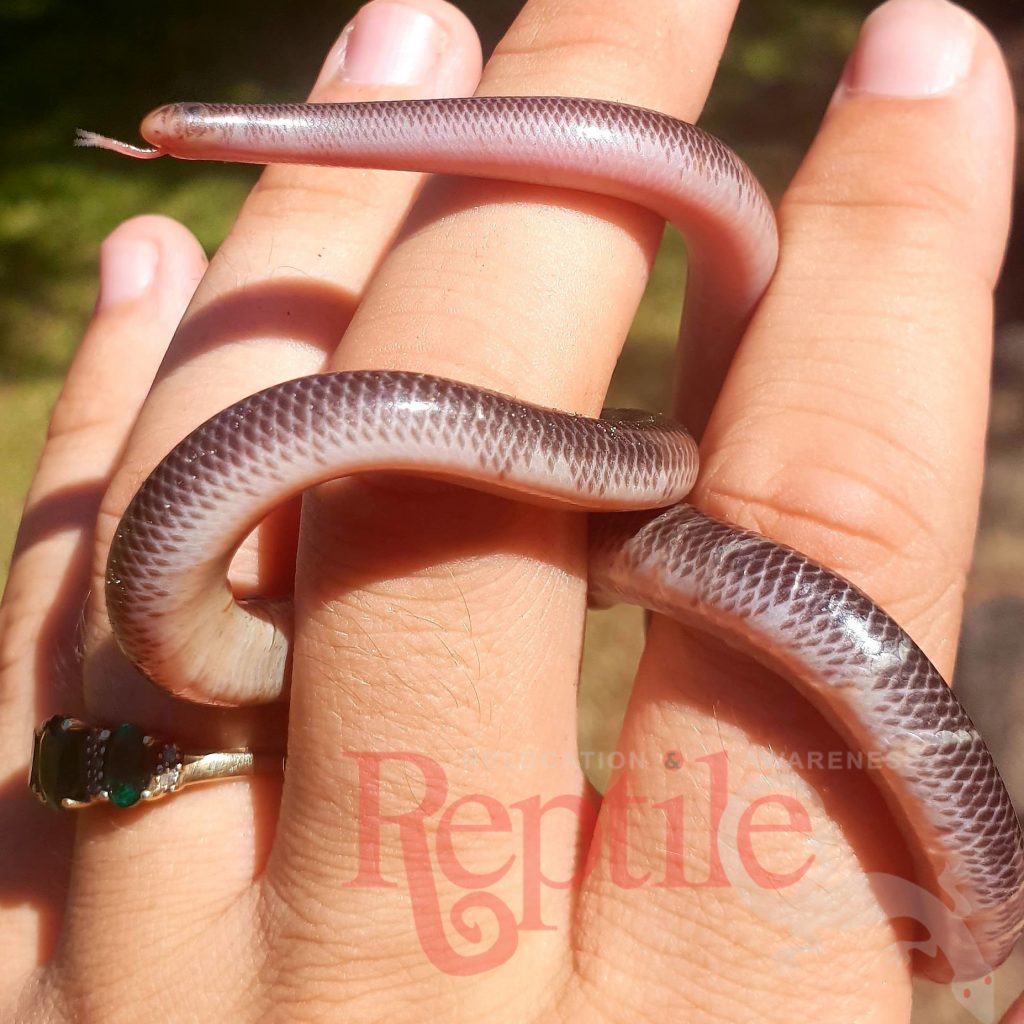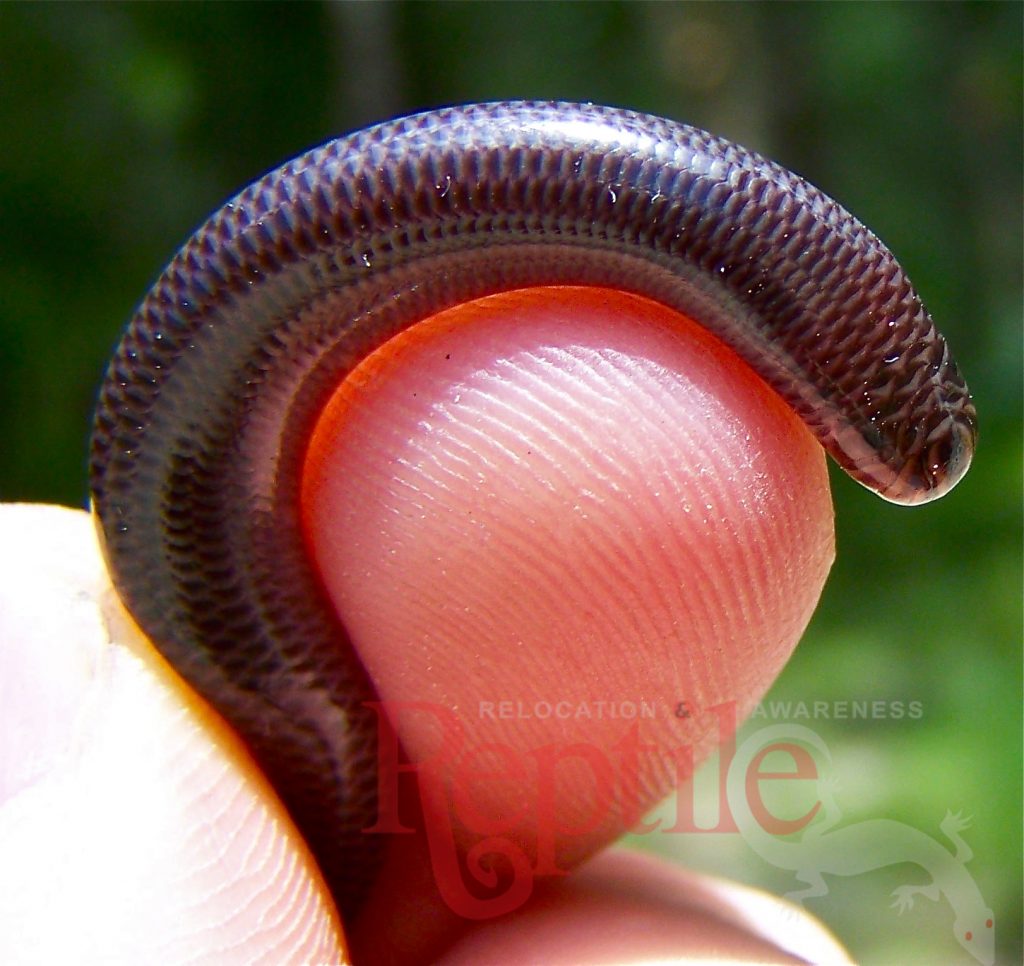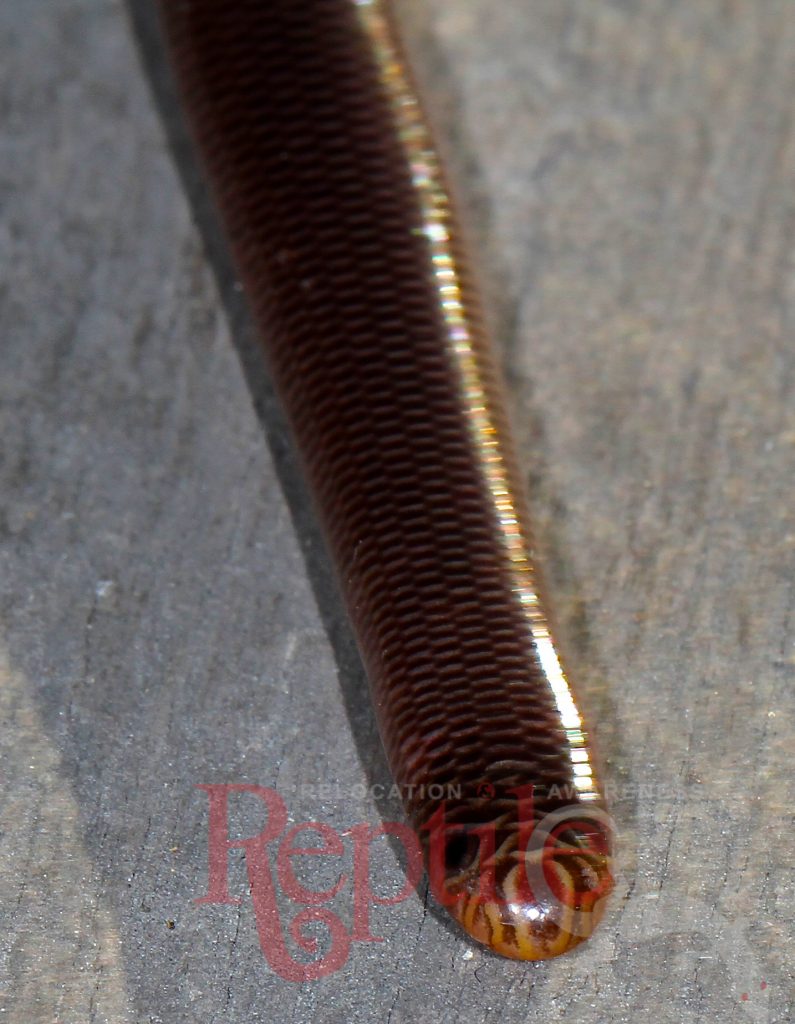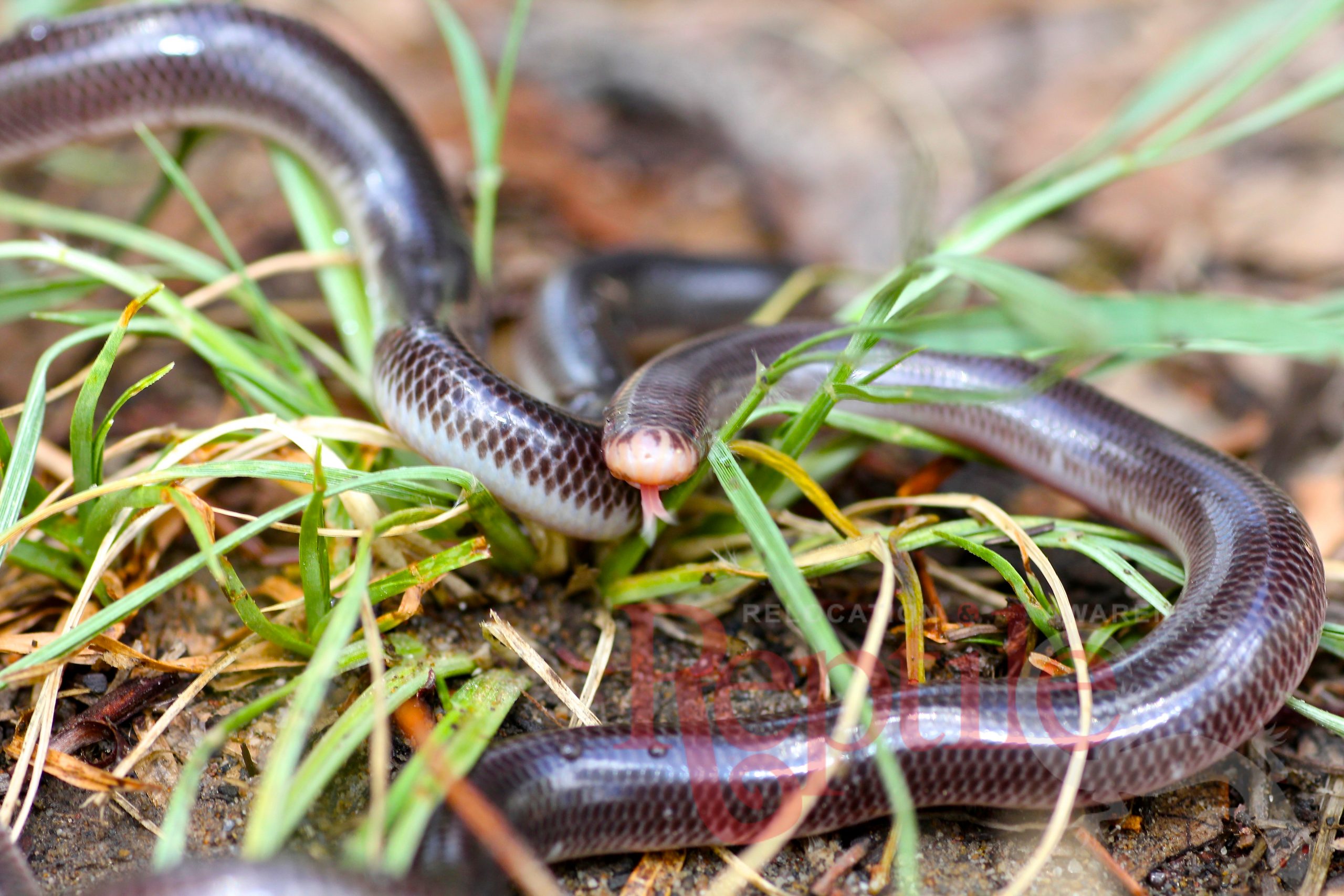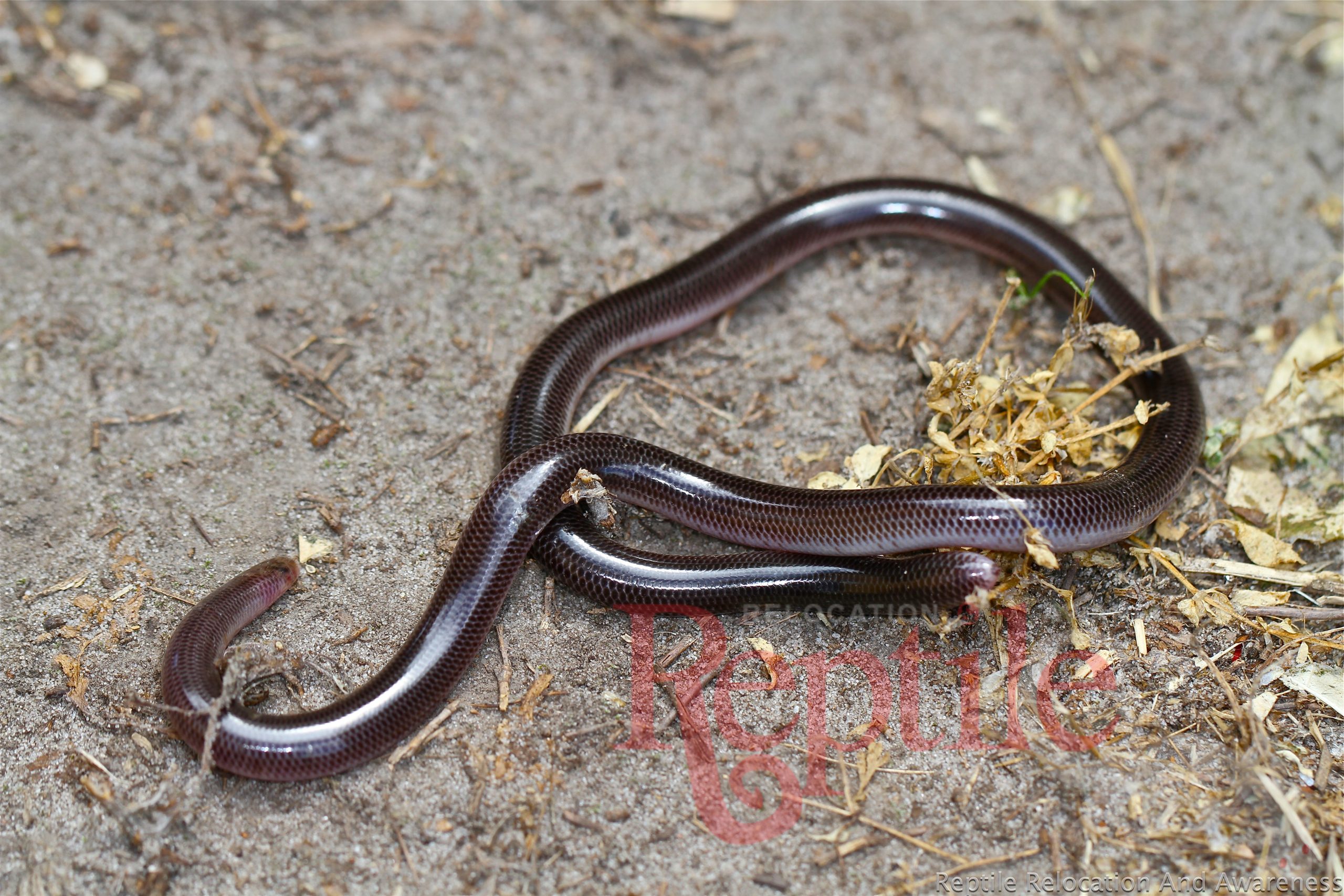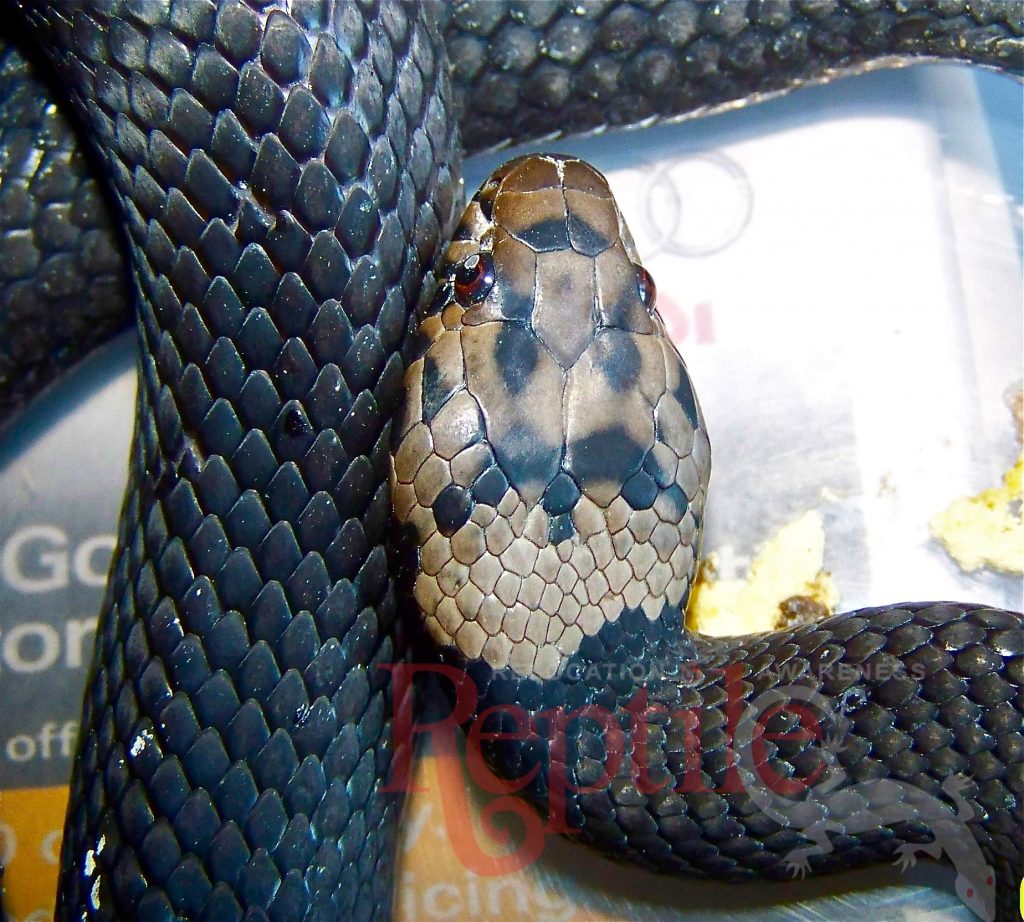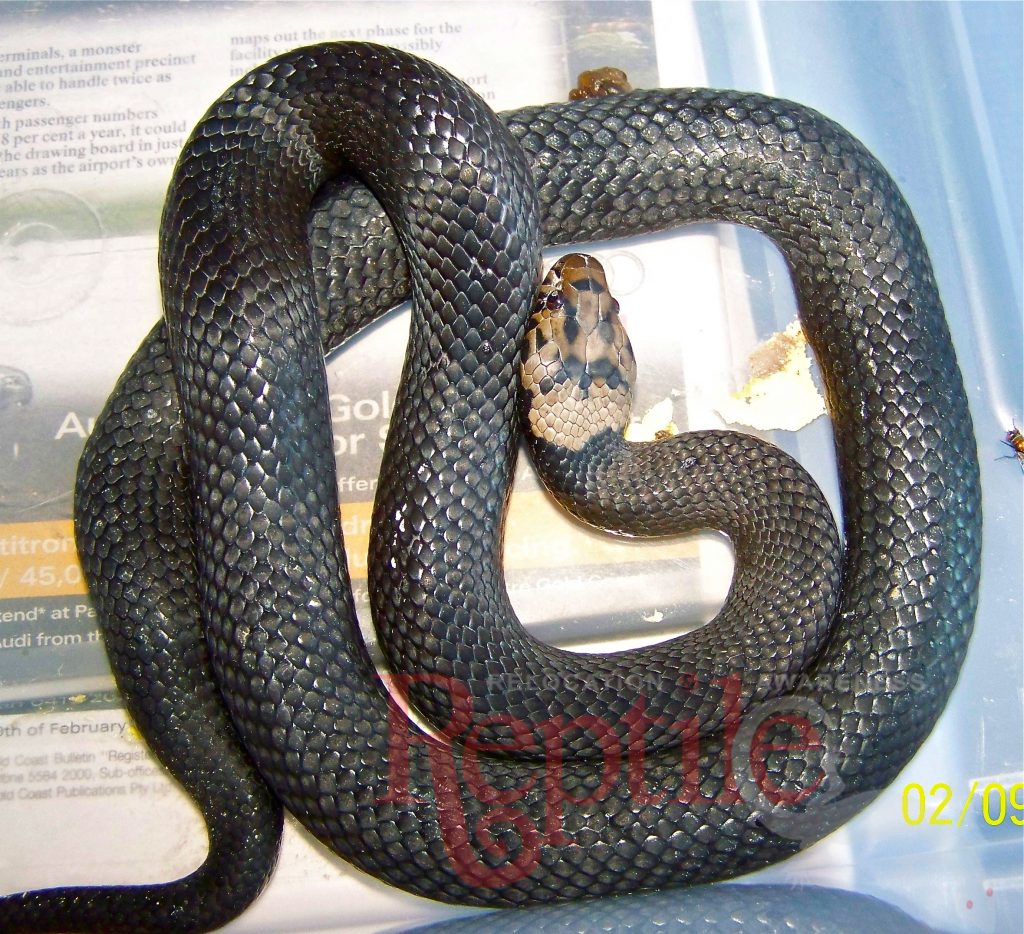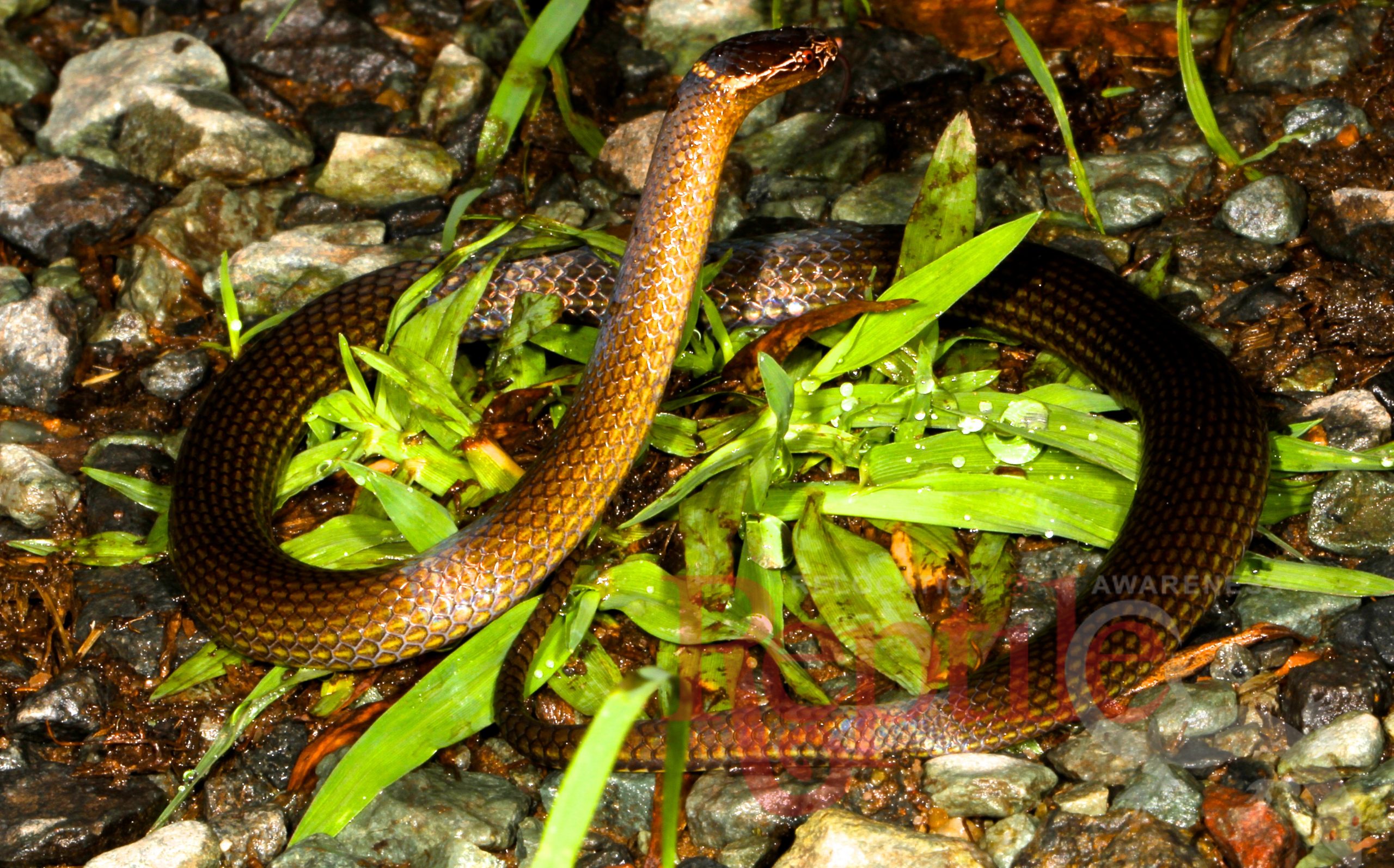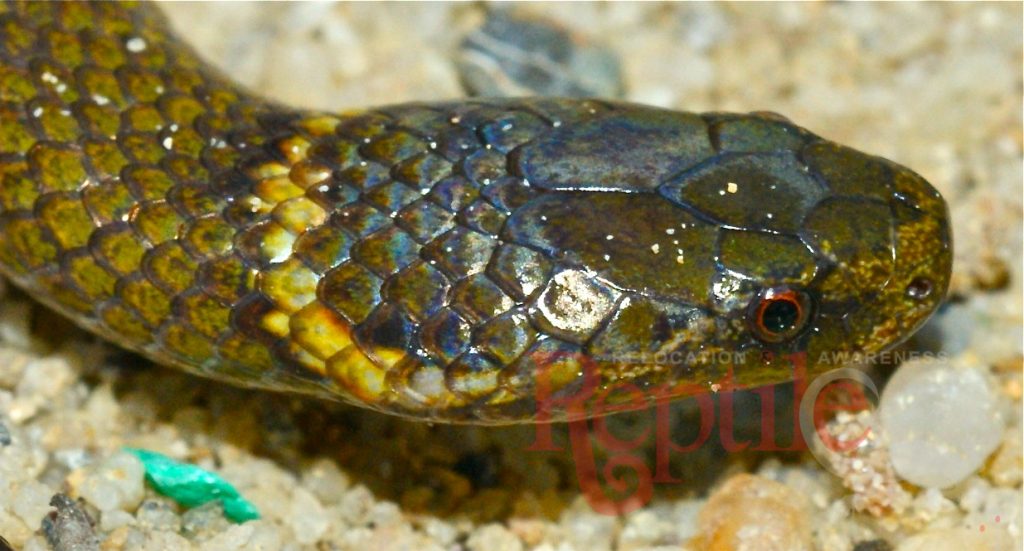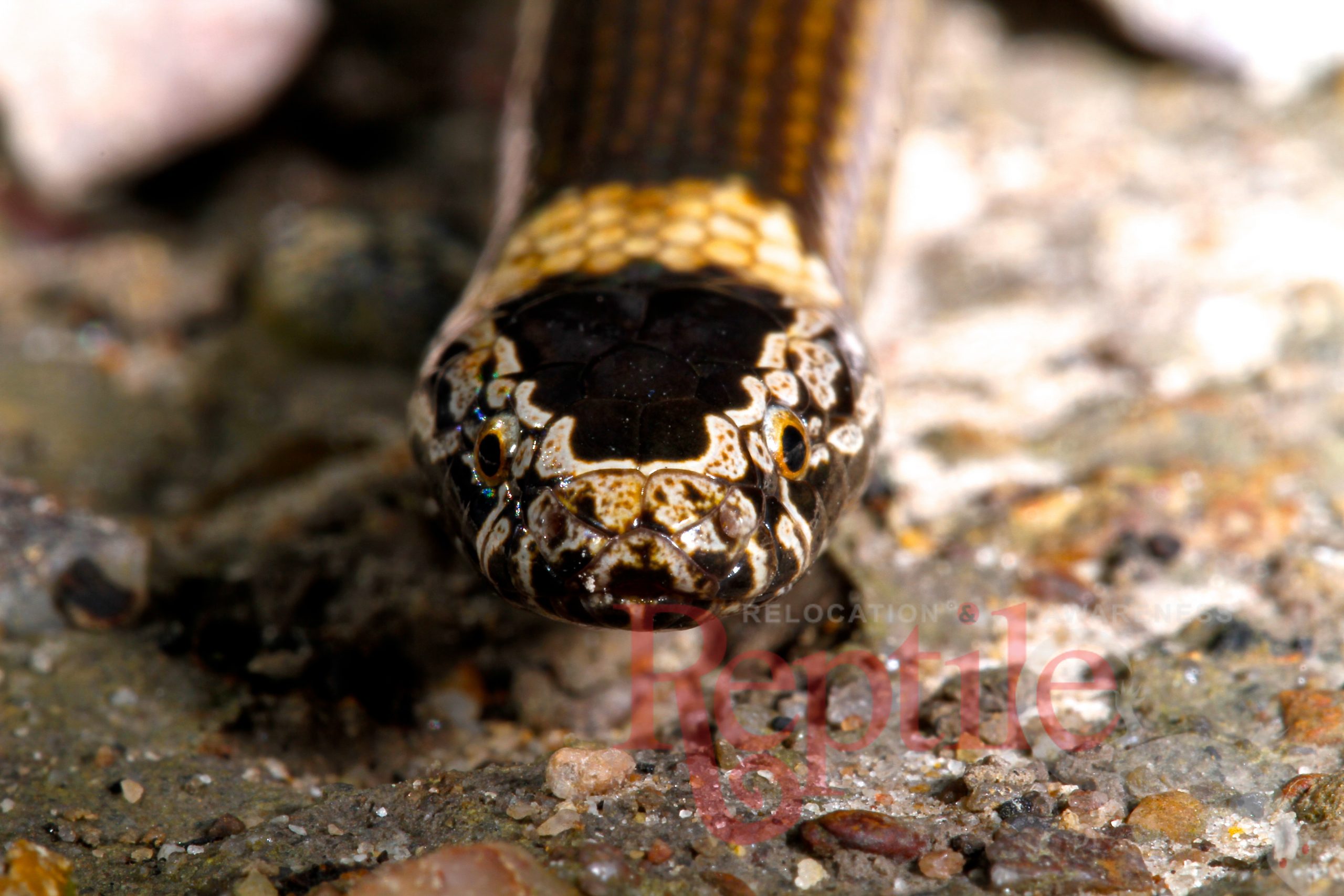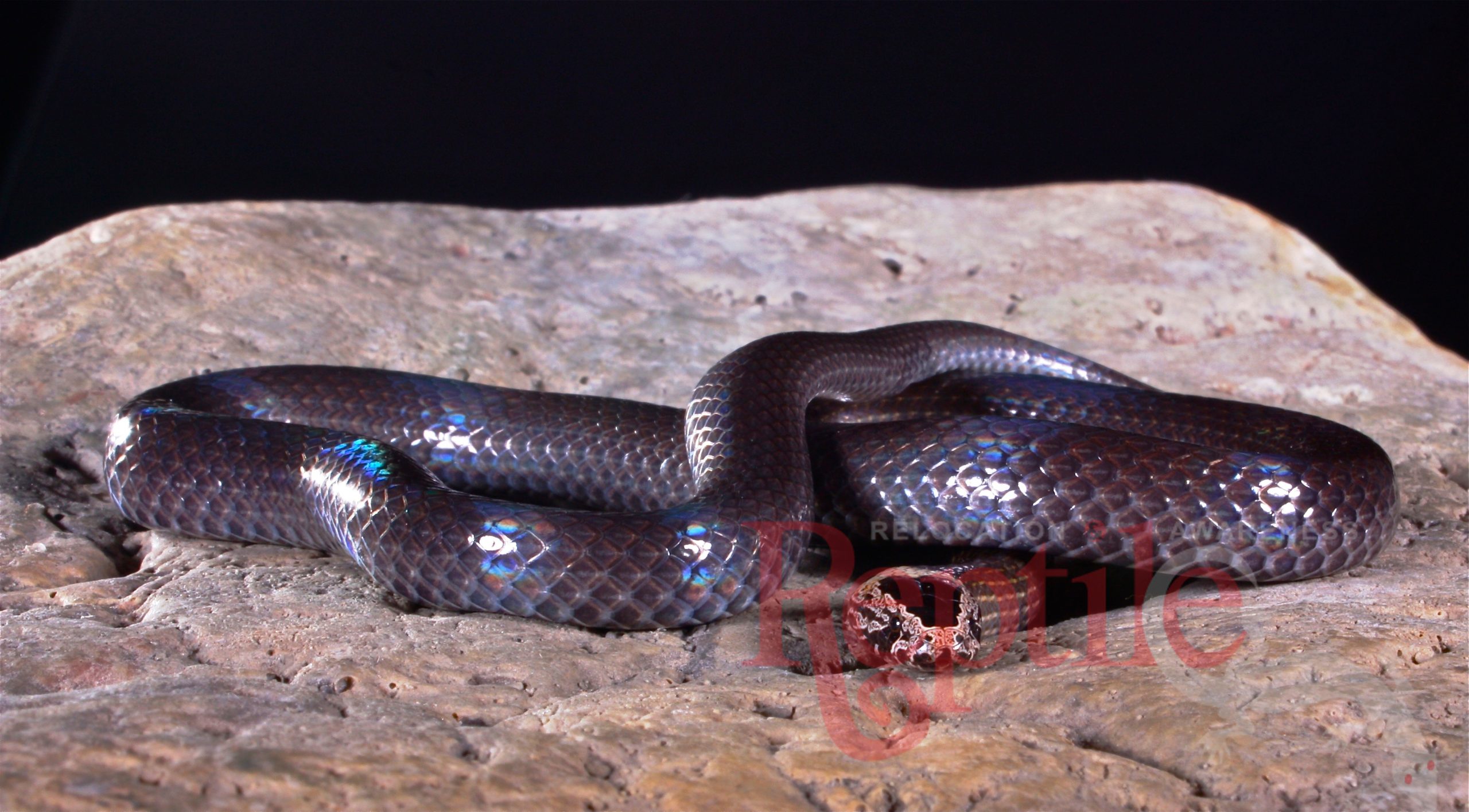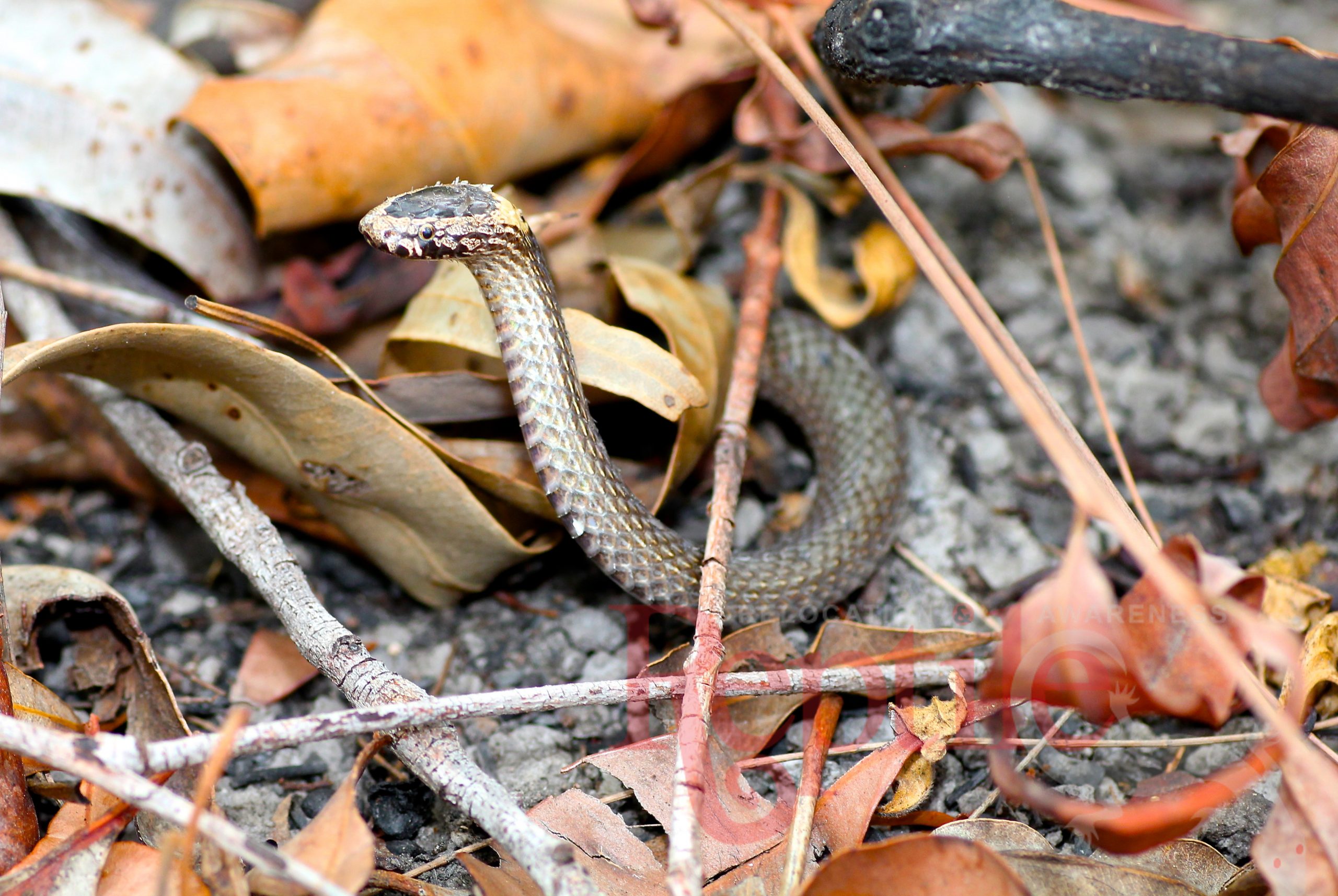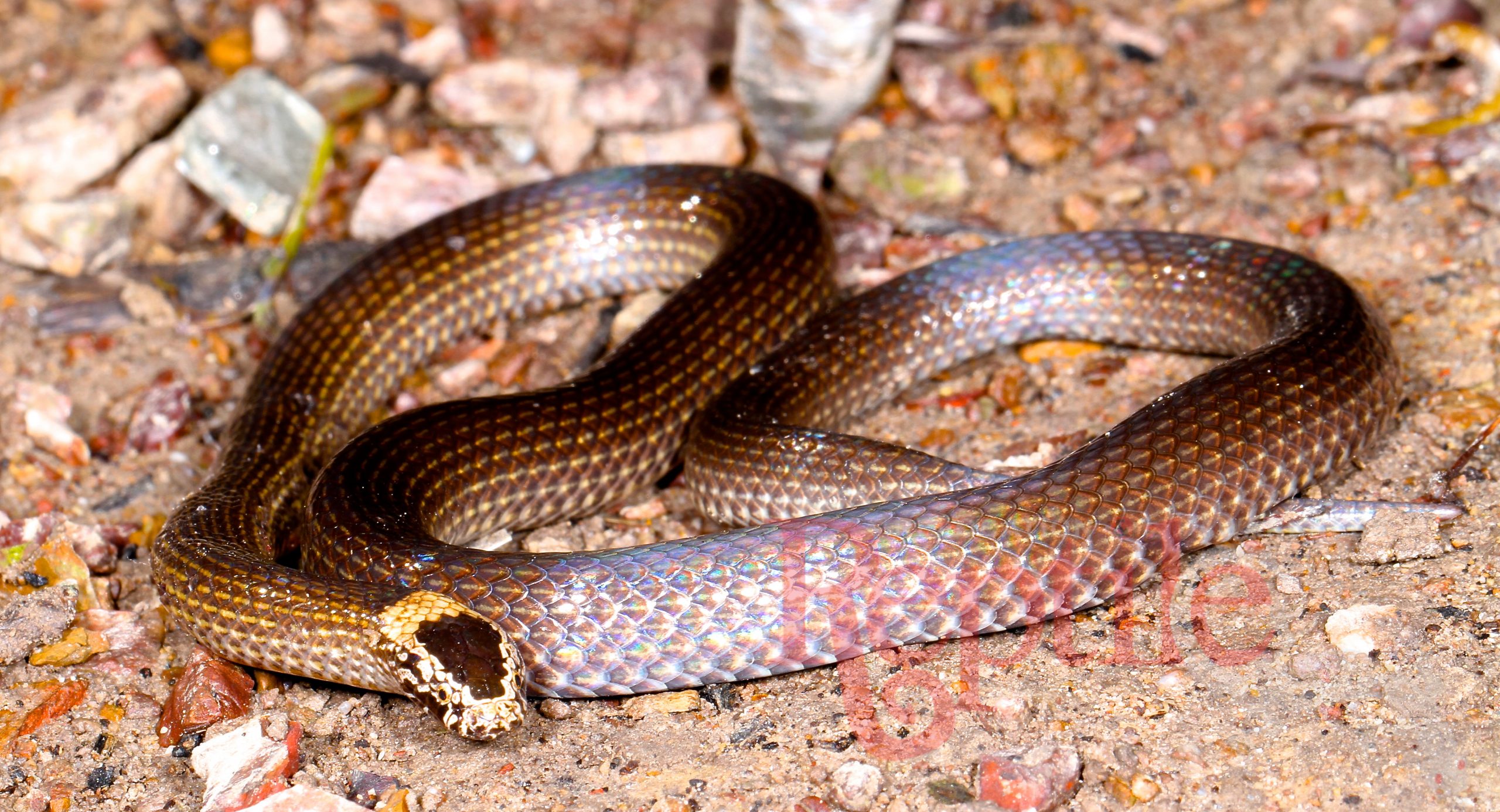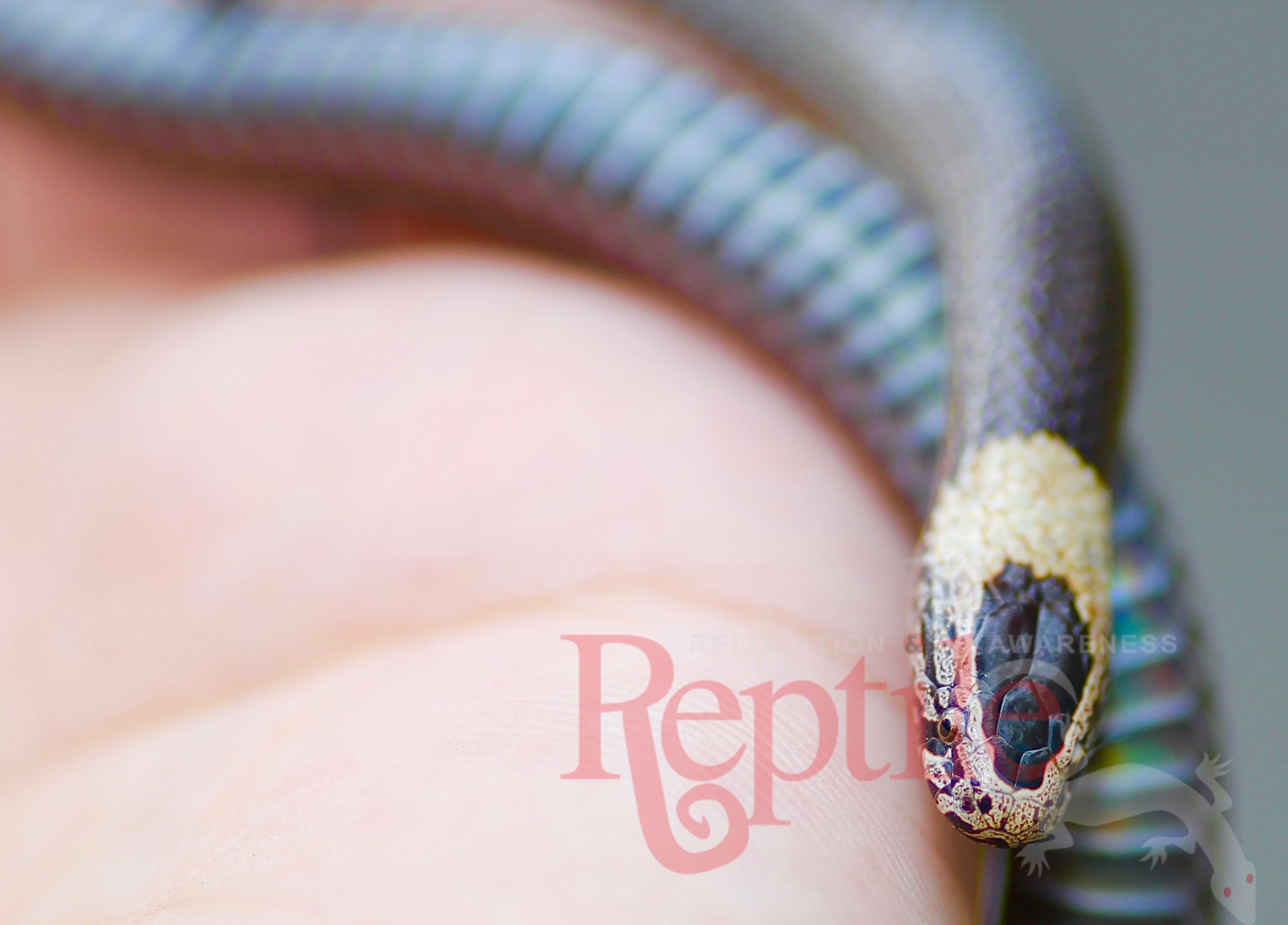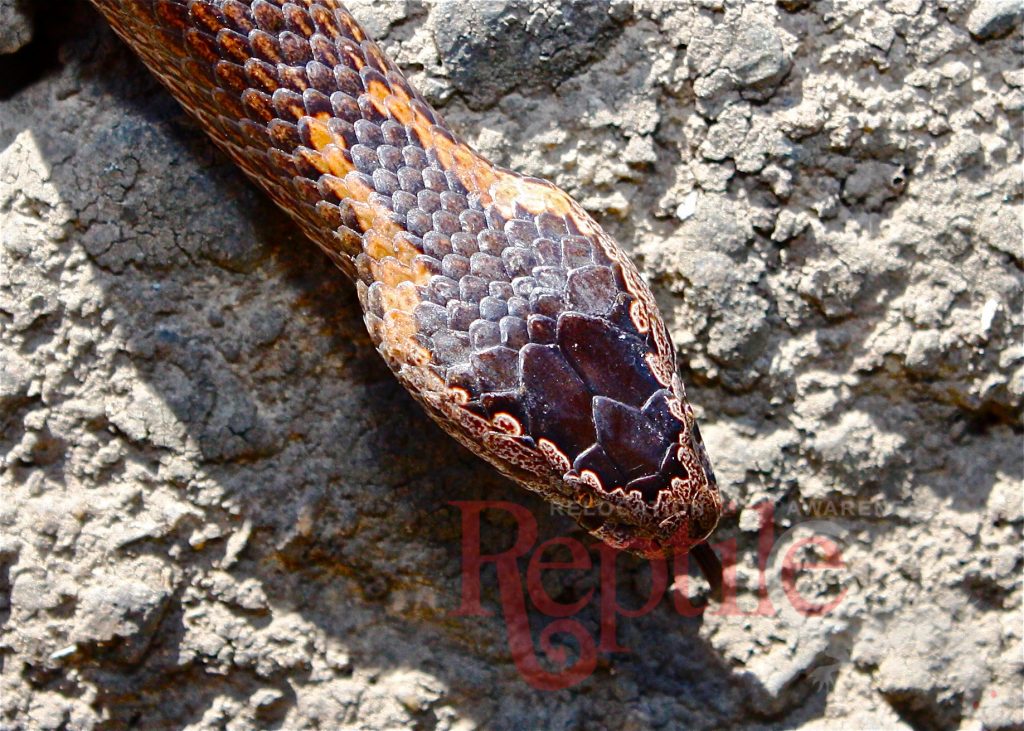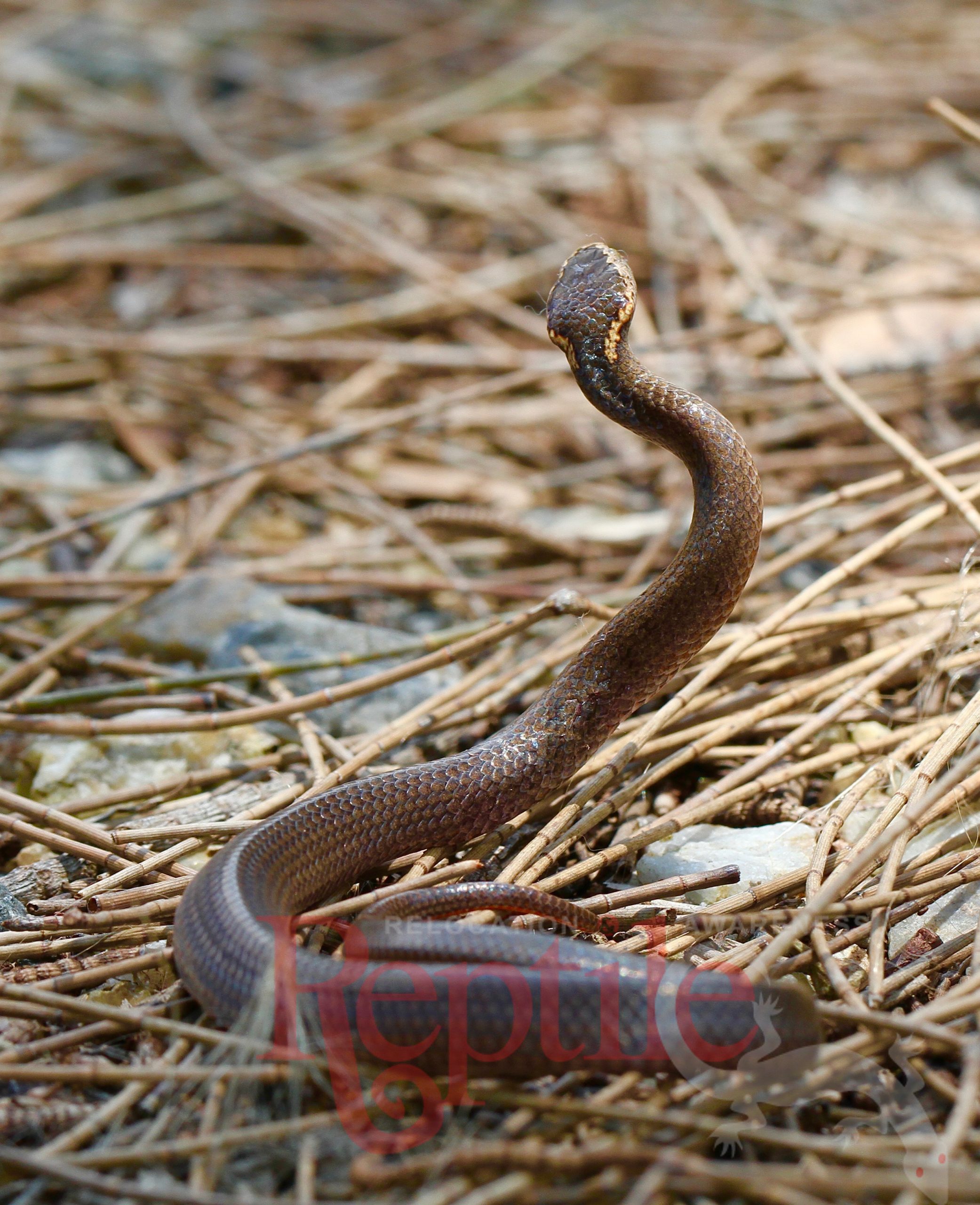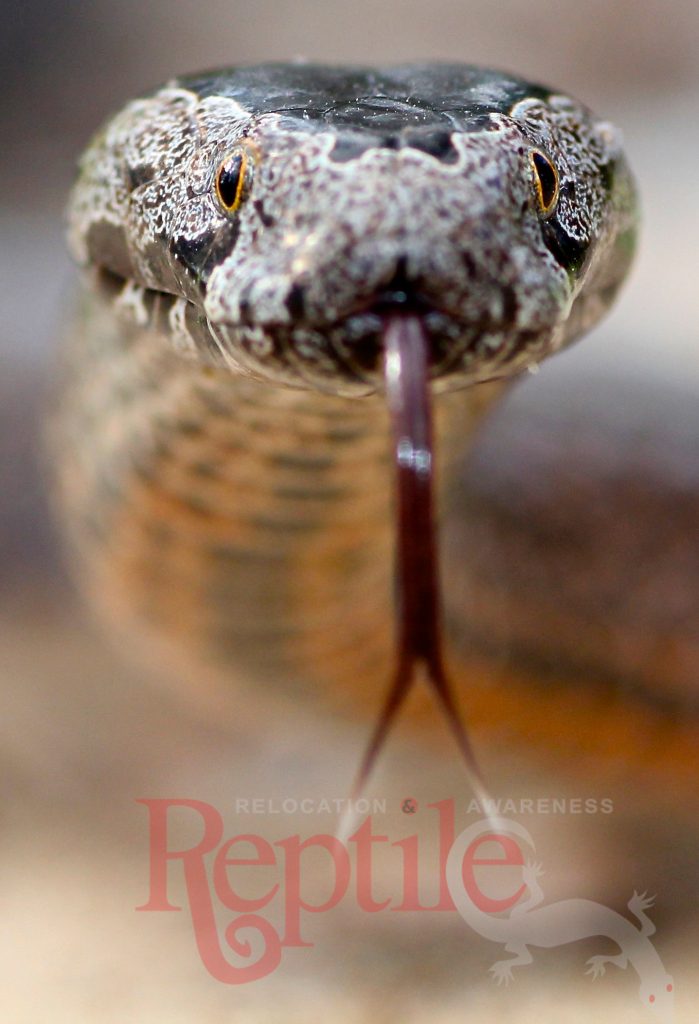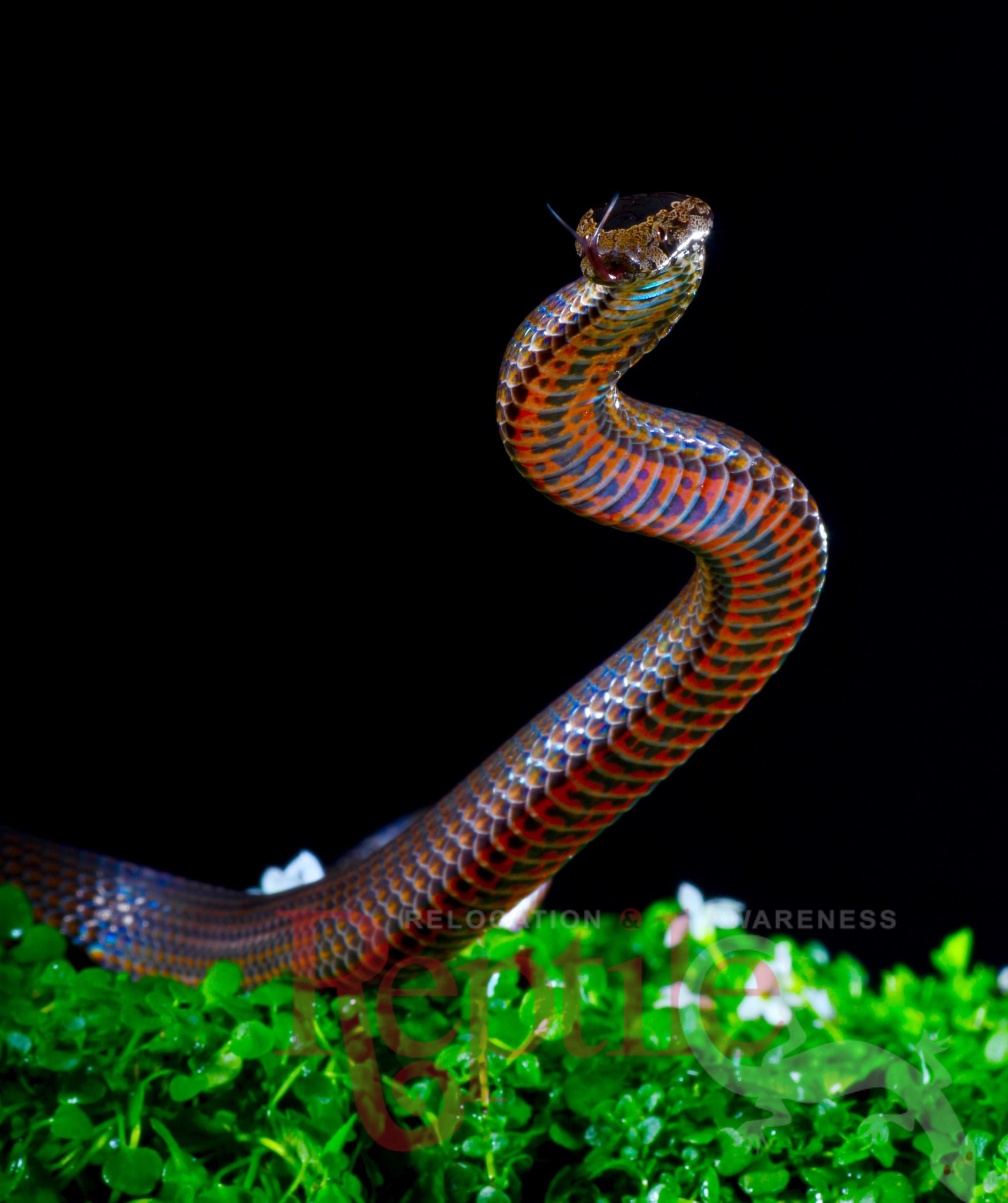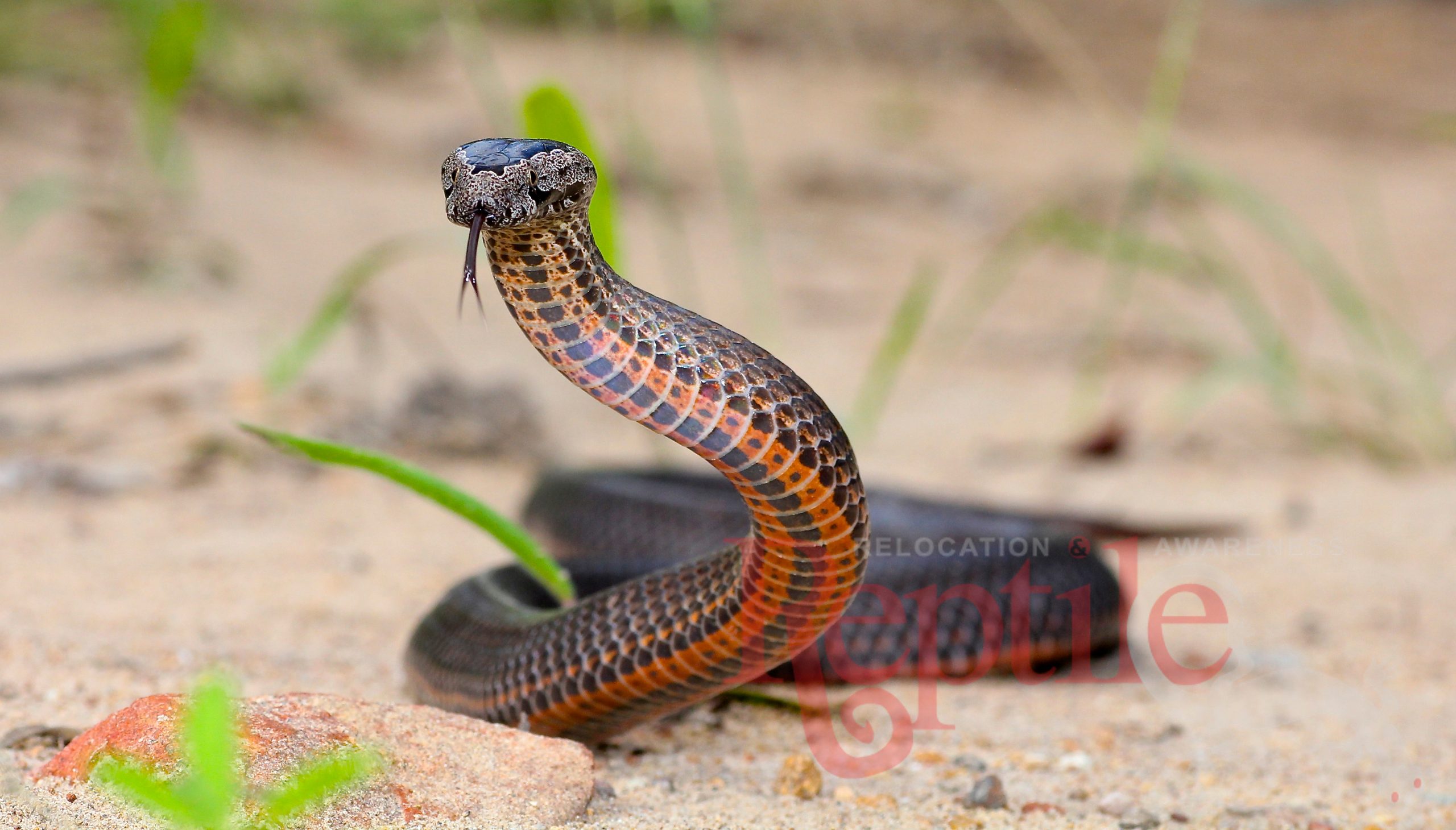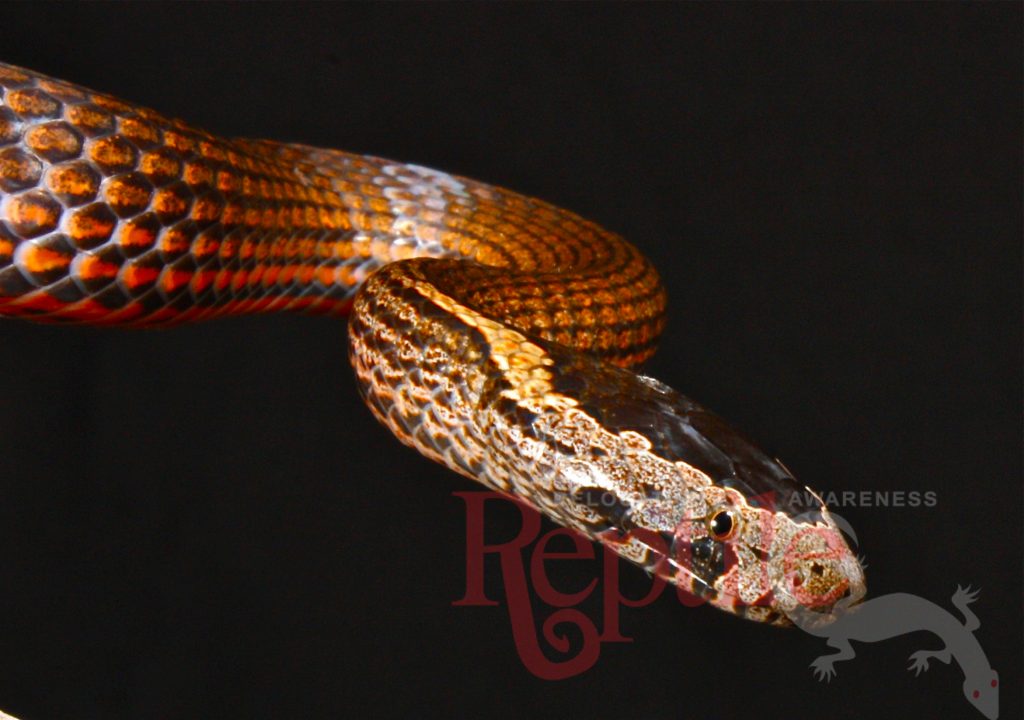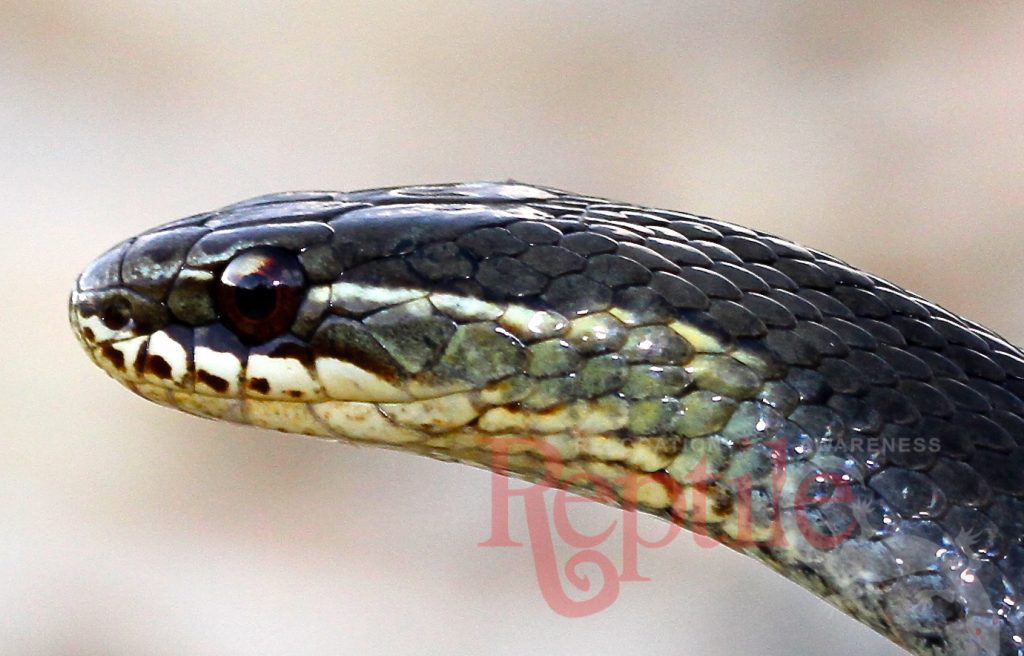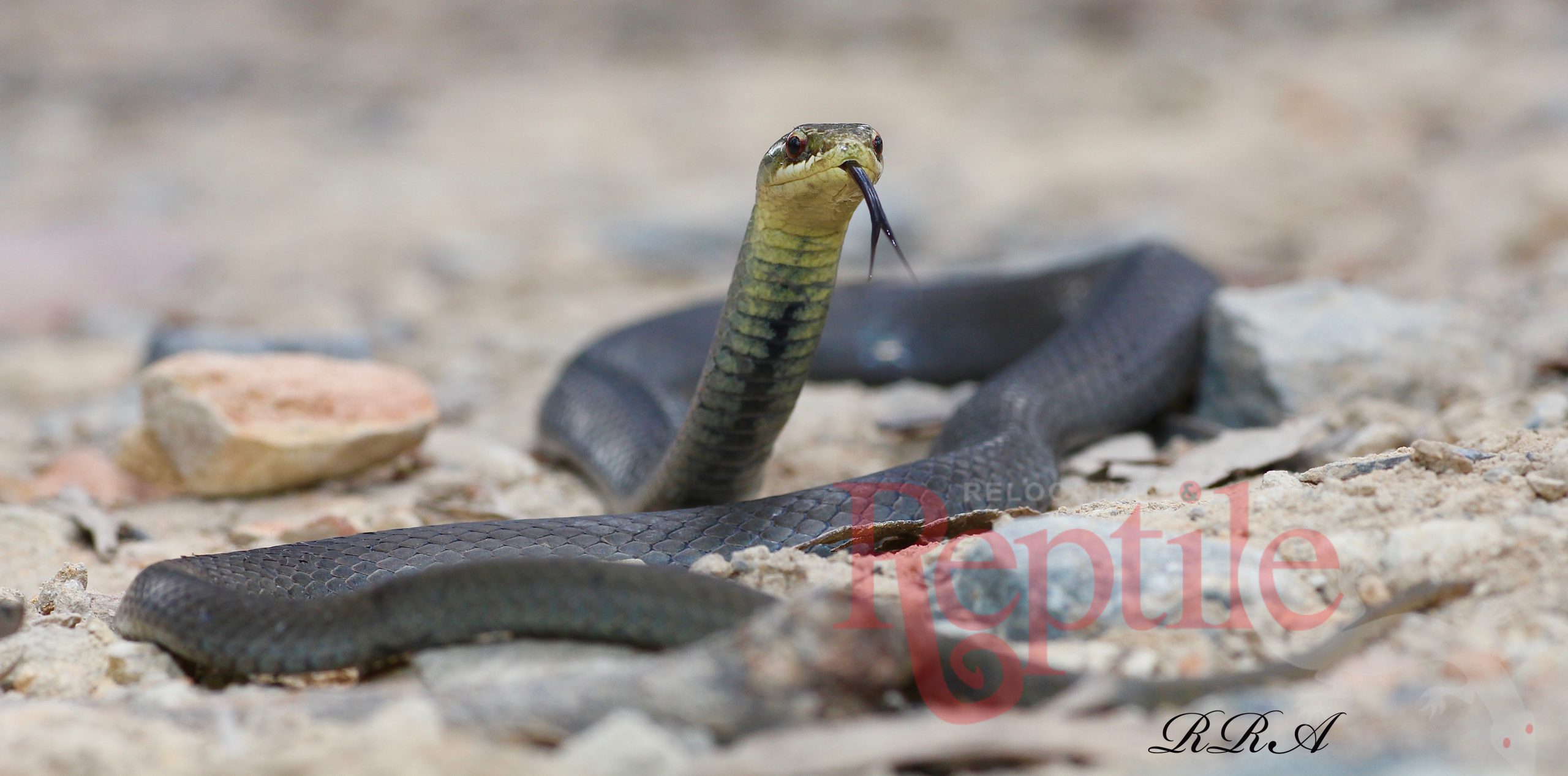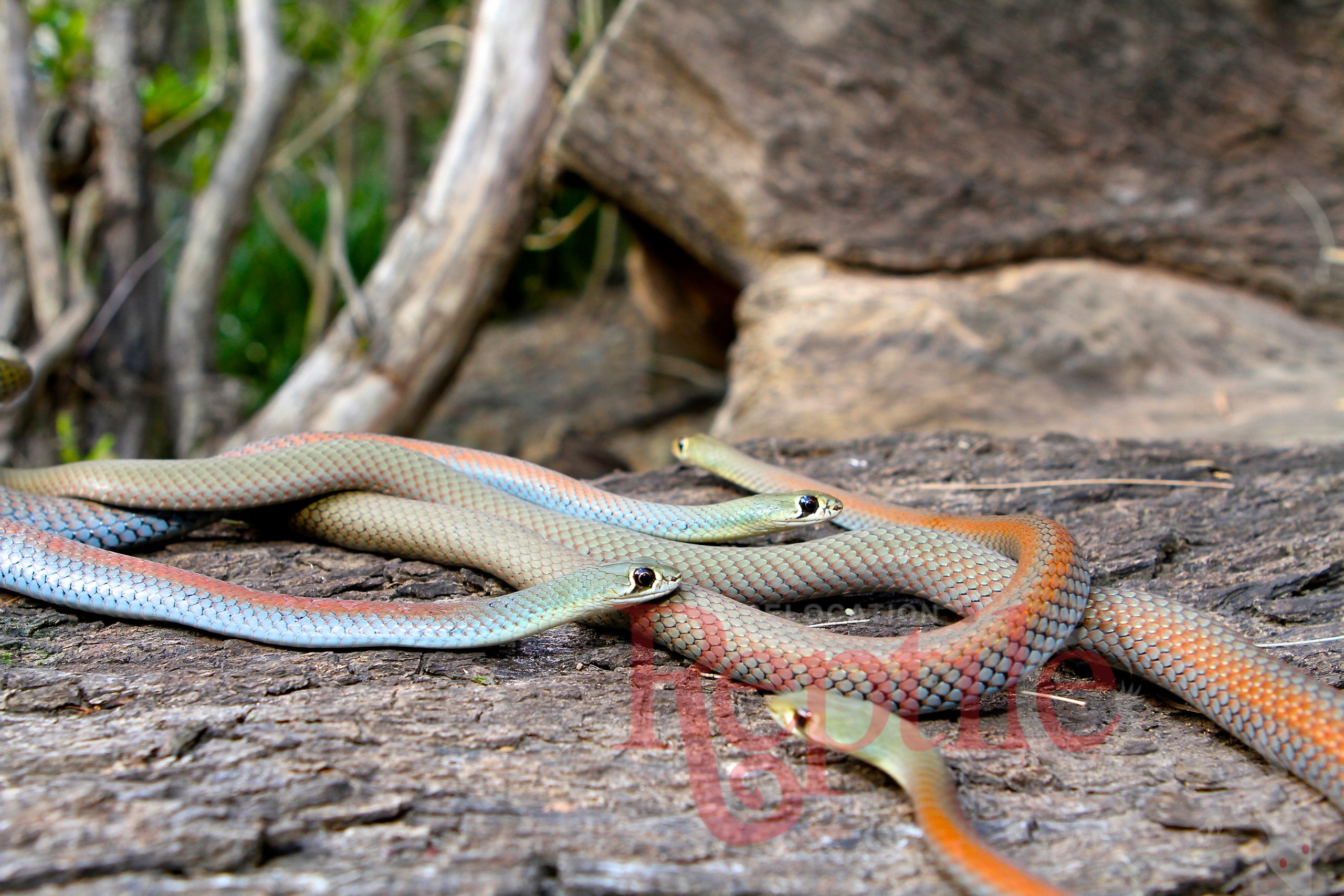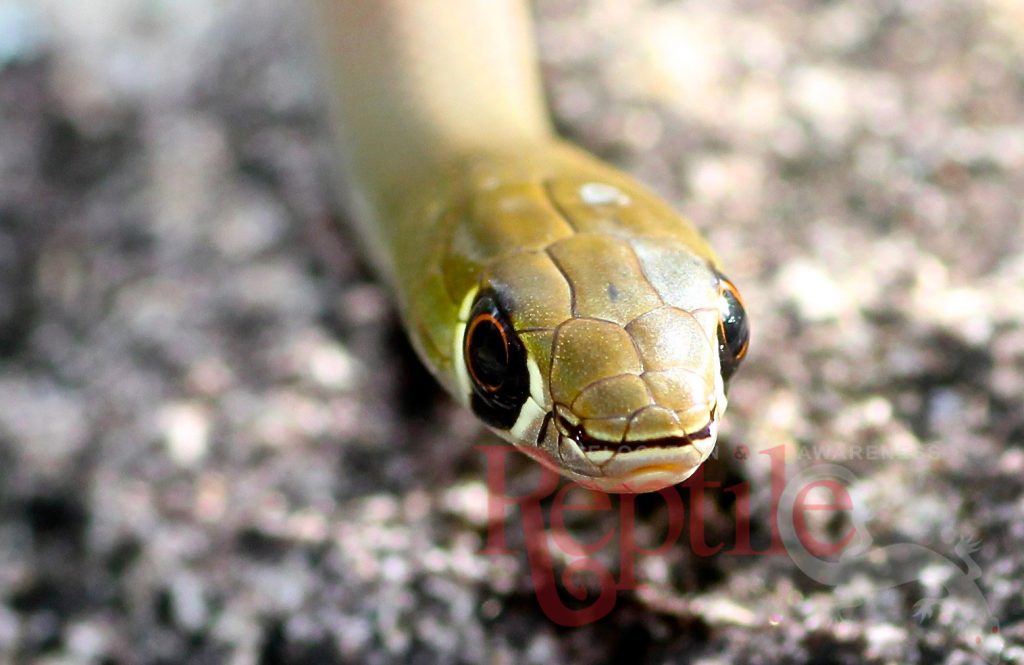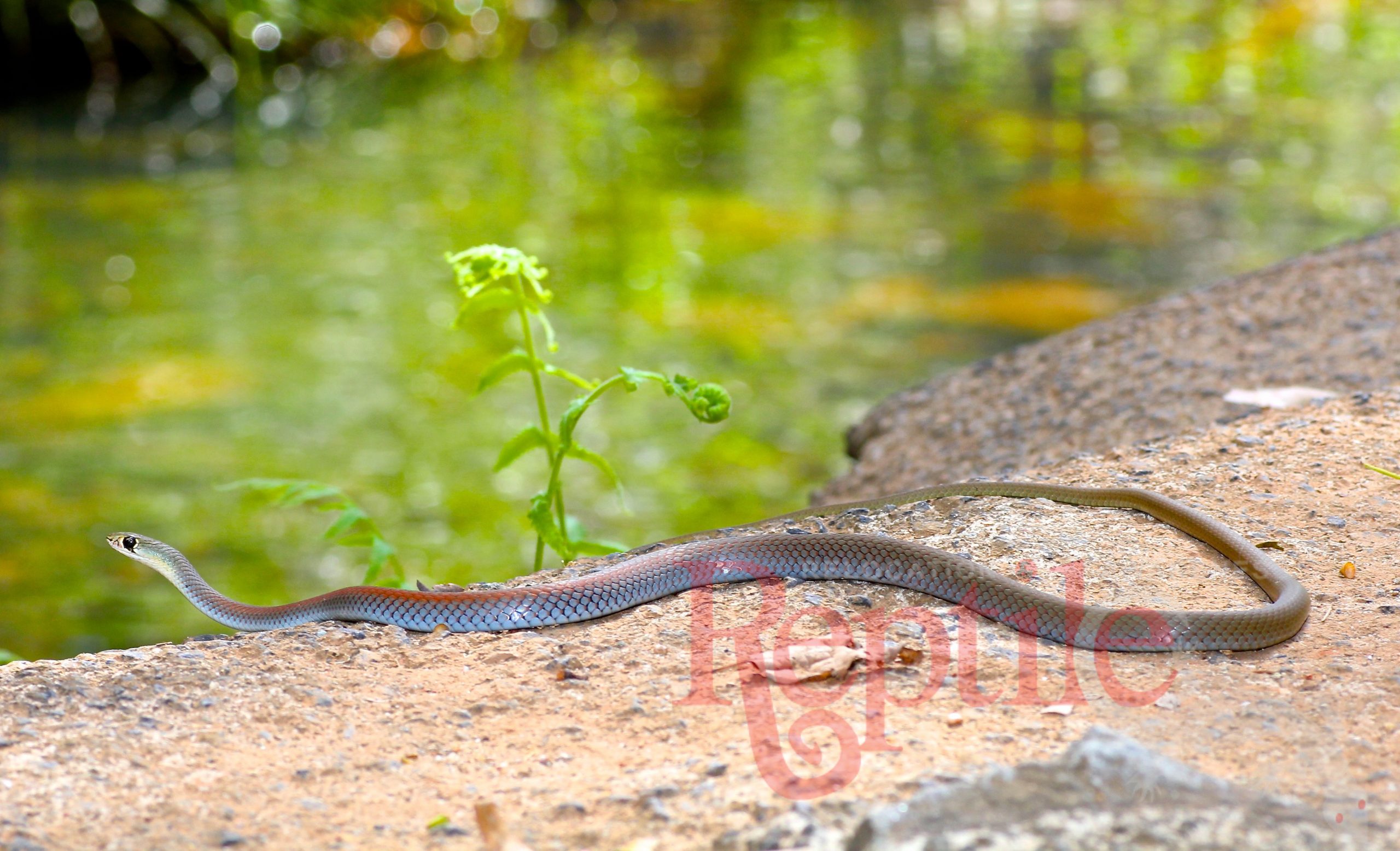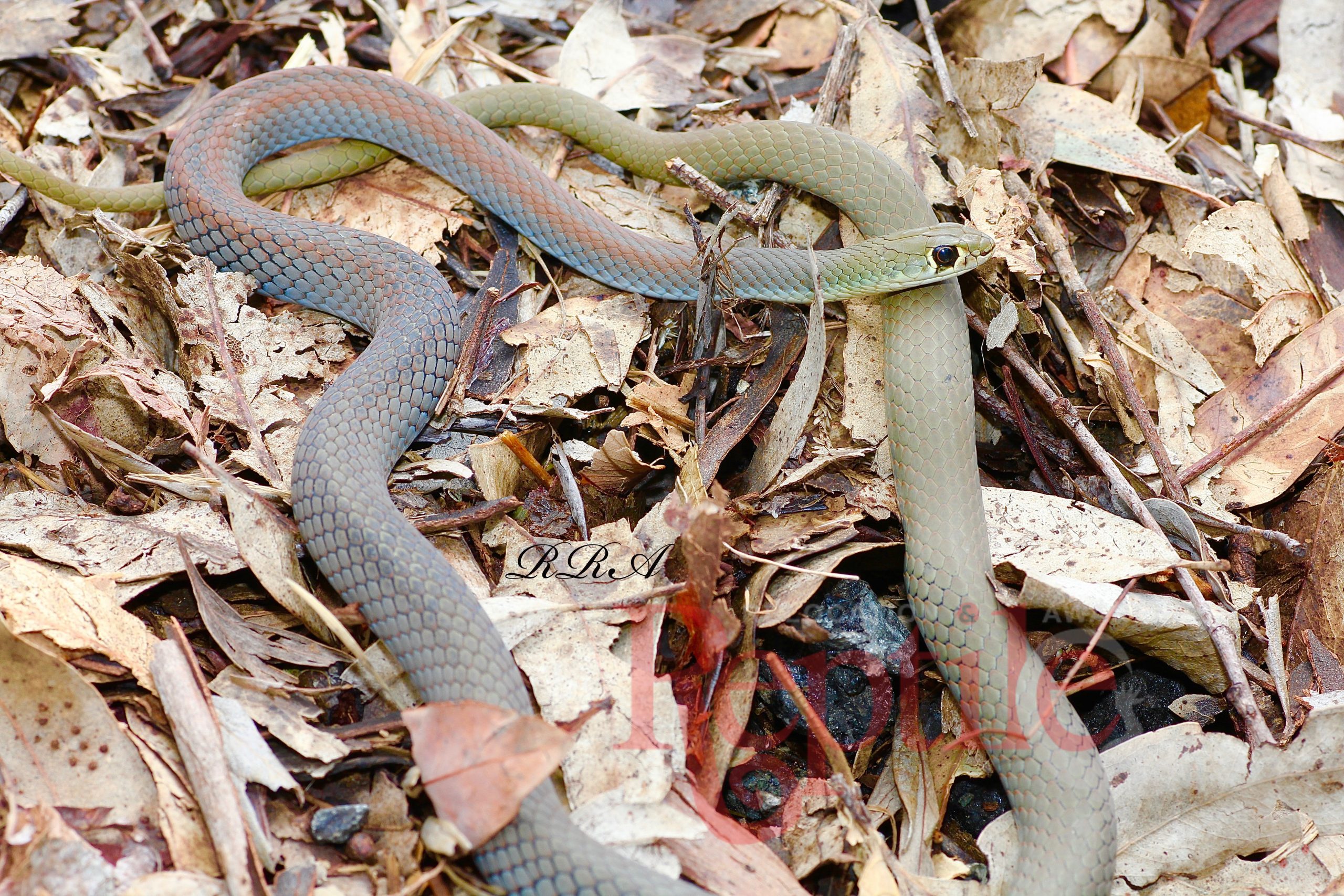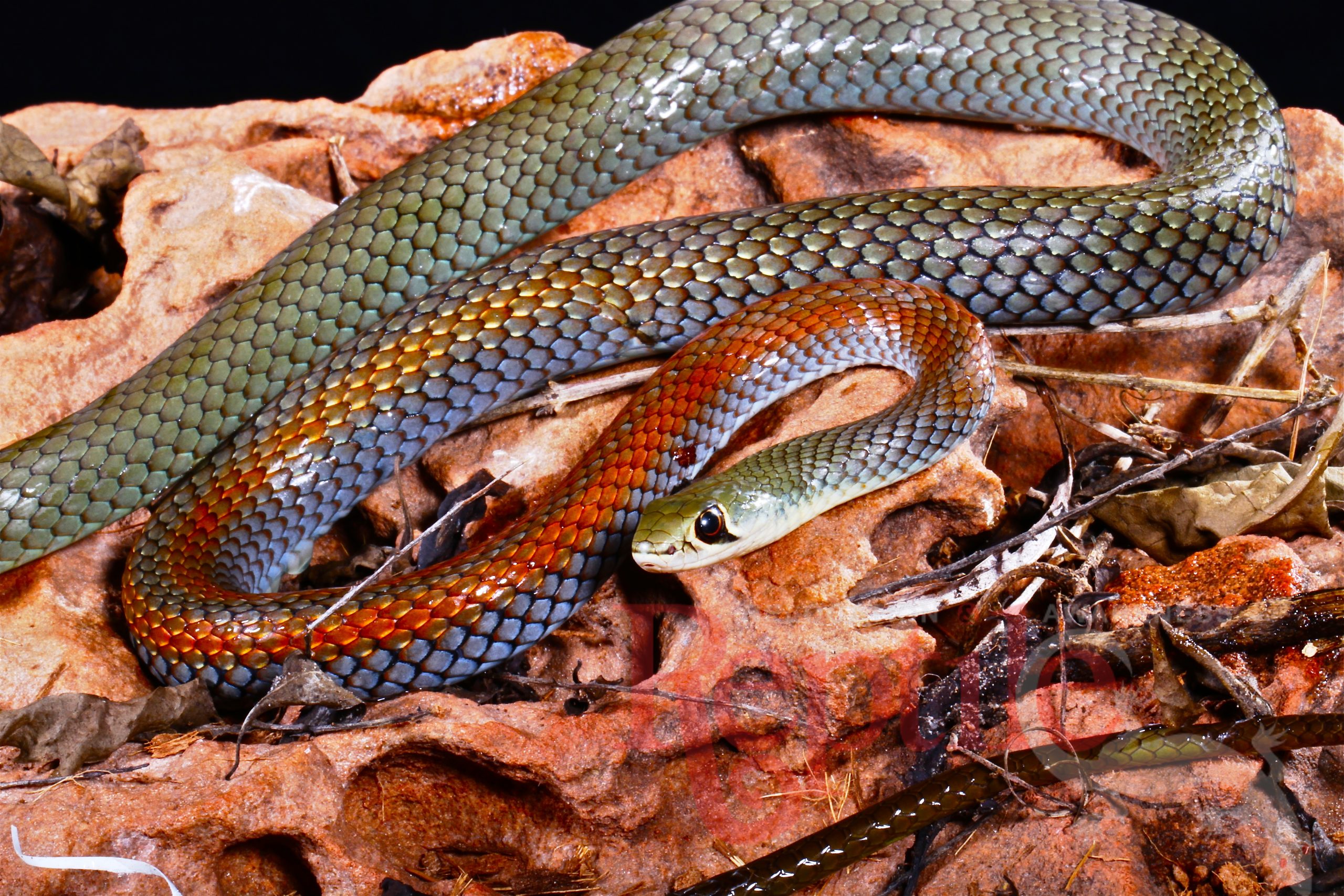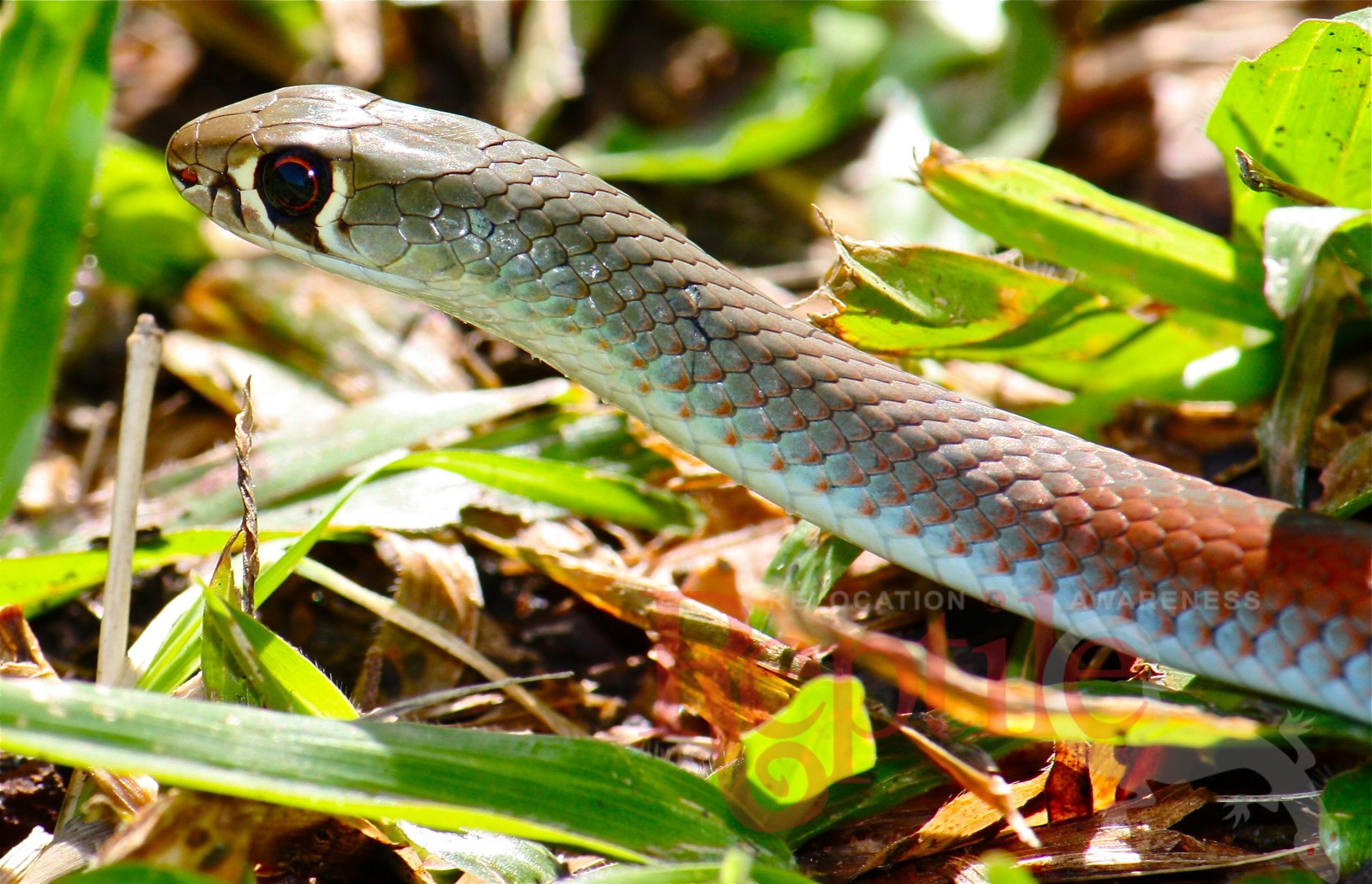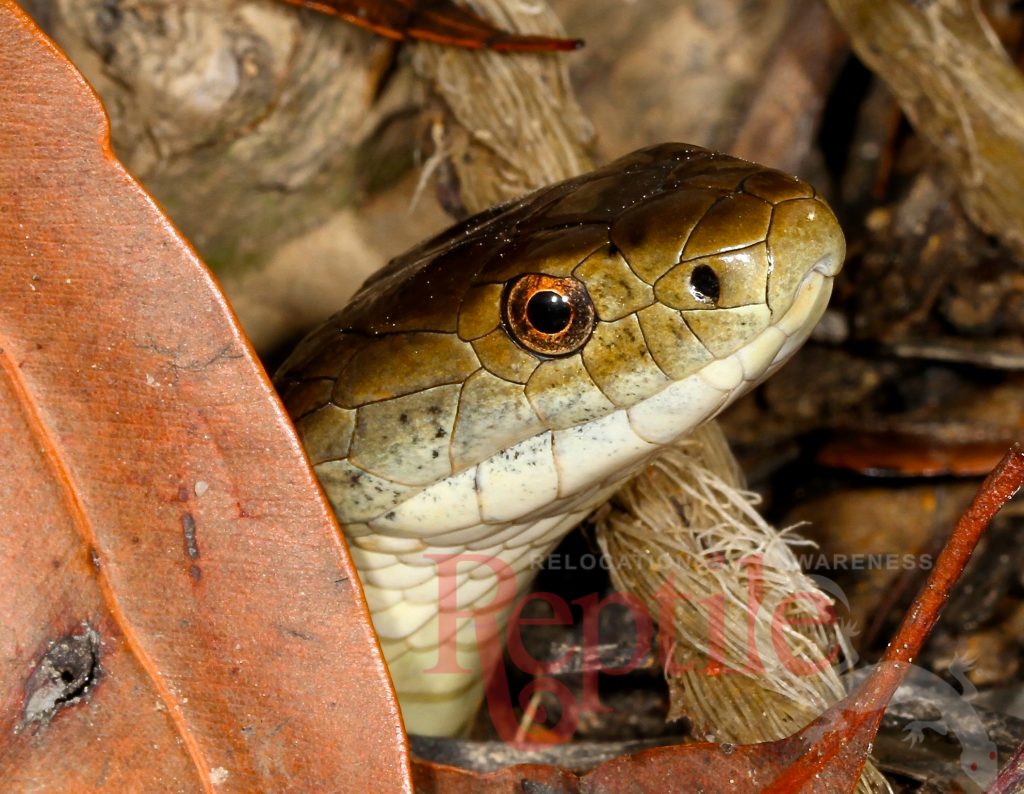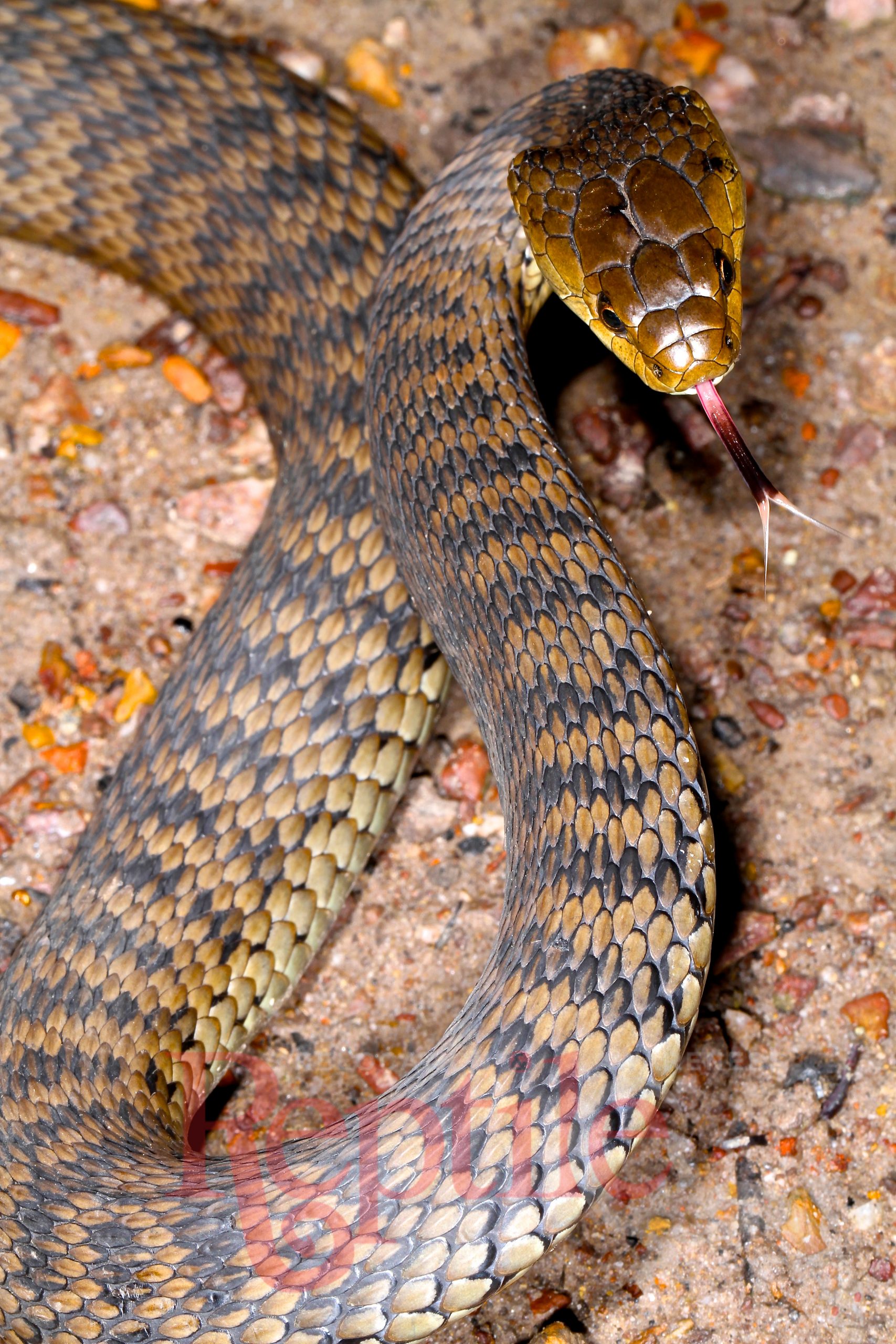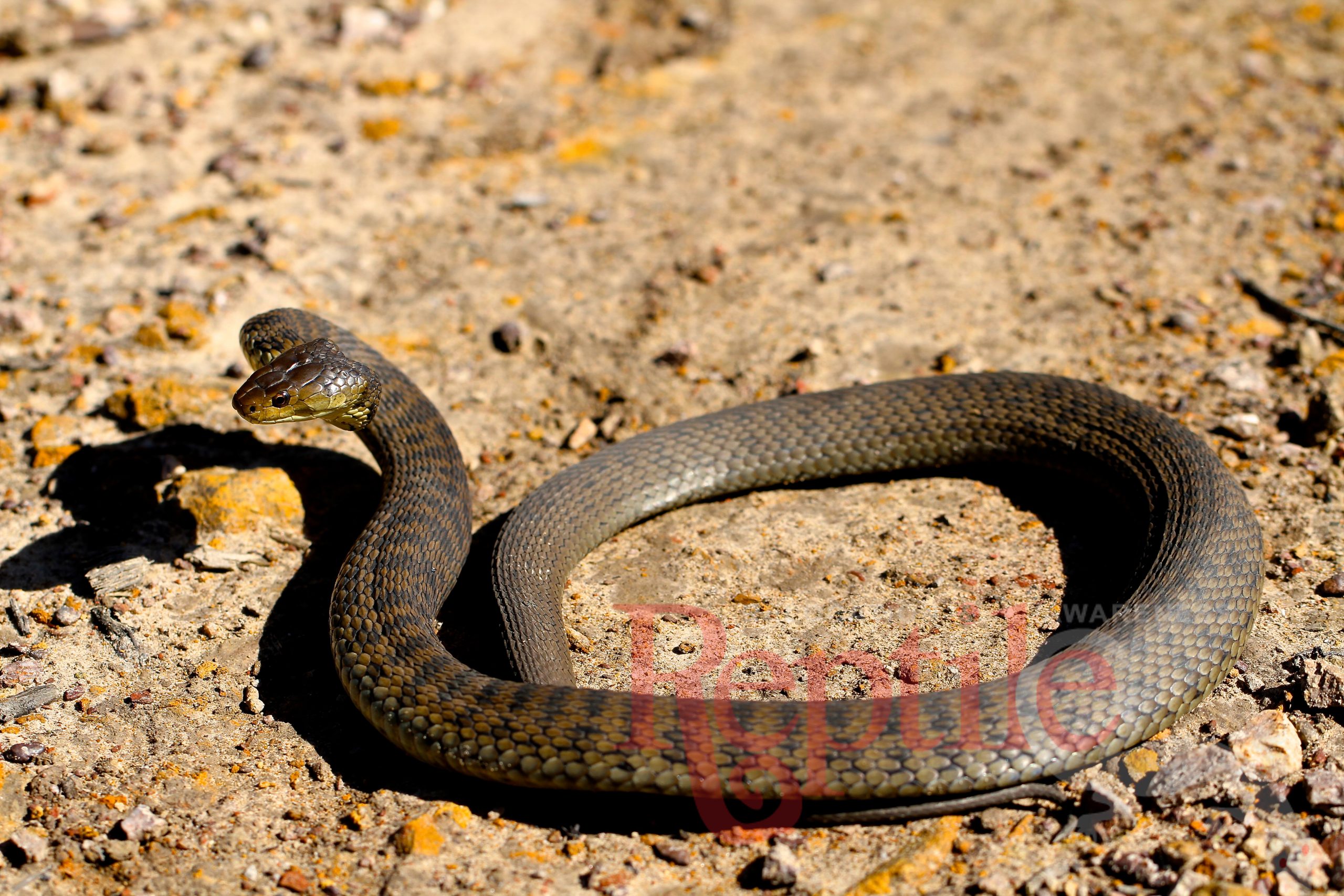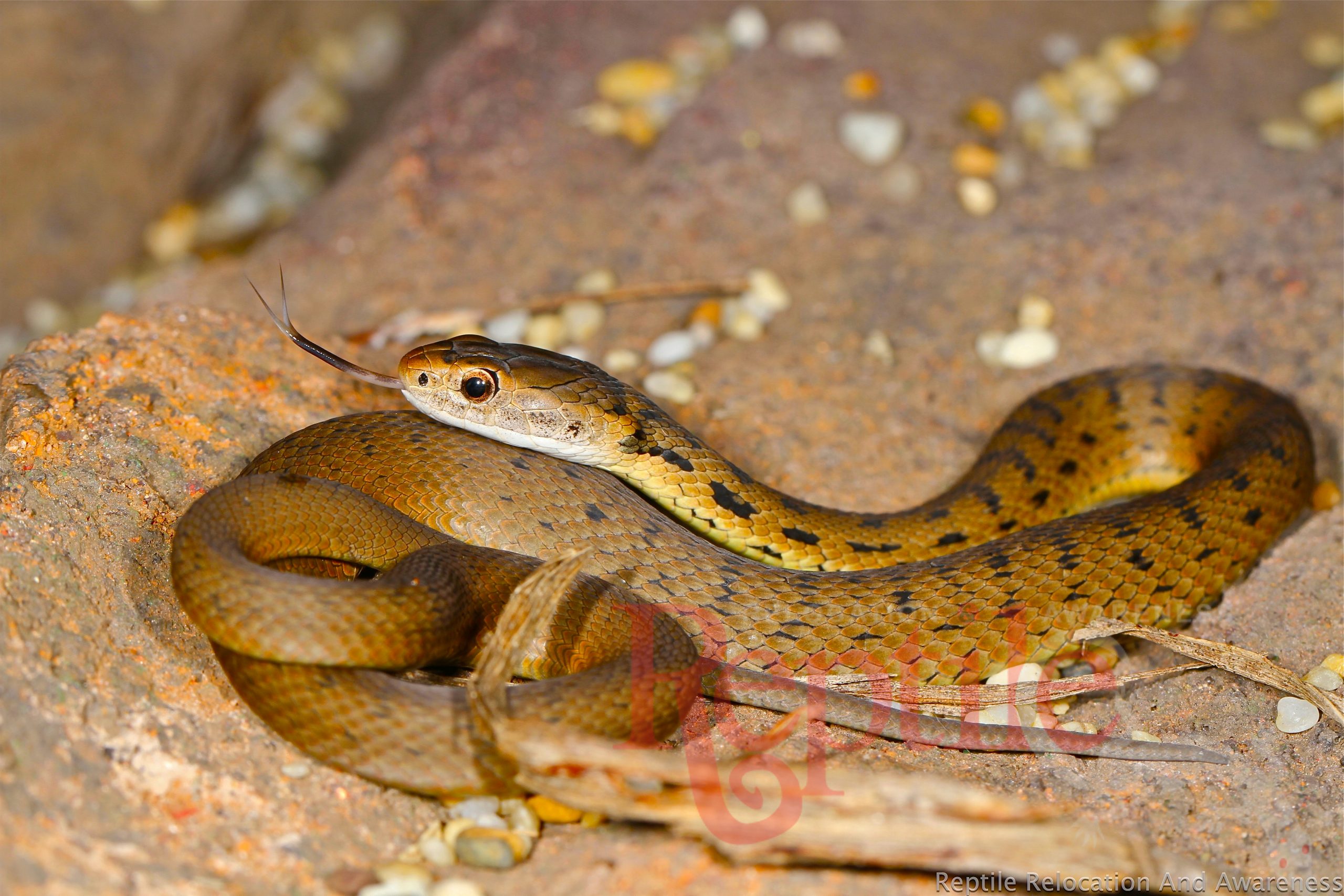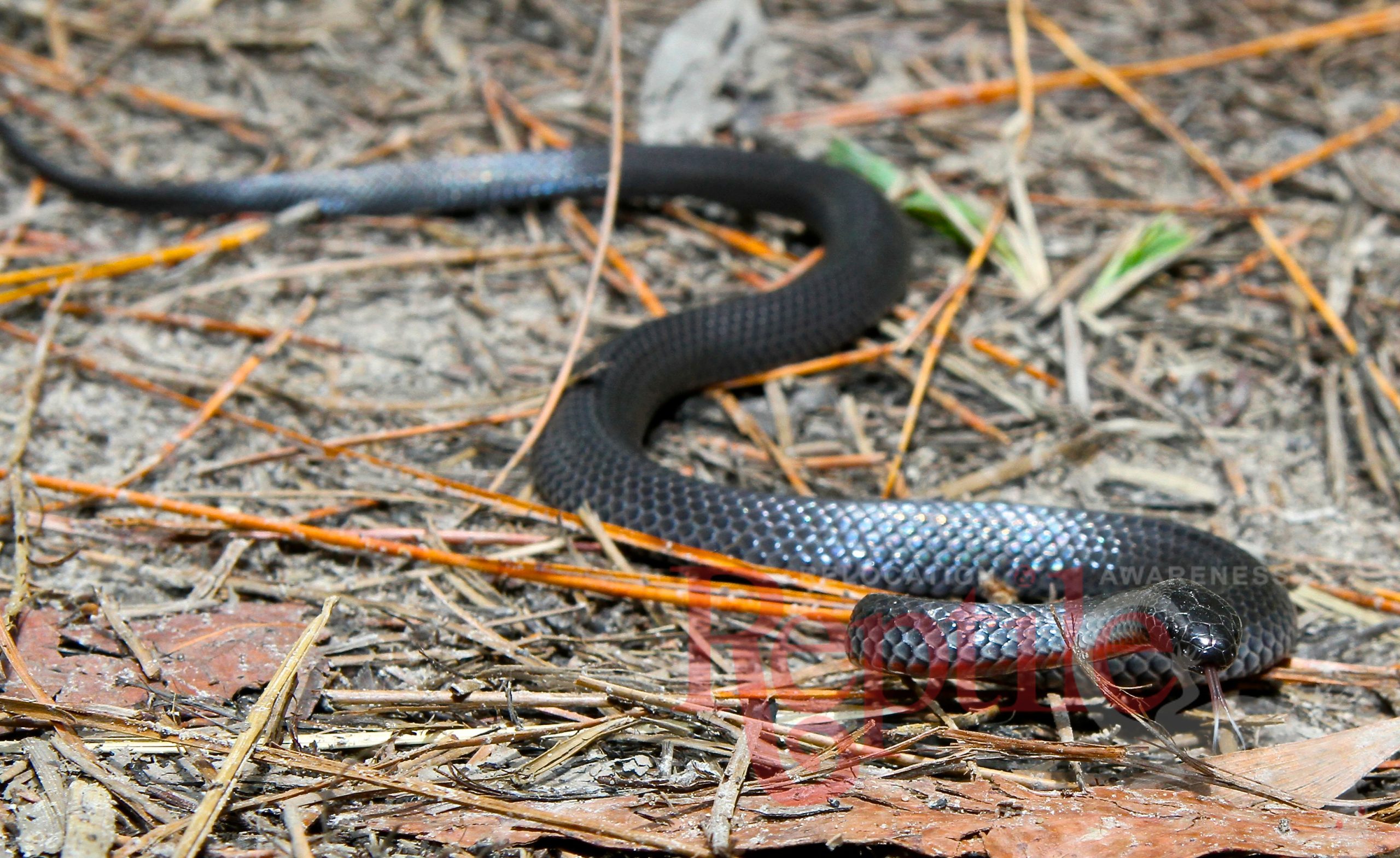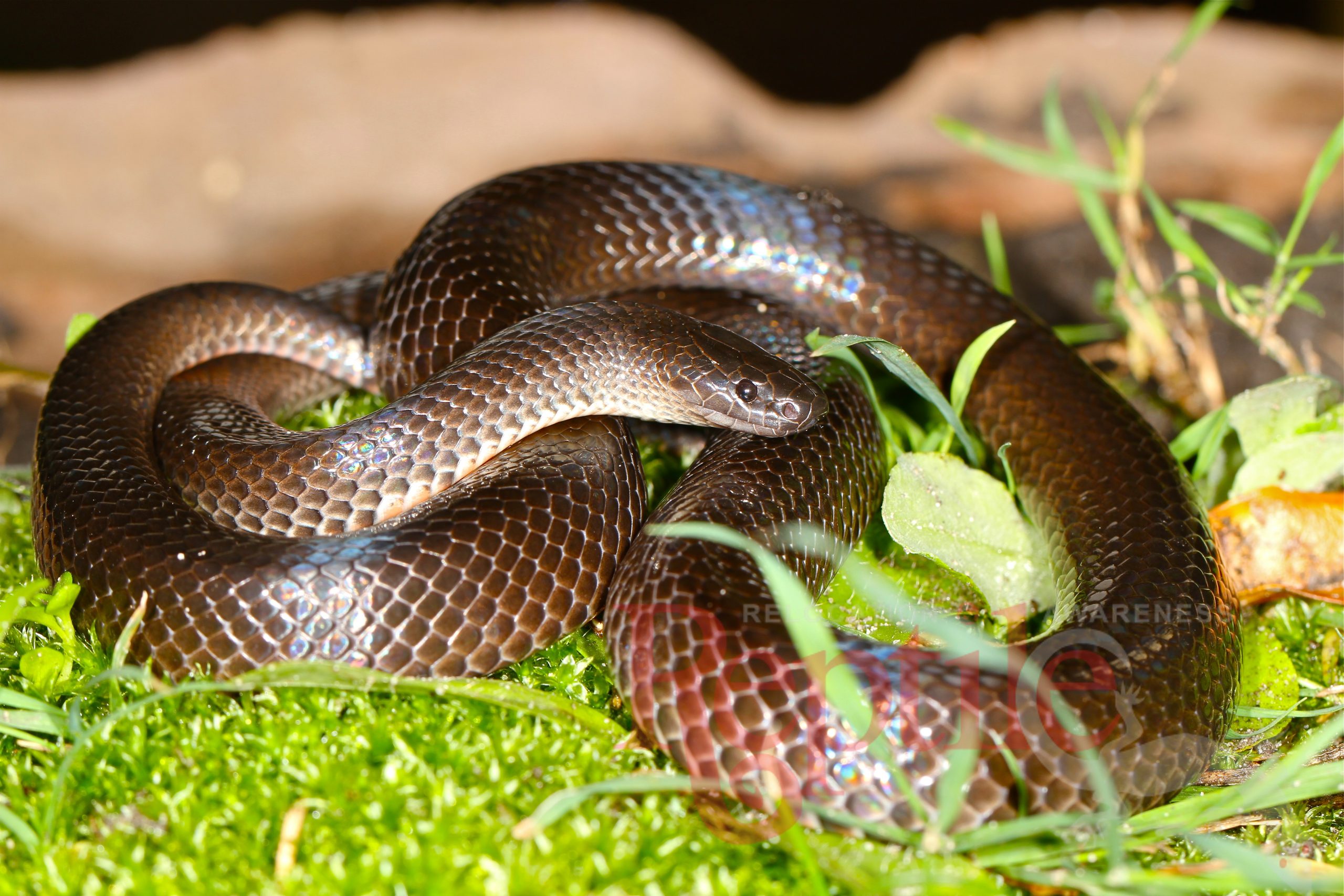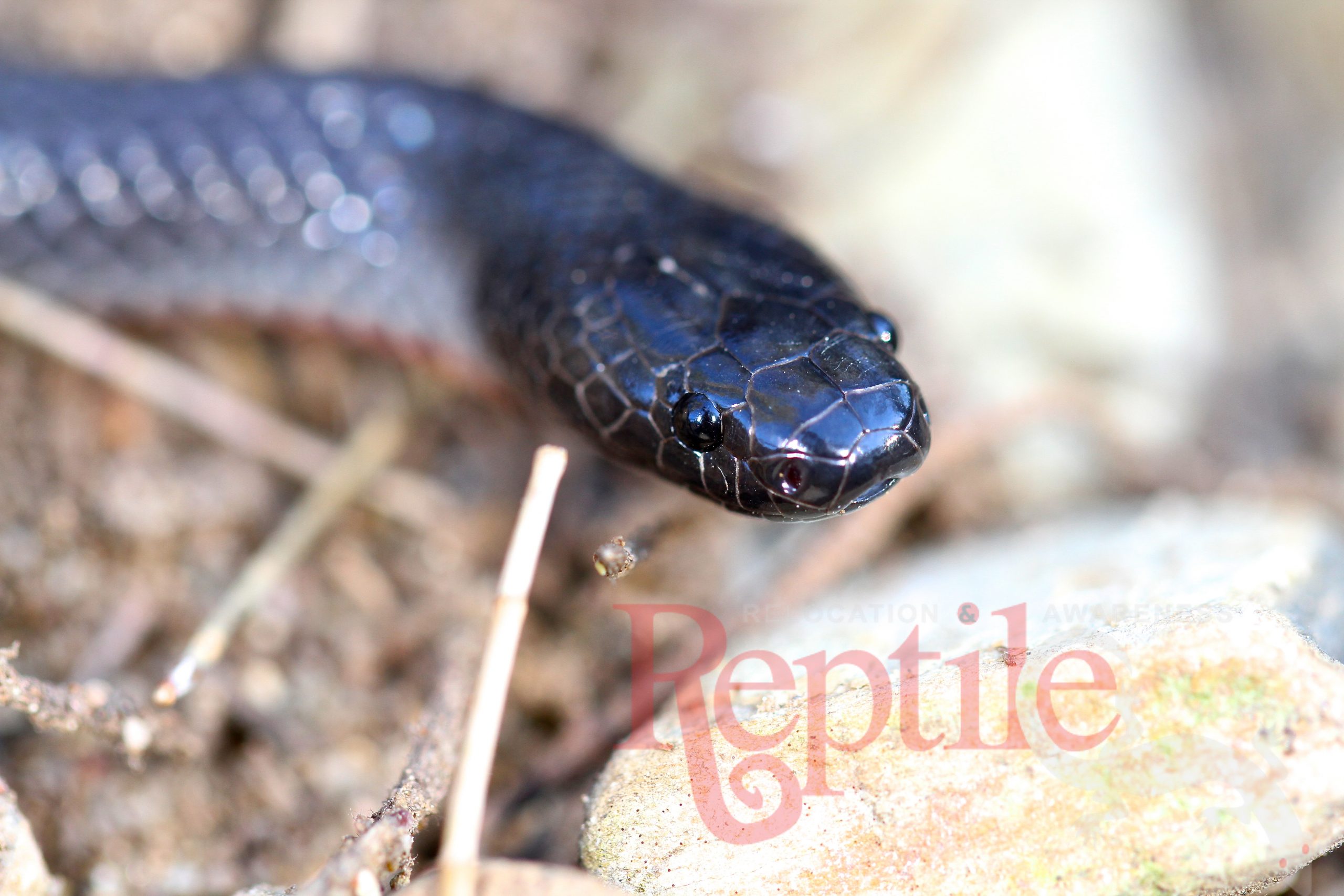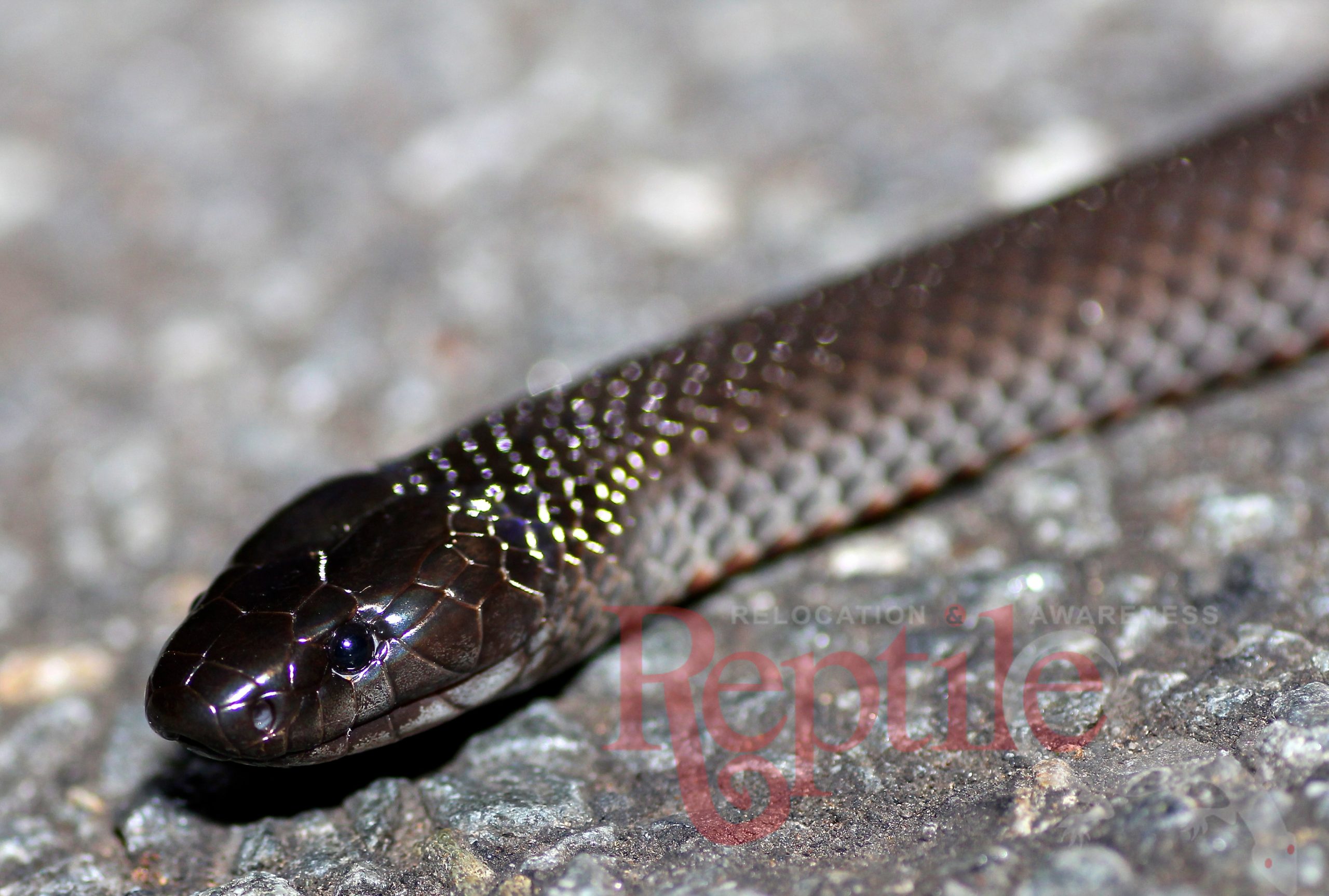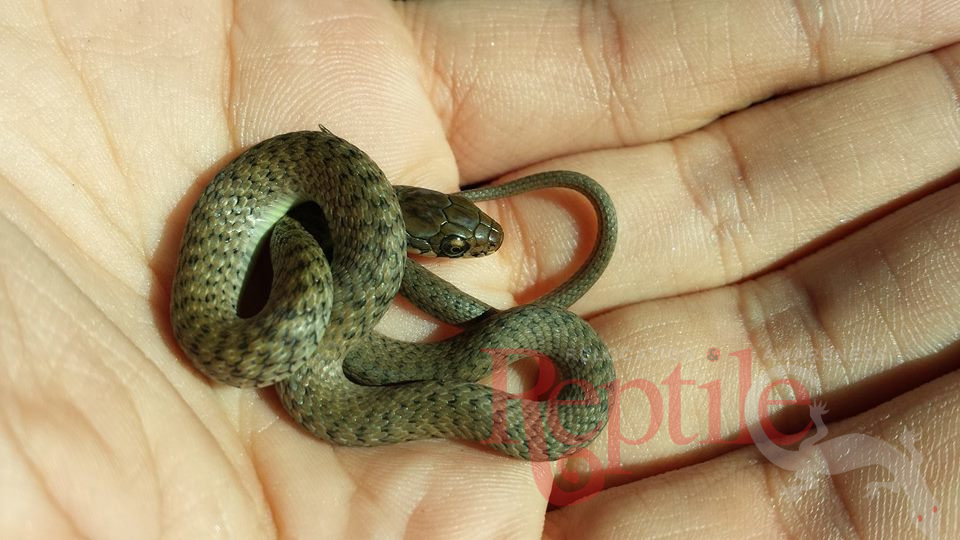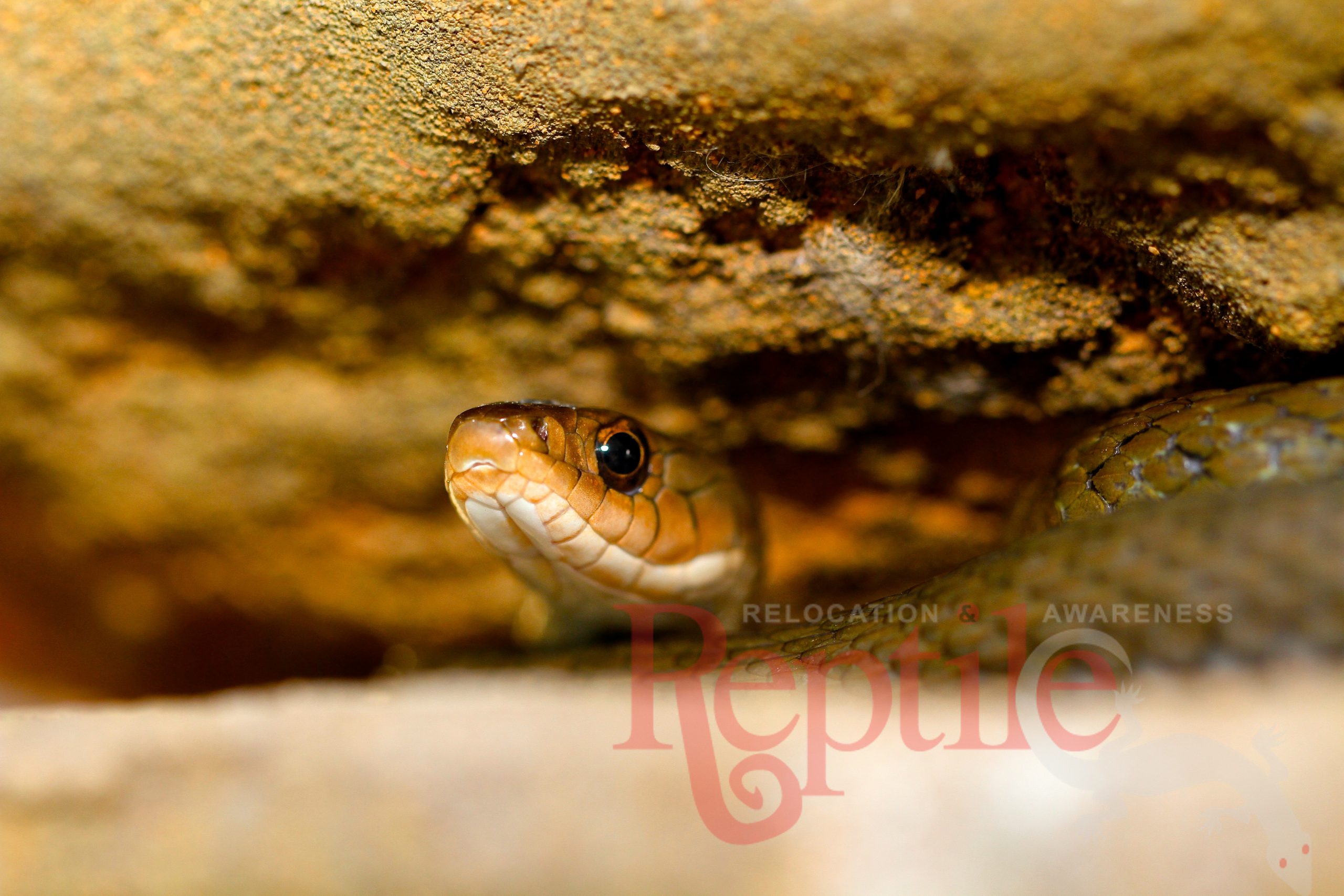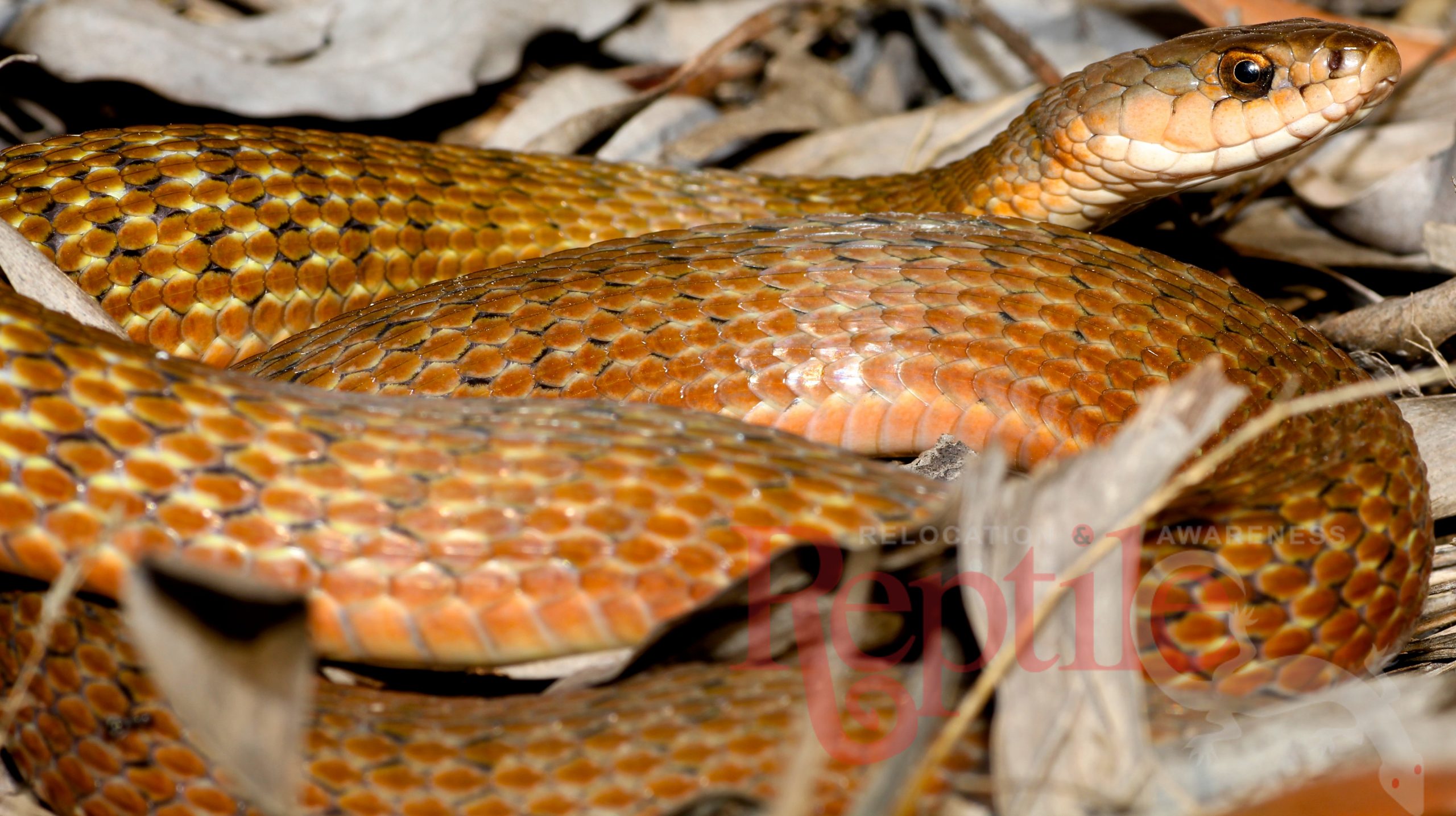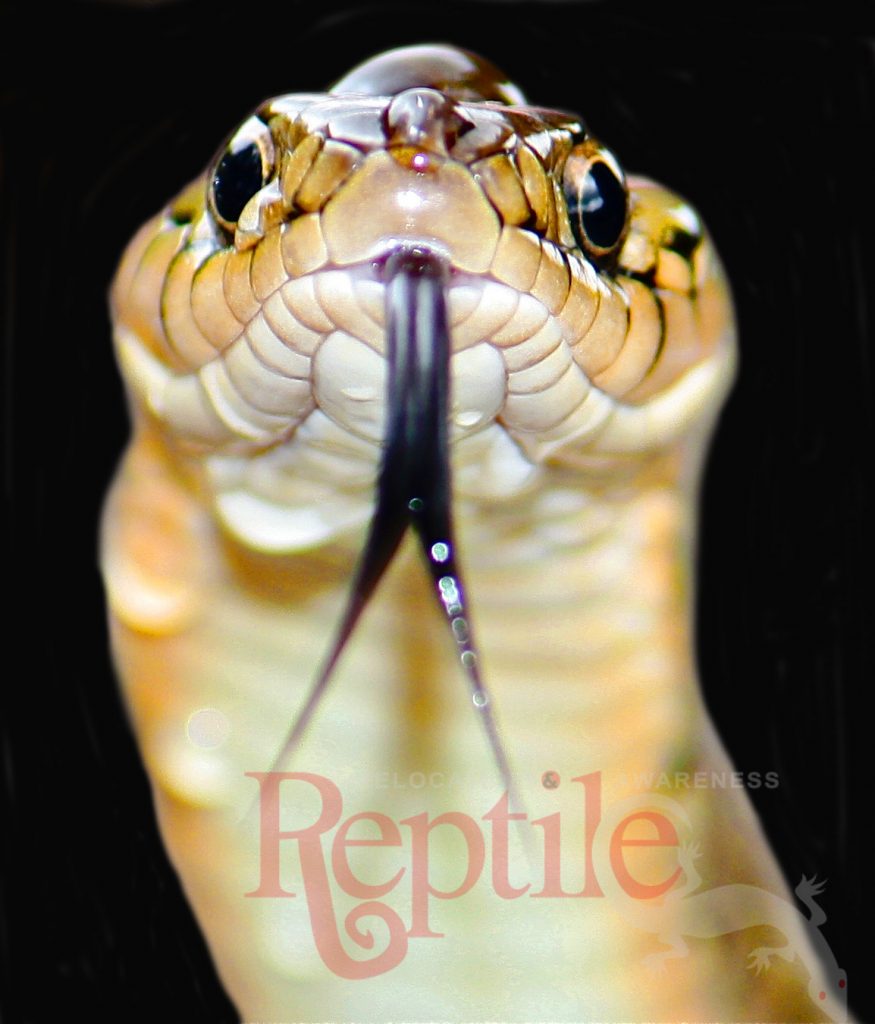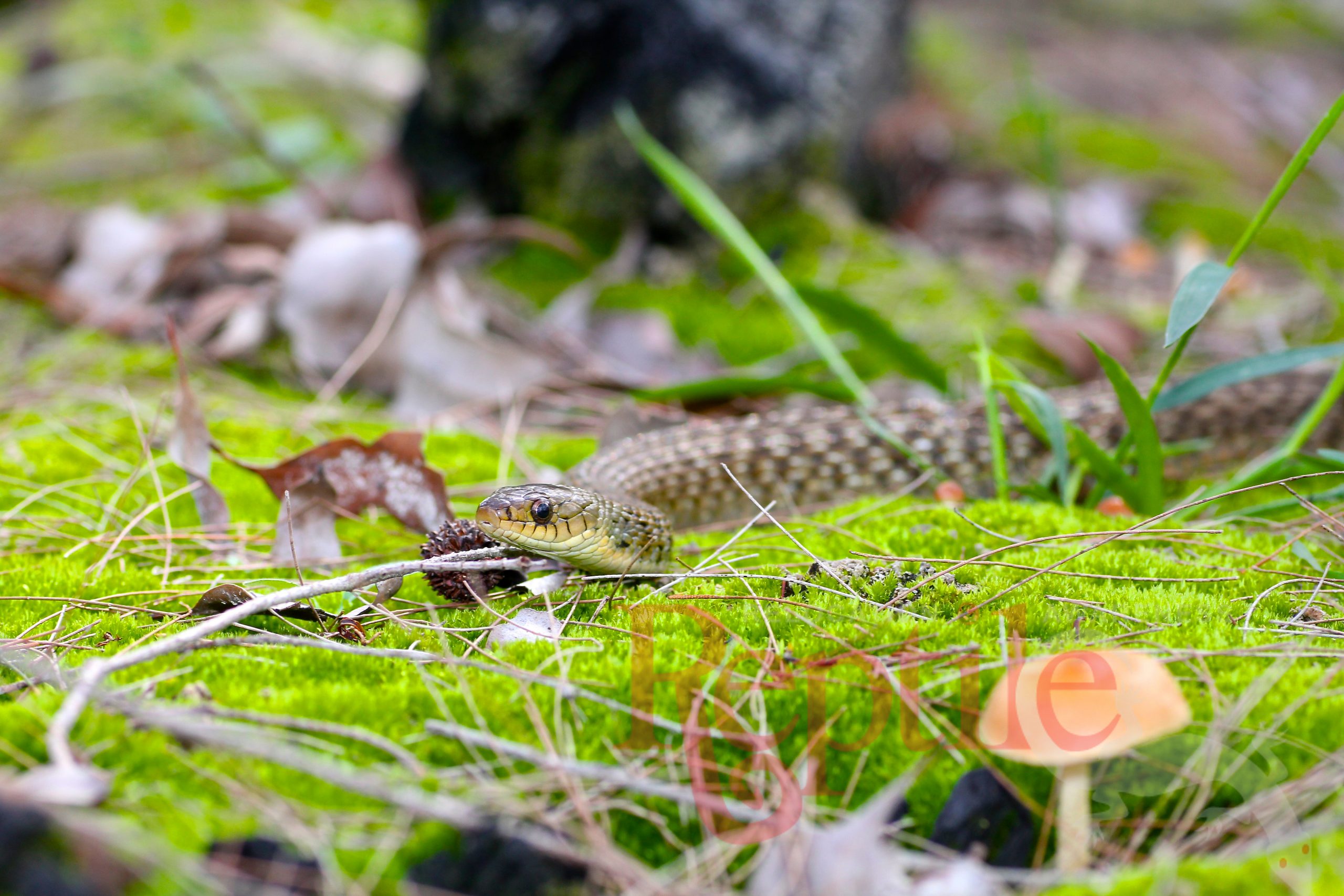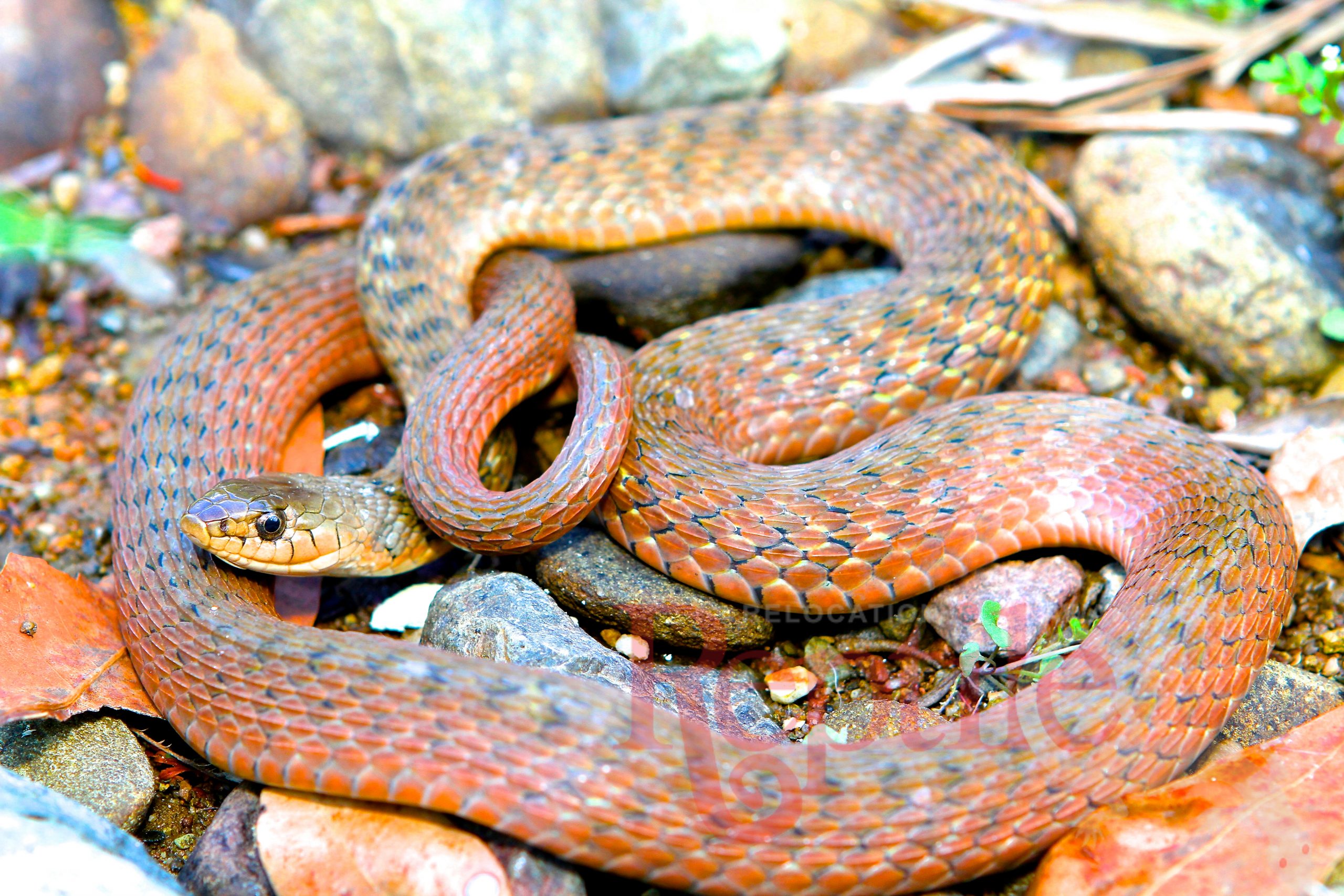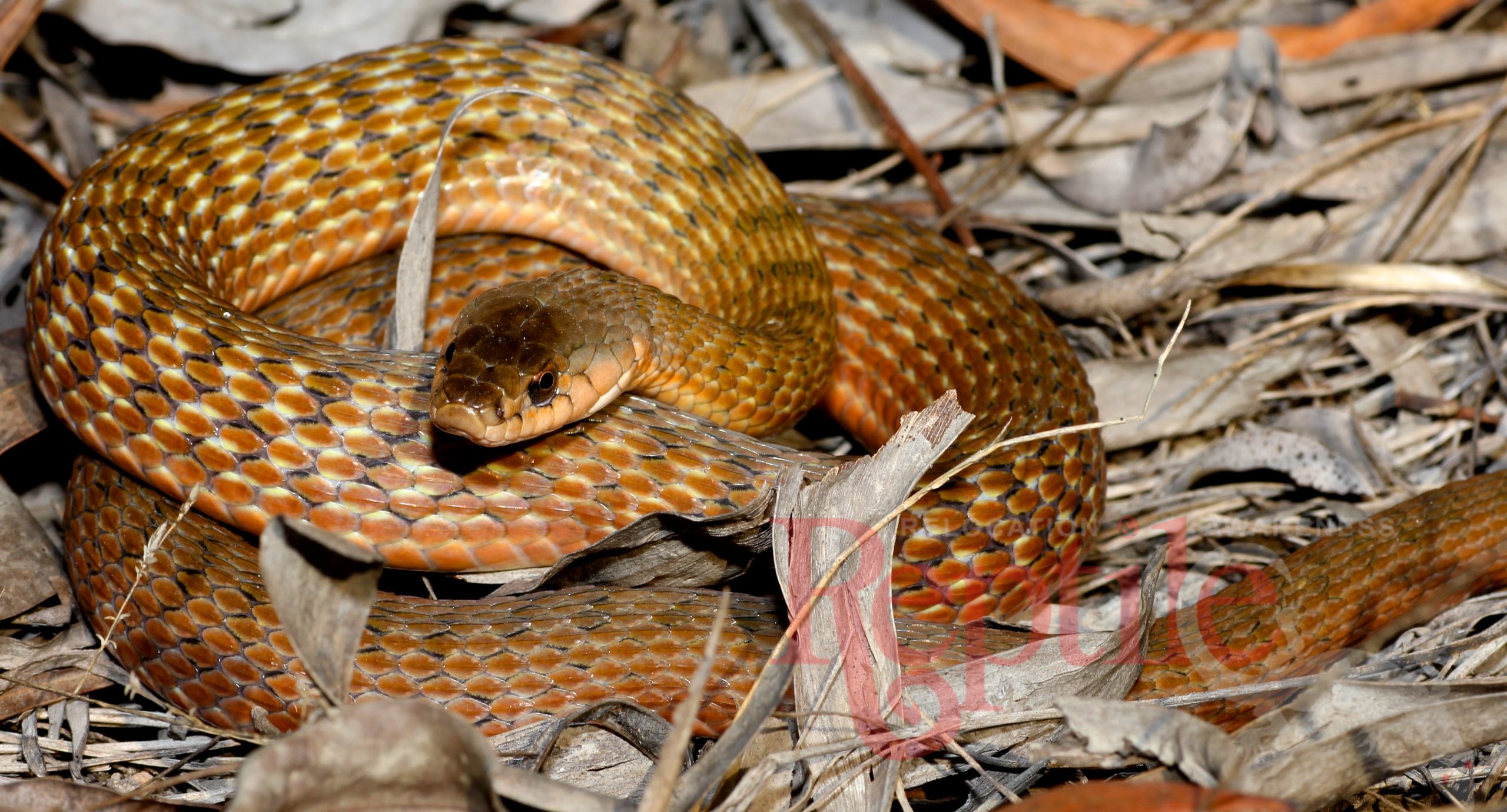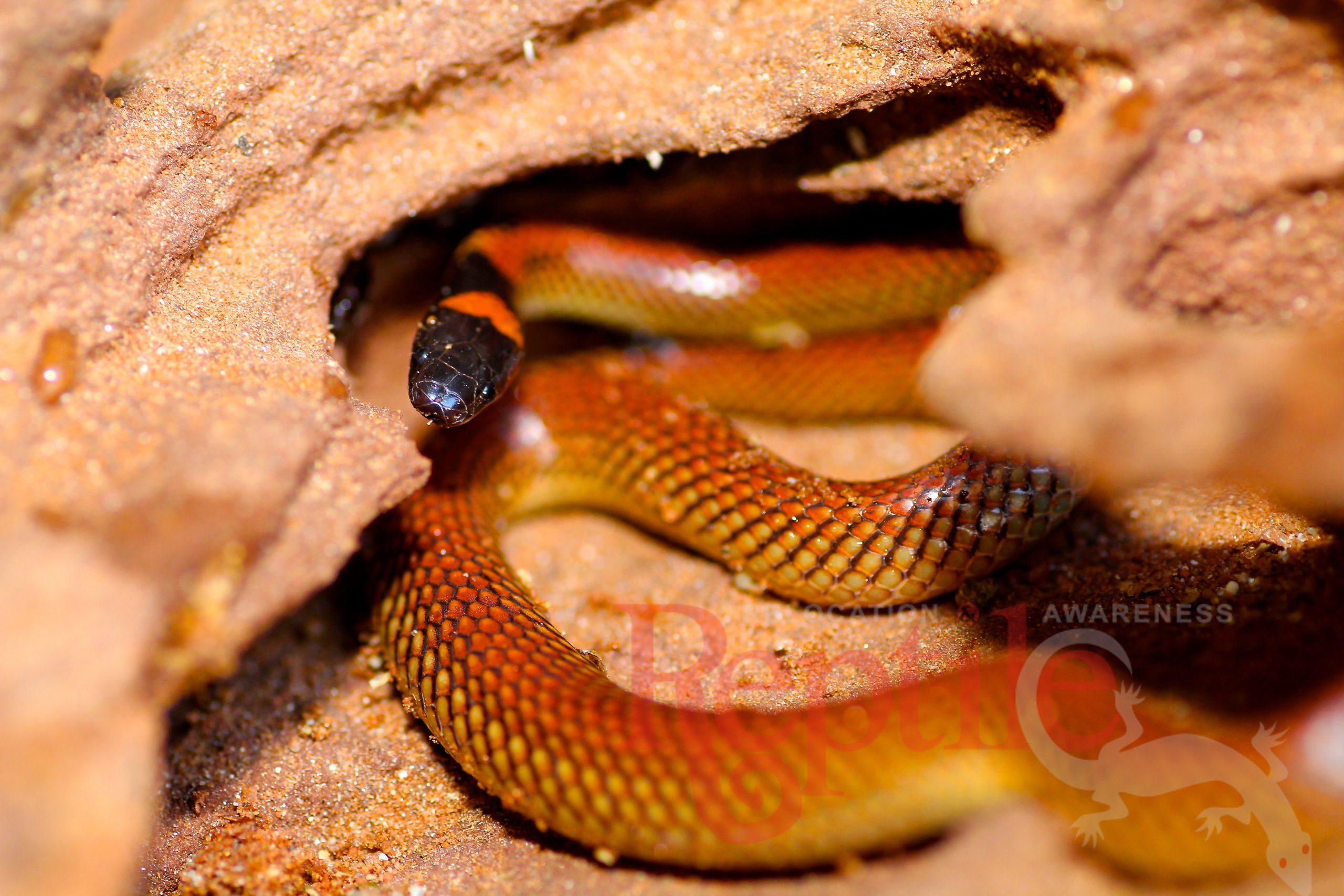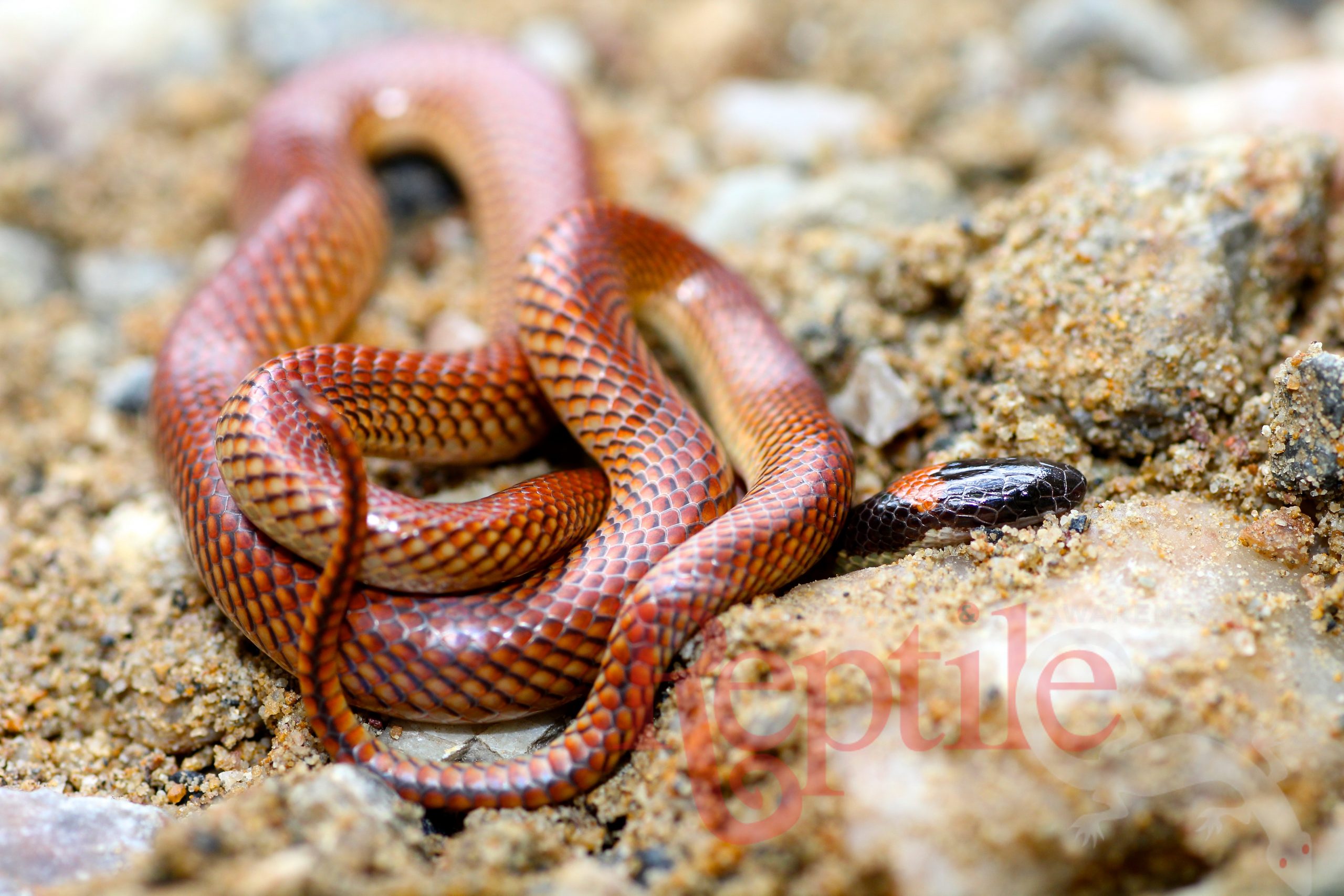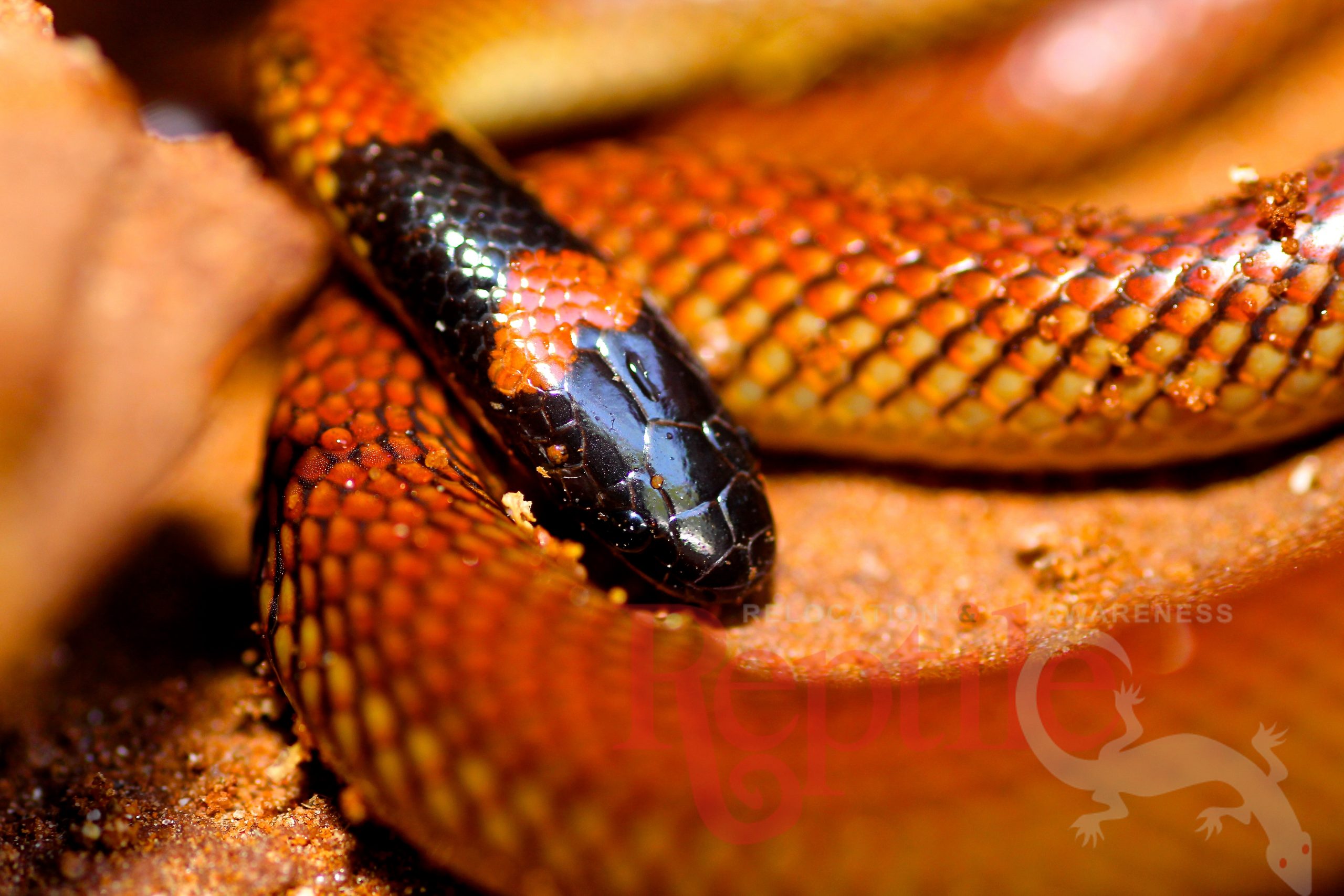If you have a snake that has made itself at home at your property or business give us a call. For your assistance and to help us identify your visitor use our Snake Identification list below to find out more about the repitle you are dealing with. Sometimes our Snake Identification list may not assist dont worry Tony can identify any snake by description over the phone.
The Bandy Bandy Snake
Now here we have a very cool little snake only growing to around 75 cm. He is a slightly venomous but very, very pretty snake with vivid white bands. The activity of this snake is very different as he lives underground only surfacing due to heavy rain and he only eats a very rare snake, the blind snake, who also lives under ground. If you should find one of these guys and it gets threatened by you its defence is also very different; it lifts its body up into a loop to warn you and if you upset it a lot it will give you two loops. Fair call don’t you say?
The Stephens Banded Snake
This small but highly venomous snake grows to a meter in length and is often mistaken for pythons or the bandy bandy because the Stephens Banded snake more often than not, is heavily banded (although I’ve seen plenty without bands at all or very dull and not so noticible bands!) This snake has a very wide head and is ready to defend itself if need be. He is a nocturnal snake that loves geckos and frogs and birds or mice. The bands on these guys are all over the place and not at all uniform (where as the bandy bandy has perfect neat and bright white bands).
Death Adder Snake
The death adder is a very rare snake now because of the cane toad, but some populations still exist on the coast. This dangerously venomous snake is more active at night and only grows to around 80 cm. This snake can be any colour with or without bands but he is hard to miss being a very short fat snake with a tail much thinner than the rest of his body. This guy eats anything small enough to fit in his mouth and depends more on camouflage rather than to go and actively hunt breakfast. This snake has 8mm long fangs and is the fastest striking snake in the world so don’t try and play with one if it’s in your backyard! Please call me or do a search on my YouTube channel for more info.
Brown Tree Snake
The brown tree snake is a fairly common snake found nearly always having a nap during the day curled up on a rafter or similar, as this fellow is nocturnal and it’s ever so slightly venomous (nothing to worry about). His main diet is birds but he also knocks off rats and mice. He will grow to nearly 1.8 metres. He is a climbing snake and is nearly always up off the ground. His colours do vary a little as some have no bands and some are very heavily banded and this is how they get the nickname (the night tiger). These guys nearly always have the bright salmon colour belly and a noticeably larger head to the neck, and its eyes are huge. These are a rear fanged snake that has quite a daunting defence posture pulling back into the “S” position ready to strike. Please call for more info or search my YouTube channel for this species.
The Common Tree snake
The common tree snake is as harmless and as its name suggest. A very common snake it’s one of the three snakes that is as happy in the trees or on your roof as he is on the ground. These guys vary unbelievably in colour and grow to about 1.5 meters. A few things that you will notice is how thin they are for the length of the snake and he usually lifts his head up high to look around when approached and people often perceive this as a threat. All tree snakes when cranky will puff up and show blue dots that are under each scale. Most have yellow bellies but some will have blue or grey. These guys come out at day time and are more common around areas that have water and frogs as that is what they eat, frogs. These guys are sensitive to high temps and often venture inside your house to cool down. Please call for more info or do a search on YouTube for green tree snake.
Eastern Brown Snake
The eastern brown snake is a highly venomous snake with a short fuse, let it be known that no snake on this planet will chase you, but some are a little more defensive than others and the eastern brown is not a snake to upset! He is a very common snake found in all suburbs. He will grow to 2 meters and the colour of these guys vary unbelievably. They are active at day time chasing there feed of rats and mice. These snakes are normally very shy and avoid contact at all costs but when threatened they stand up with the signature “S” shape ready to strike; they can strike 12 times in two seconds so these are a snake you should call about if you think you may have one in your yard! For more info please call me or see my YouTube videos; just do a search on eastern brown snake.
Red Bellied Black Snake
The red bellied black snake is a venomous snake that is fairly common in some areas of south east QLD. He grows to 1.8 meters and will vary a little in colour. The red belly black snake is usually found around waterways due to his favourite food, the frog, but red bellies are very cannibalistic and will eat other snakes and lizards. These guys come out during the day and are easily spotted by the shiny black back of the red belly. One of the most common misconceptions about the red belly is the mix-up between him and a more commonly found snake; the eastern small eye snake (see his description for details)… For more info on this snake please call, or search red belly black on YouTube….
Carpet Python
The Carpet python is a very common snake found in all suburbs. He is a non venomous snake that is usually found active at night. He grows to 3 meters in length and his preferred food are rats, mice and birds. Although a fairly placid snake, he will defend himself using his hundred or so teeth if disturbed. Keep in mind these guys start off small and grow to a large size and vary a lot in pattern and colour. For more info on this snake please call me or see videos on YouTube, just do a search on carpet python.
Tiger Snake
The tiger snake is very rare on the gold coast due to introduction of the cane toad, although I have caught and seen some; usually at the very top of the mountains in hinterland where the cane toads have not reached yet. The tiger snake is highly venomous and grows to 1.5 meters in length. This snake has a very daunting defence posture. The colour of these snakes are endless; all patterns and shades of the rainbow are possible. For more info please call or search my YouTube channel for videos.
The Blind Snake
Now for another interesting snake who is quite common yet rarely seen as he lives under ground and eats only ant eggs, he is usually no more than 20 cm, although twice in one night I seen them over a meter. These guys look and act like a worm and if you touch one they are non venomous but they secrete an ooze that is the most horrible smell you will ever smell! So if you have a hangover the answer is NO don’t go near him. This bloke will be forced above ground during periods of heavy rain and your cat will bring them in to you. Good luck with that smell!! For more info please call or do a search on this species on my YouTube channel.
The Pale Headed Snake
The pale headed snake is very rare.. well I haven’t seen one but I hear they can be found! As I type this I’ve done over 12,000 snake relocations and not been called out to one but they are nocturnal and highly venomous. Please call if you think you have one as you can see I need to get more photos of them lol!
The Dwarf Crowned Snake
The dwarf crowned snake is a fairly rare and very small nocturnal snake that is slightly venomous and he loves lizards to chew on. The crown as you can see is fairly small compared to its cousins, but the way you will know its him is by his belly, the distinct yellow arrows all the way down. He also has a strong dose of little big snake disease, he will stand and fight anything. For more info please call.
The White Crowned Snake
Ok, the White Crowned Snake is a fairly common snake that is active at night and grows to around 50 cm. It is slightly venomous and its favourite food are the little lizards and geckos you get running around your house. This guy can be a lighter grey to nearly jet black with a cream or even yellowish crown, but most commonly a pure white crown around the top of his head. This bloke is often dragged inside by the friendly cat and dropped in your bedroom.
The Golden Crowned Snake
The golden crowned snake grows up to 50cm and is a nocturnal snake that is slightly venomous. He eats lizards and is fairly common up in the mountains or hinterland. The crown on this snake can vary in size or brightness a little but you will notice the red belly of this snake and the dull brown body. For more info please call me or search this species of snake on my YouTube channel.
The Marsh Snake
This very small snake grows up to 50 cm. He is nocturnal and slightly venomous. As its name suggests it is found around water sources. He loves geckos and frogs and he also has a name of the ‘black bellied swamp snake’. This guy is often found stuck in swimming pools. He is a very dark grey with a lighter coloured head and he has two stripes along the side of his face. For more info please call me or search this species on my YouTube channel.
The Yellow Faced Whip Snake
The yellow faced whip snake is a fairly common snake that grows to 60 cm long and is mildly venomous. These guys are active during the day and feed on small lizards they are often found around rock retaining walls and the good news is they are communal, so if you’ve seen one expect a few more. The colours of these vary in that some have more red on the back of the neck than others. For more info please call me or search YouTube as I have many videos of these guys on it.
Roughscale Snake
The roughscale snake is a highly venomous snake that grows to a max of 70cm, it isn’t all that common unless you live in rain forest style areas. This small snake is the snake that keeps me on my toes the most out of all gold coast snakes. It is very defensive when provoked and is very quick. Its main diet is geckos and frogs, although it also will be found around bird aviaries trying to get mice. It is most active at night and unfortunately because of its name the poor keelback often gets mistaken for these guys. The roughscale varies a lot in colour; some having dots, some are heavily banded, some are green, grey, or brown. For more info please call me or search roughscale snake on my YouTube channel.
Eastern Small Eyed Snake
The eastern small eyed snakes is fairly common in south east QLD especially if you live up in higher altitudes. This small snake grows to a max of 50 cm and is active of at night slowly cruising around sticking his nose in every crack looking for small lizards. This snake is highly venomous and should be avoided at all times. He is very often mistaken for the red belly black snake but the small eyed snake is dark grey with a pink belly, whilst the red belly is jet black with a blood red belly and is active at day rather than night. The eastern small eyed snake loves rock retaining walls and is also a communal snake. For more info please call me or search my YouTube channel for this species by typing in eastern small eye snake.
Keelback
The keelback is a very common snake around any fresh water as they are a semi aquatic snakes that feeds on frogs and is an animal that can eat the cane toad. He is harmless and grows to around 3 foot. The keelback is mostly nocturnal and you can identify him by his strongly keeled scales as seen in my photo. The colour of keelbacks will vary but they nearly always look like mud as they are nearly always covered in mud. Unfortunately people see his rough scales and mistaken him for the venomous roughscale snake.(see description for this) For more details on this snake please call me or do a search on YouTube under “keelback”

Please note that alll images have been taken by Tony Harrison and Reptile Relocation and Awareness and are copyright protected. Any use of the IP of these images without permission will land you in court.


